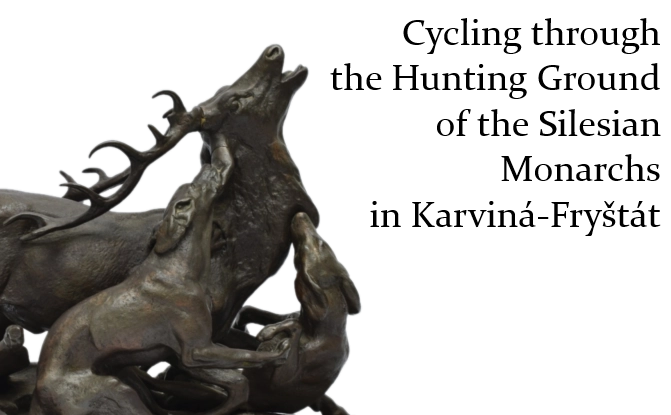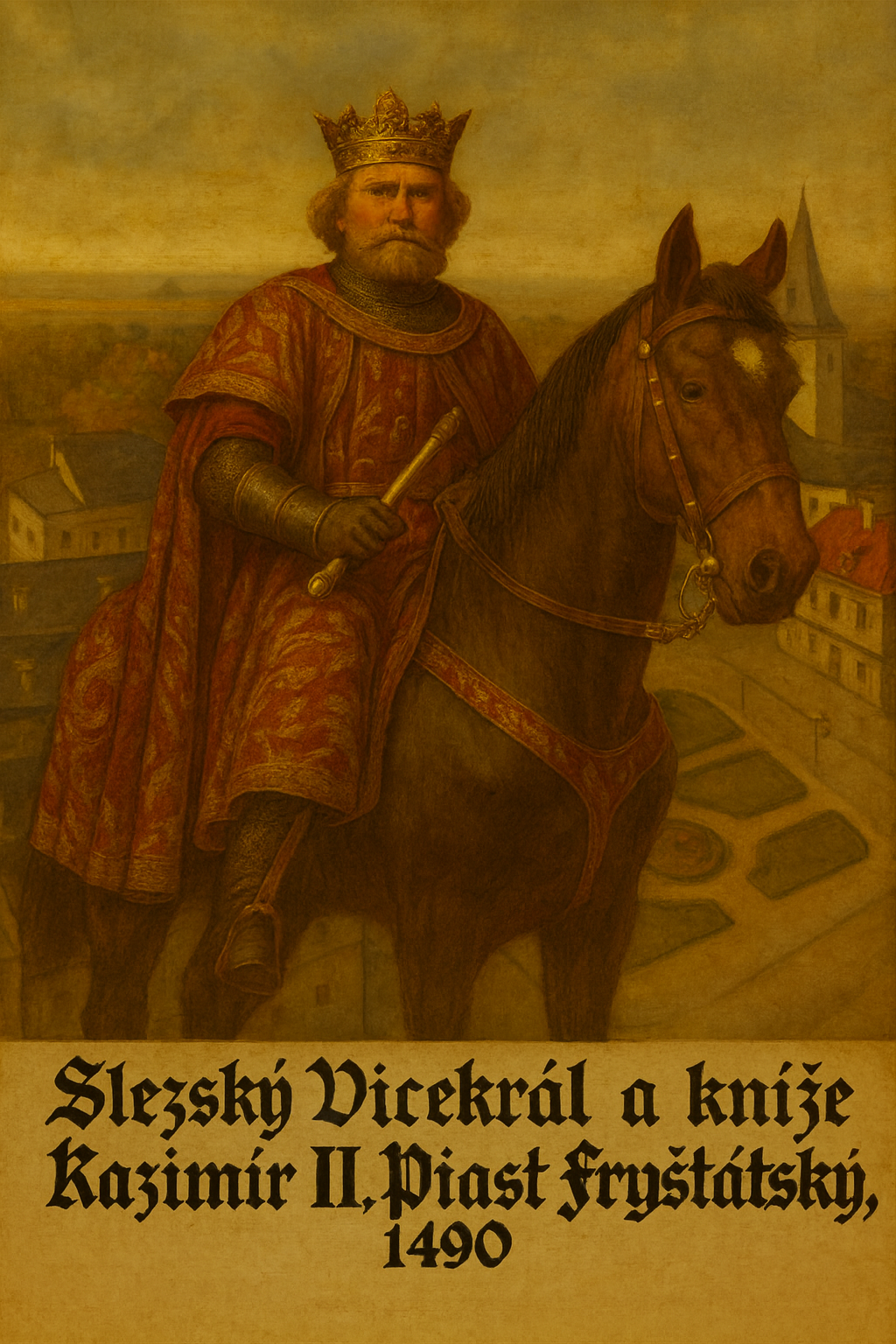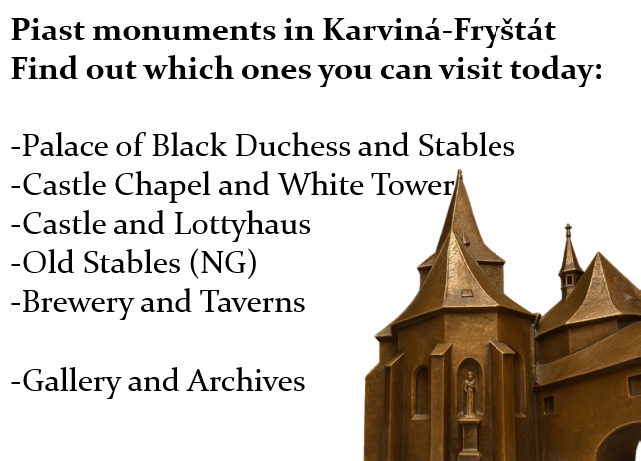
FRYSTAT HUNTING CASTLE
Educational tour of the monuments of the residence of Casimir II Piast and his family

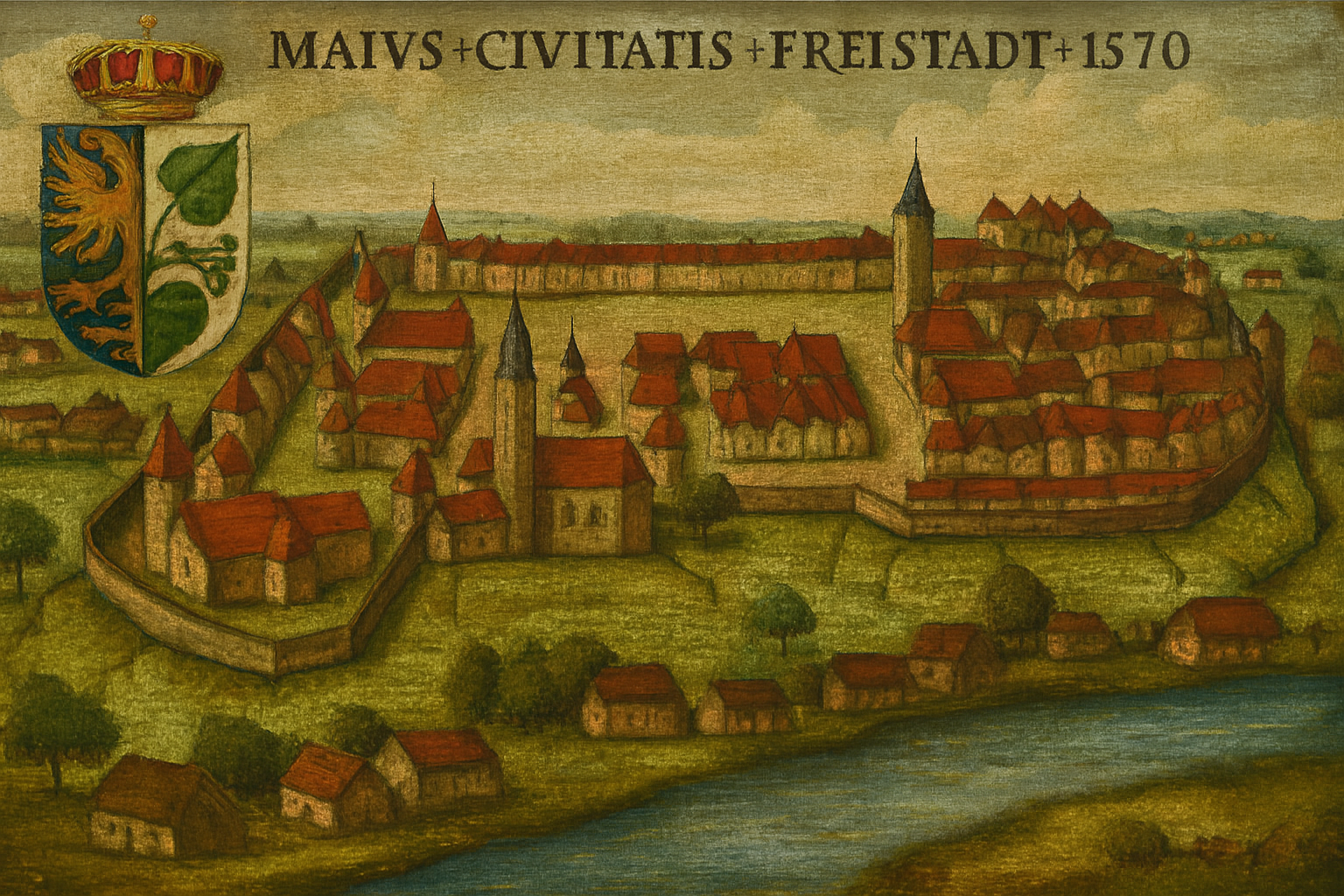
start - UNDER THE CASTLE

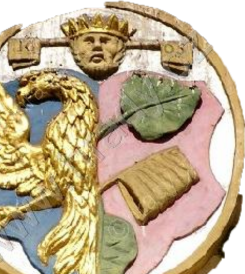
Casimir's mother, the Silesian Duchess Anna Piastovna, founded Podzámčí around 1470 and became the patron saint of Fryštát.
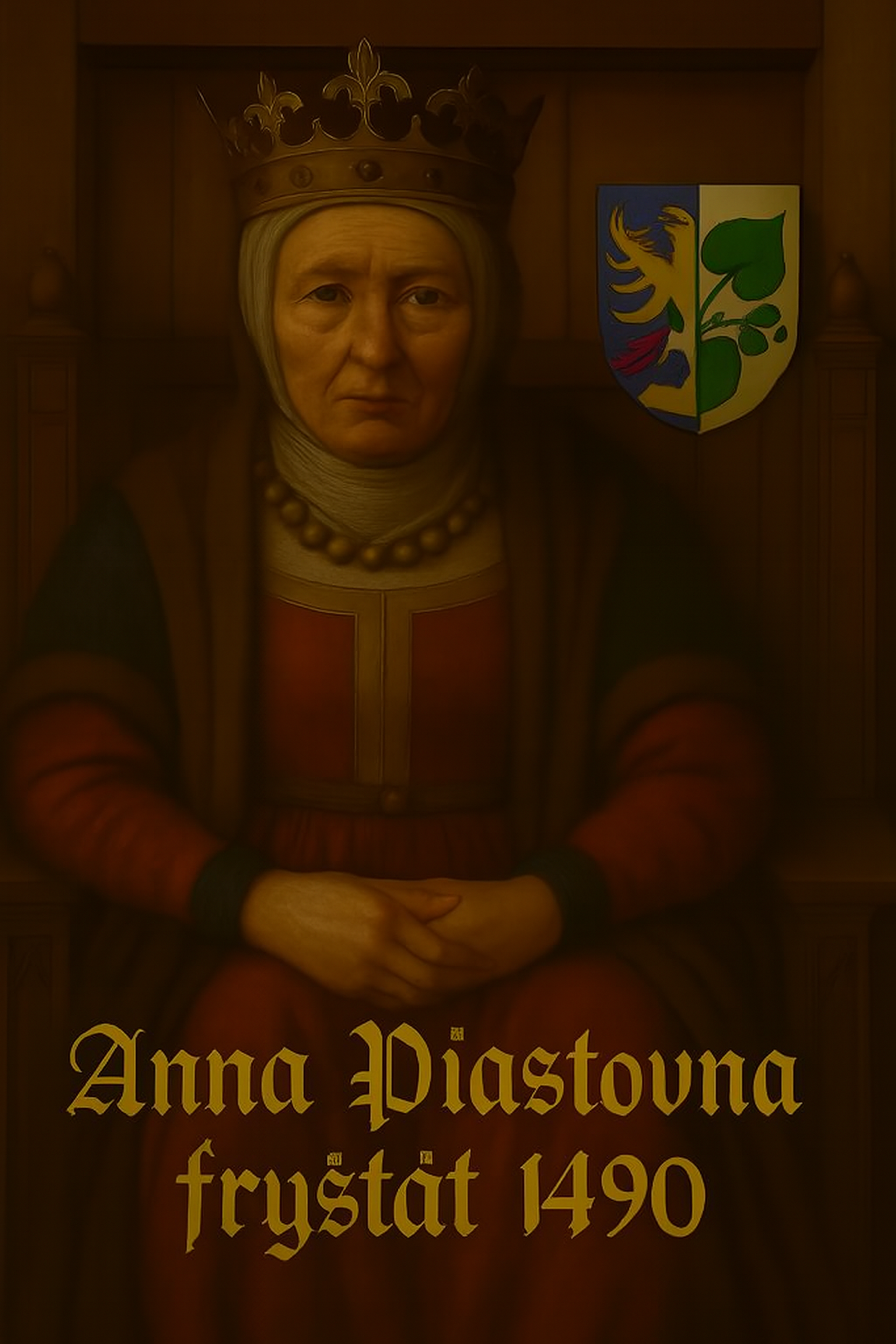
The trip across the historic Fryštát begins at the parking lot under its hunting lodge. Here we are in Podzámčí (Under The Castle), or Lower Suburbs, which was founded around 1470 by the Silesian Duchess Anna Piast for the poor inhabitants of Fryštát. In fact, it was just a relocation of the original poor district of Miserov, which was located on the site of today's Silesian University. She financed the operation of the Church of St. Bartholomew from her own resources, which she built here in Podzámčí (it was demolished in 1683). Duchess Anna also gave poor inhabitants of Podzámčí work for the ducal court. For example, women from Podzámčí washed and bleached laundry and clothes for the ducal family and the castle courtiers, and soon after, they also received laundry to wash from the Fryštát nobles and wealthier townspeople. They also took care of the ducal vegetable garden and orchard, which were located here in the place of today's Castle Park. The park was primarily a ducal hunting ground, so when the Silesian Duke and his nobles hunted game here, the poor inhabitants of Podzámčí were always on hand to help with something. Men from Podzámčí worked at the castle as armor bearers and guards. They were also hired by the duke as mercenaries for wars, where in addition to wages they could also receive a share of the spoils or they were also hired as workers on construction sites. Children from the Podzámčí, of which there were enough in every house, worked as helpers in the church or on the pastures. Older girls served at the castle as maids and when their service ended, they could find a job as housekeepers for a nobleman or a richer burgher, because they had experience from the ducal court and this was considered prestigious. The young men worked as helpers in the ducal stables of Lottyhaus, in the ducal forests or on the ducal ponds. The poor class of Fryštát earned money in this way at least for basic needs, and the poor Podzámčí prospered quite well. But the really poorest inhabitants of Podzámčí were accommodated by Duchess Anna in the St. Andrew's almshouse, which she also built here. In the almshouse, Duchess Anna employed other poor inhabitants of Podzámčí, who took care of its operation. Among other things, their job was to deliver leftovers from the ducal table, so that the poorest people paradoxically could at least taste some of the selected delicacies that were served on the ducal table of the Fryštát castle (the St. Andrew's almshouse was demolished in 1683 and was replaced by the hospital building of today's Czech Post near the castle). Through these noble deeds, the Silesian Duchess Anna Piastovna became the patroness of the historic Fryštát.
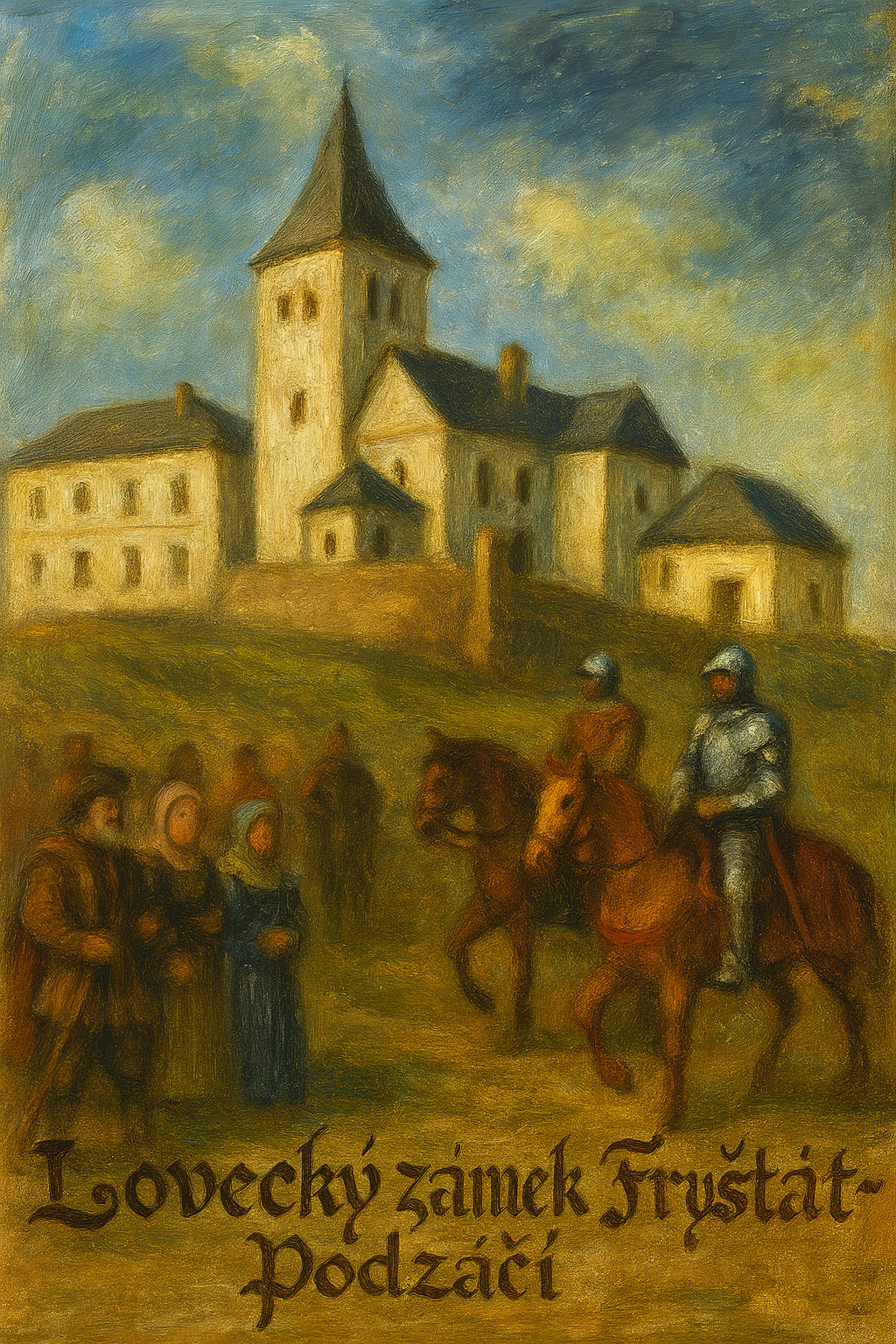
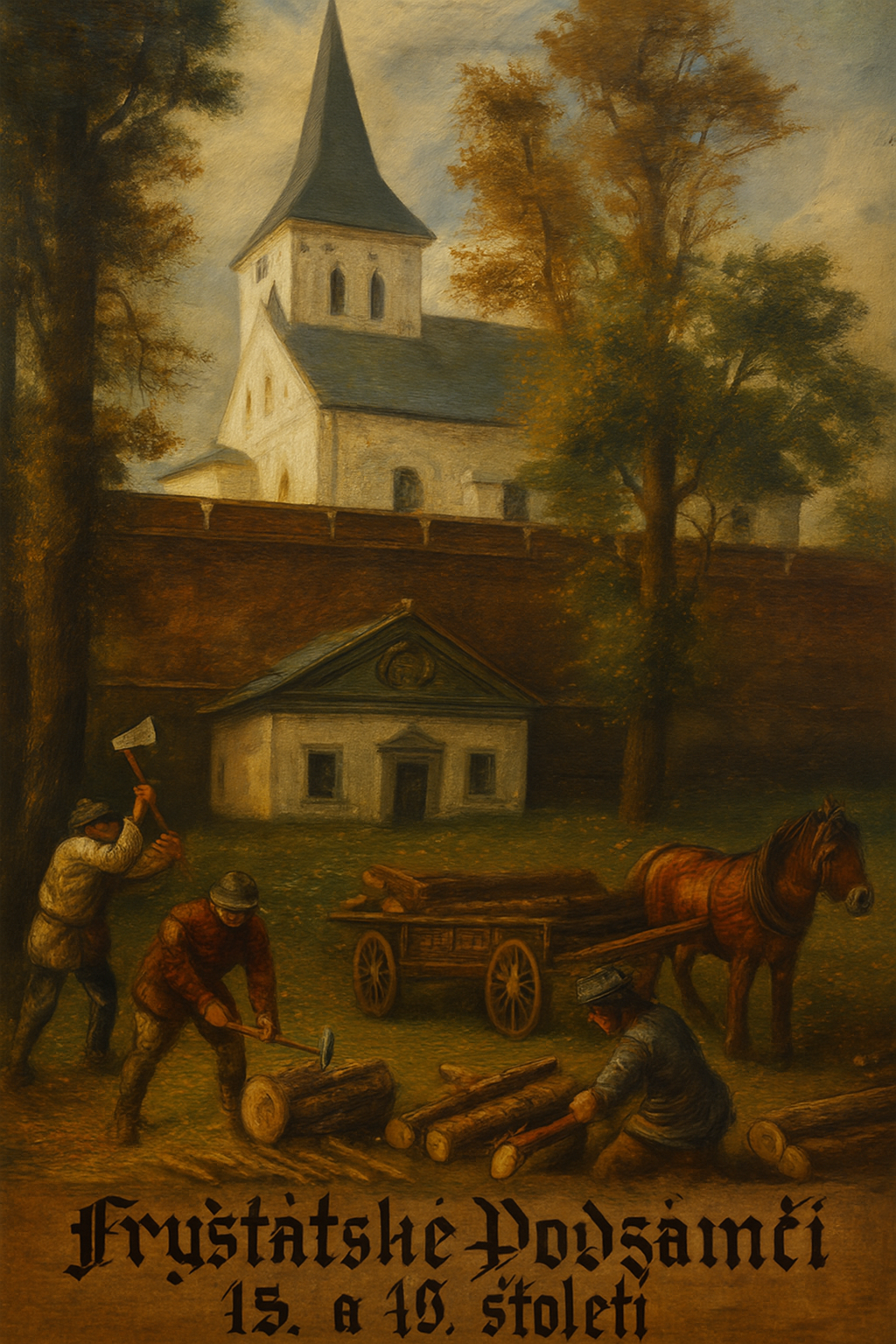
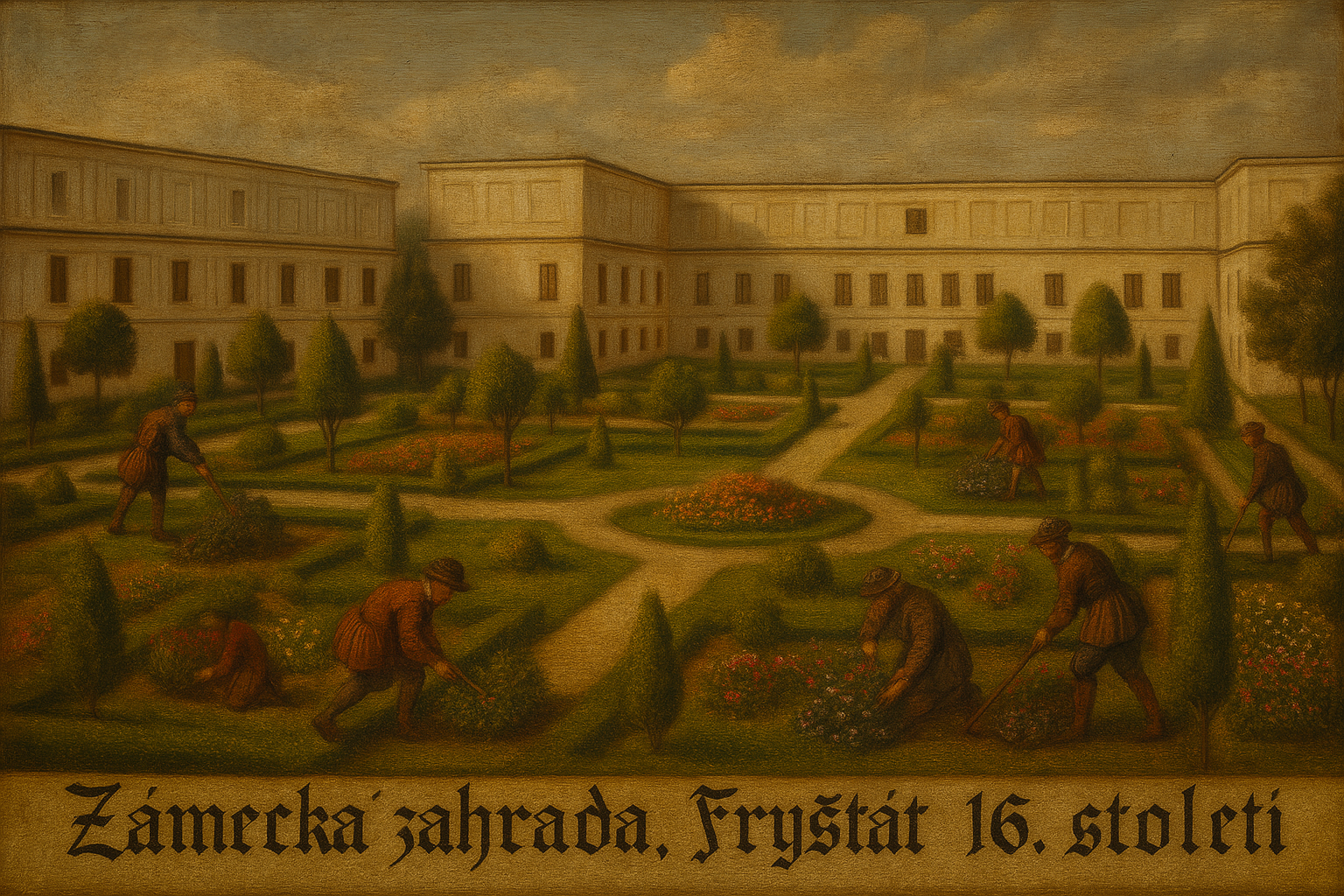
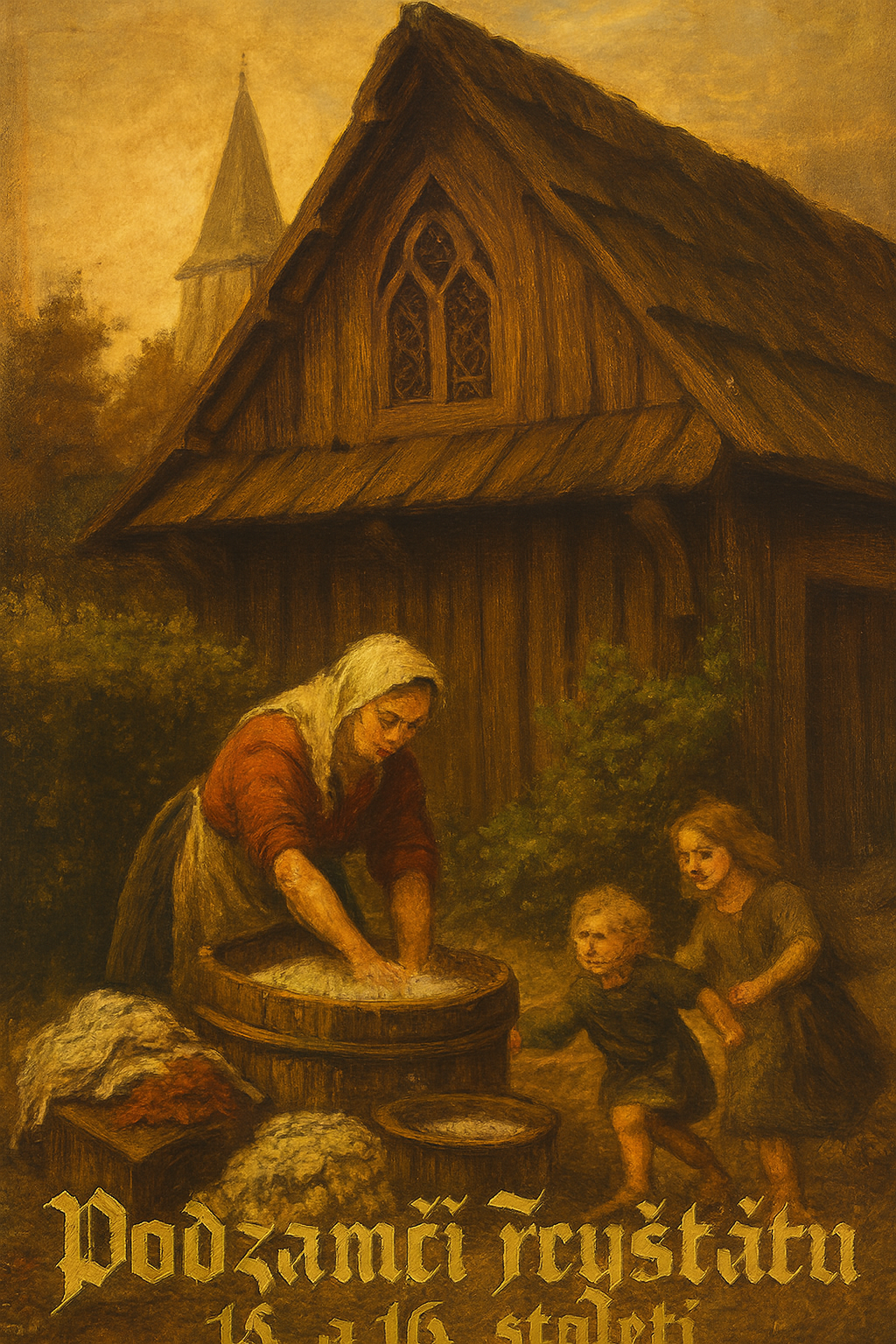
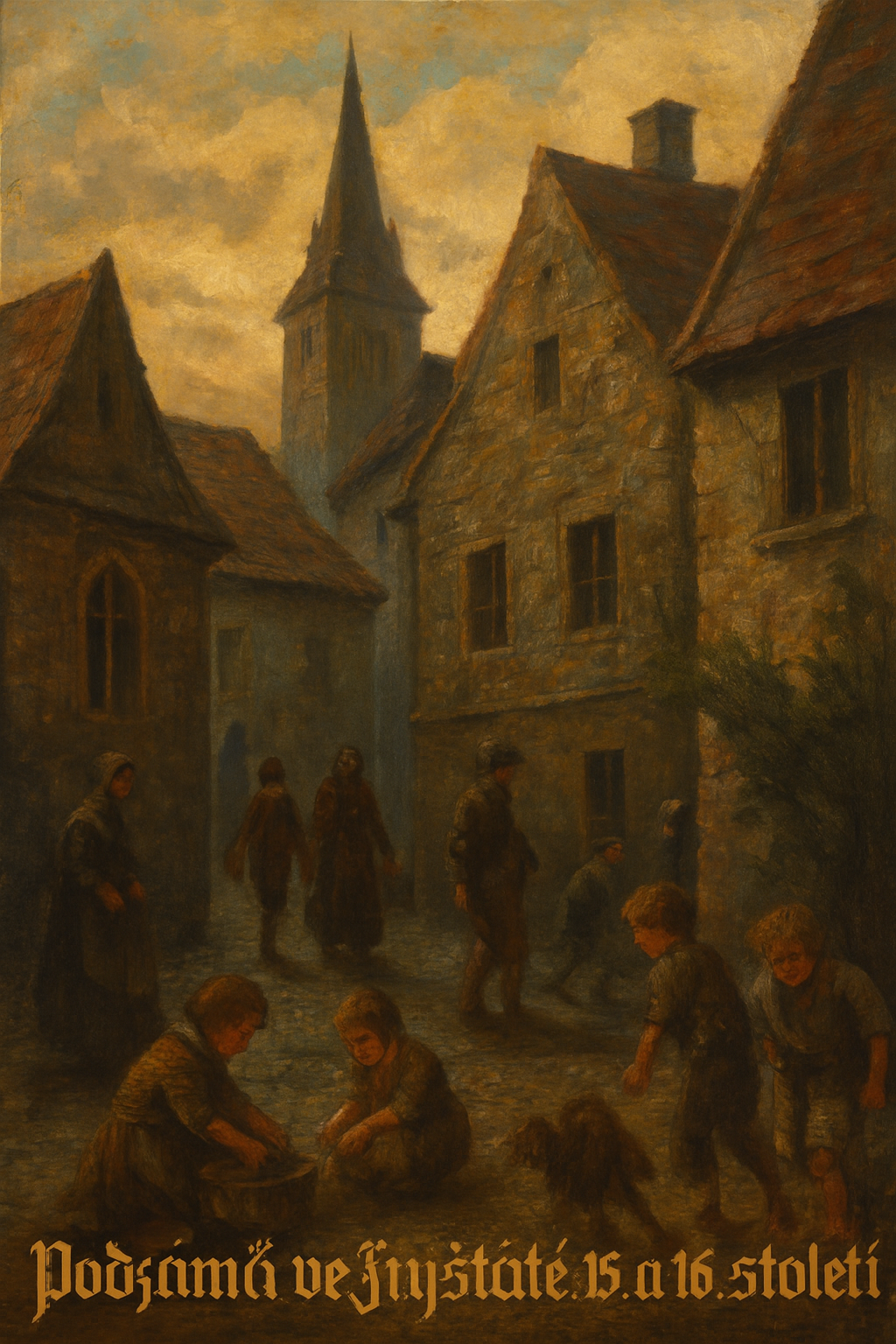

Let's now walk through the ducal Fryštát in the footsteps of the Silesian rulers from the ducal Piast dynasty, who resided here from 1282 to 1571. During their 300-year stay in Fryštát, they built several monuments that are still preserved today, and behind each of them are beautiful stories from behind the scenes of the ducal court, which were kept secret for many centuries. I, the castle court preceptor and former marshal of the Silesian Duchy, but today I am just a retired Fryštát knight Wenceslas, will accompany you on the way. At each stop, I have an interesting story prepared for you.
Now, according to the map, we will go past the castle church, across the edge of the park along the walls to the castle, to point no. 1. "WALLS" and stop in front of the Castle Gate at the corner of the castle.
1 - WALLS


Casimir's great-grandfather, the Silesian Duke Přemysl I Piast, established a large castle guard in Fryštát around 1370
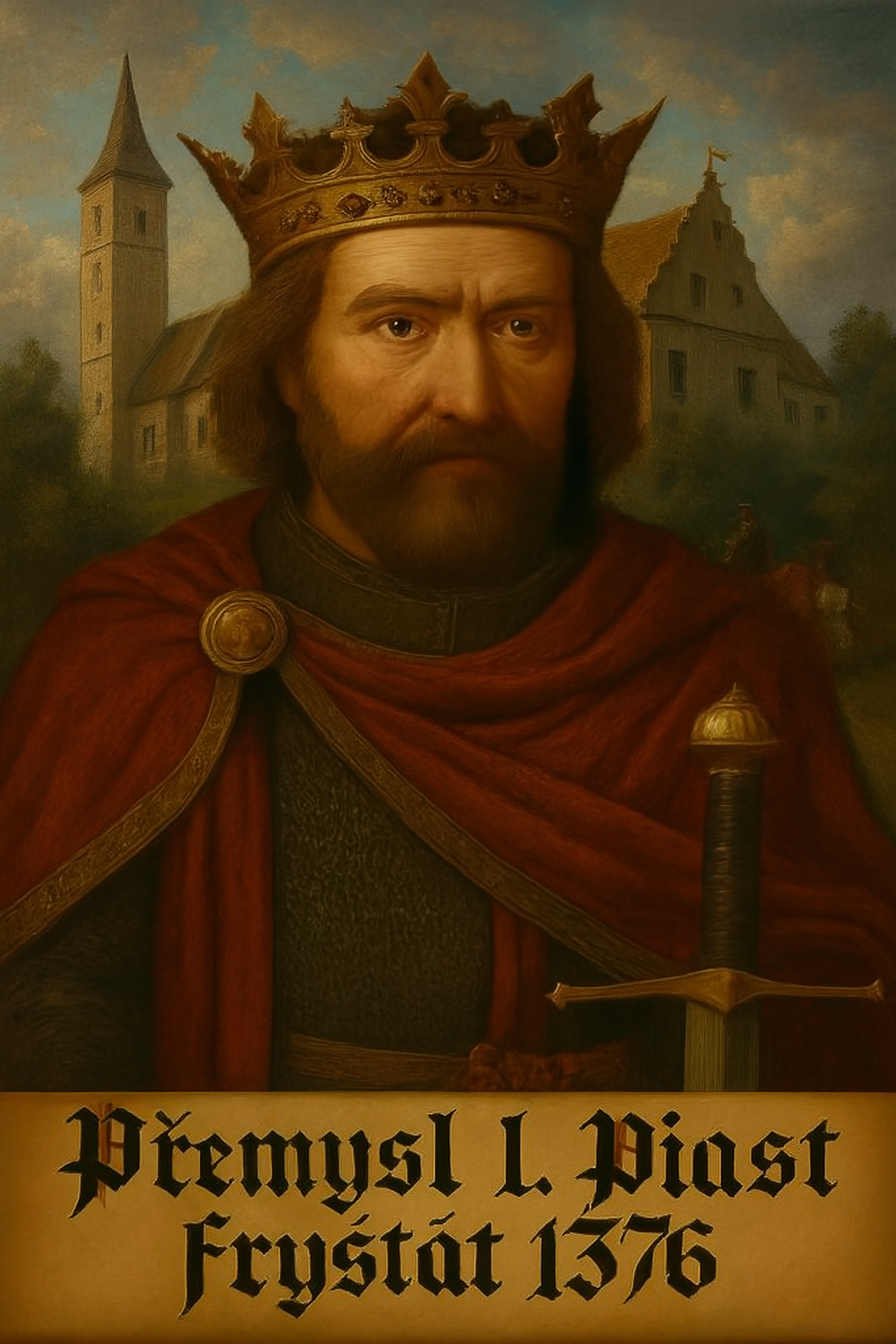
If you stand in front of the Castle Gate at the corner of the castle, in the place asshown in the opening photo of this stop (and then also at every other stop), then you are standing at the most visible monument of the medieval Fryštát defense system. The monumental wall under the church was built only in the second half of the 18th century by Count Taaf because of the receding slope, but this new wall fully replaces the original Gothic-Renaissance walls that were there. In 1821, the Larisch-Mönnich family tomb was added to this wall, where the first members of this family are still buried today. The first Fryštát walls surrounded only a hunting lodge built around 1282. The Silesian Duke Mečislav III. built a moat around the castle, complete with a rampart and a fortress wall. The moats were first fed by the Dubina stream, which flowed around the castle until 1511 - 1514, but then it was replaced on the southern side by the artificial Mill Drive, which still exists today. Before 1376, the Silesian Duke Přemysl I Piastov carried out a Gothic reconstruction of the Fryštát hunting castle into his second residential residence. He gave the Fryštát castle more defensive elements in the form of a tower with an embrasure, corner defensive terraces, and also repaired the original moat, on the bank of which there was a high rampart supplemented by a wall. On the slope below the church, he built a new defensive wall with embrasures, the remains of which are still preserved today, and which the attackers had to charge and climb over in the event of a siege of Fryštát. However, behind this wall, Fryštát soldiers and mercenaries were already waiting for them. They overturned their ladders, poured hot water and hot oil on them and shot arrows at them. For example, Fryštát faced such an attack from the Hussites in June 1427 during the reign of Přemyslav's son, Duke Boleslav I. Duke Přemysl I also repaired the fortress wall around the entire residential castle town of Fryštát. Their last visible traces can be seen under the Zámecká and Pivovarská streets and also near the Svatováclavská street. However, Fryštát did not have strong walls even after these repairs, so Duke Přemysl I reinforced the castle military detachment here to defend Fryštát and guard its streets. However, the residential town was primarily protected by a ring of surrounding ducal defensive castles in Frýdek-Místek, Silesian Ostrava, Racibórz, Bytom, Bílsko-Bílá and in Cěšín. However, the Fryštát fortifications underwent regular renovation, first in 1525 during the reign of the Silesian Viceroy Casimir II and then in 1683 and 1805, each time Europe was threatened by raids by the Ottoman Empire. They were abolished during the Larisch-Mönnich era and only at the end of the 19th century.
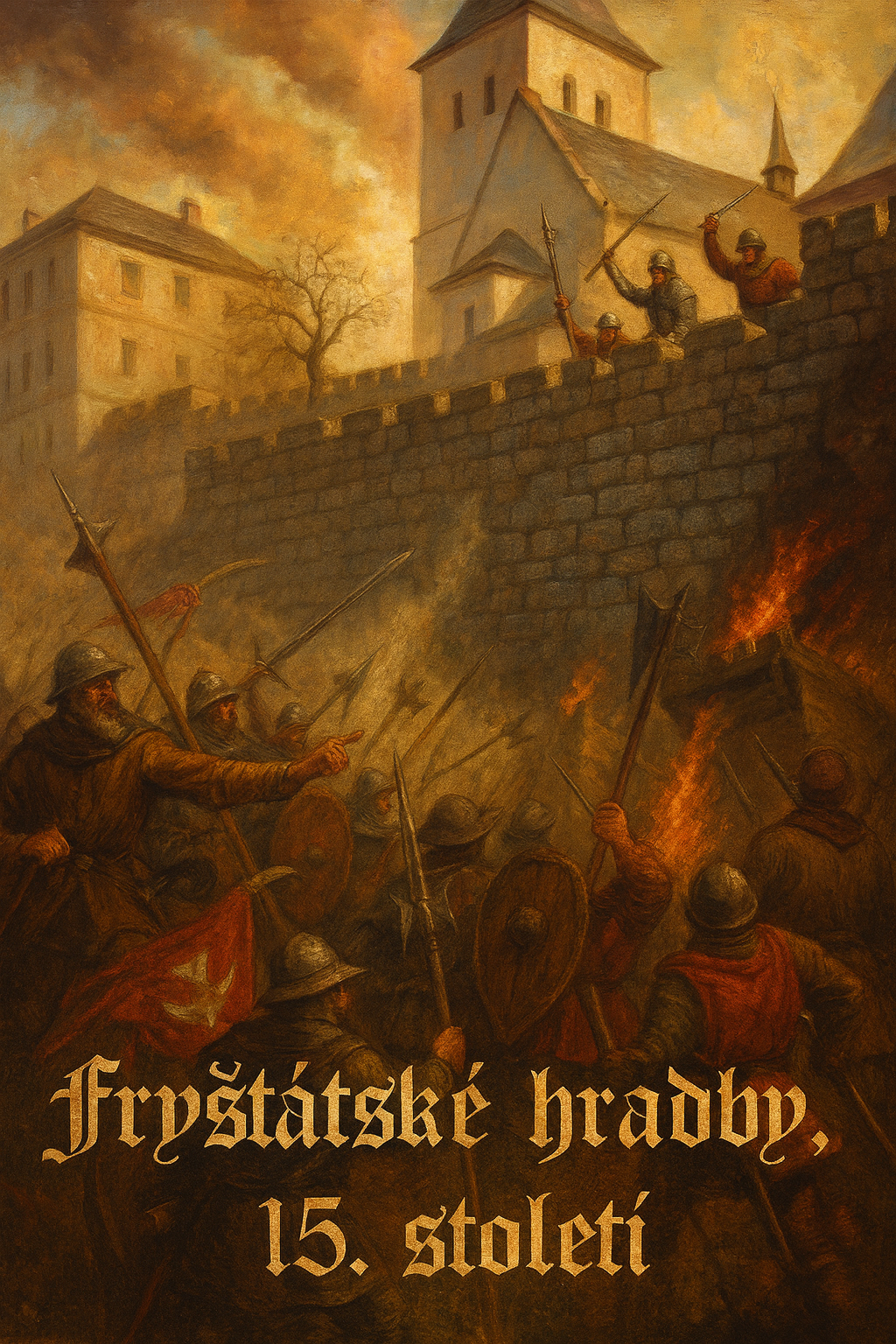
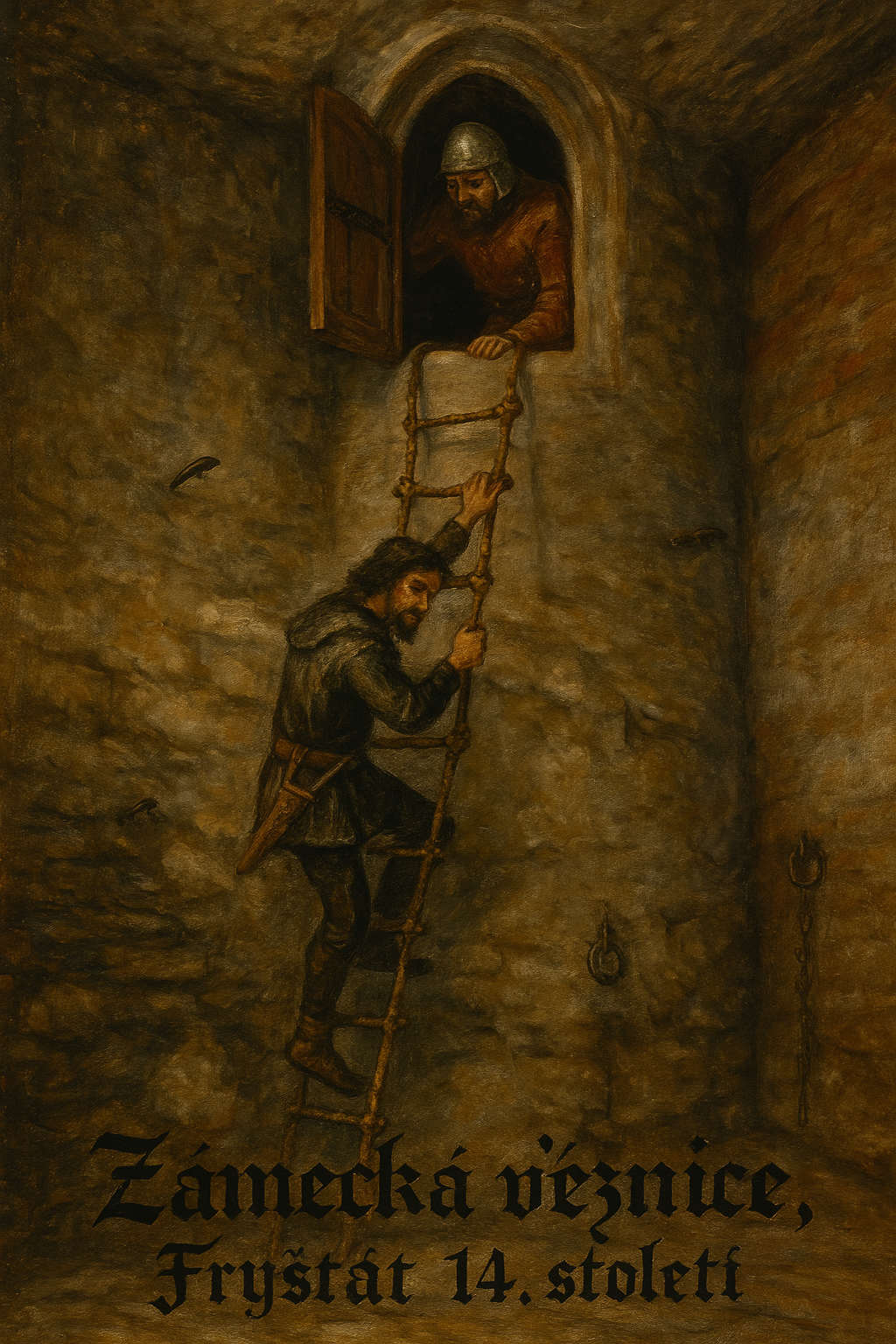
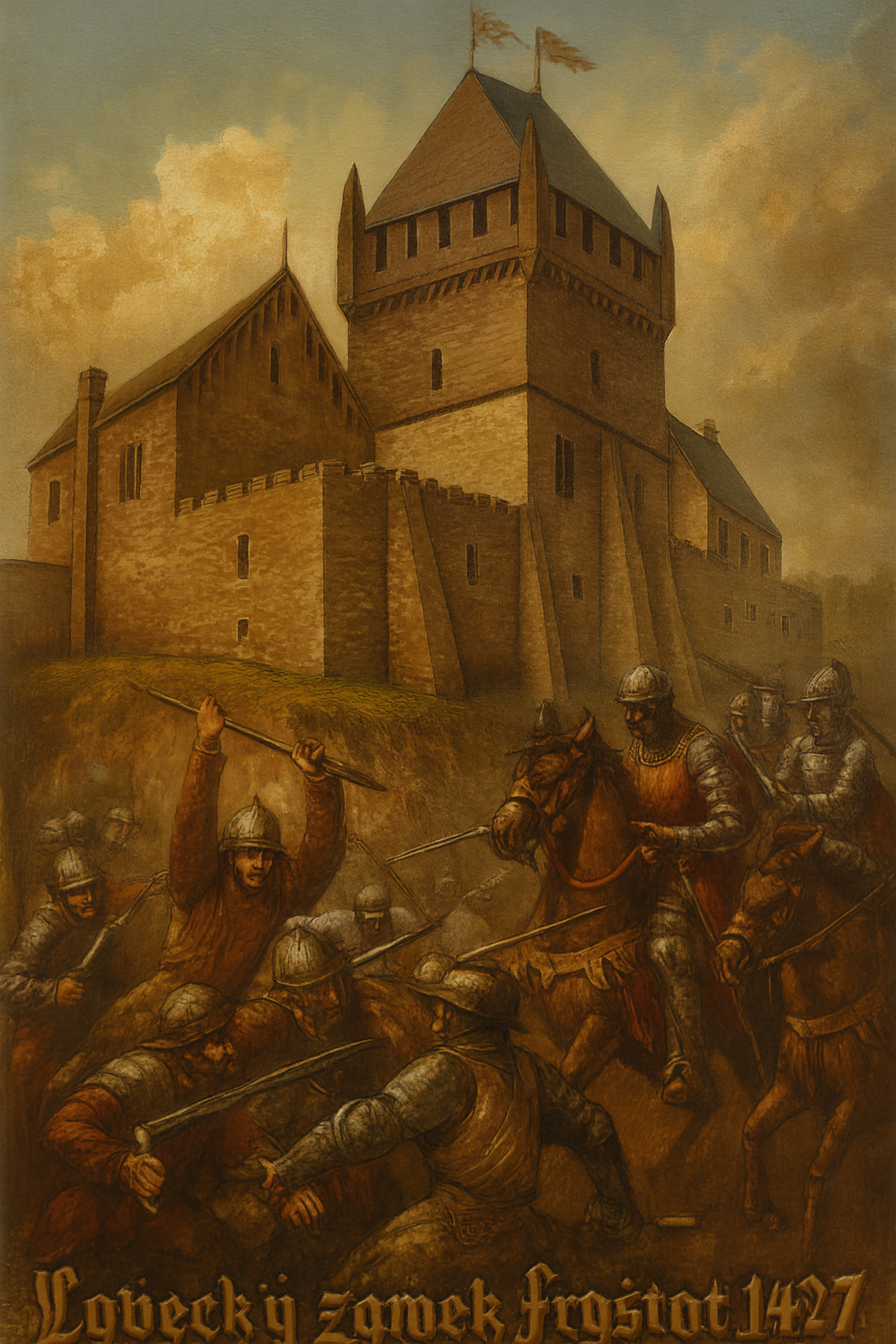
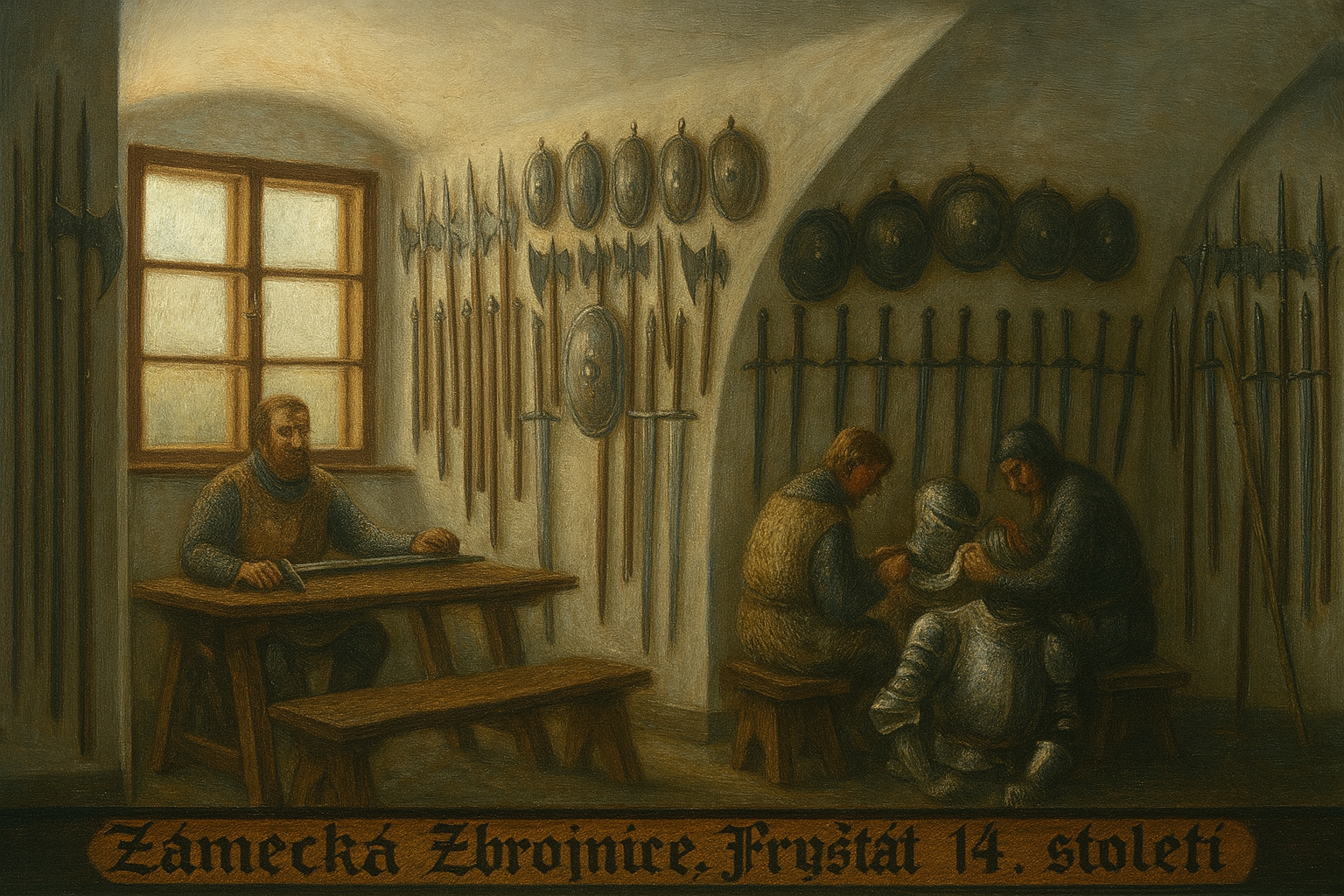
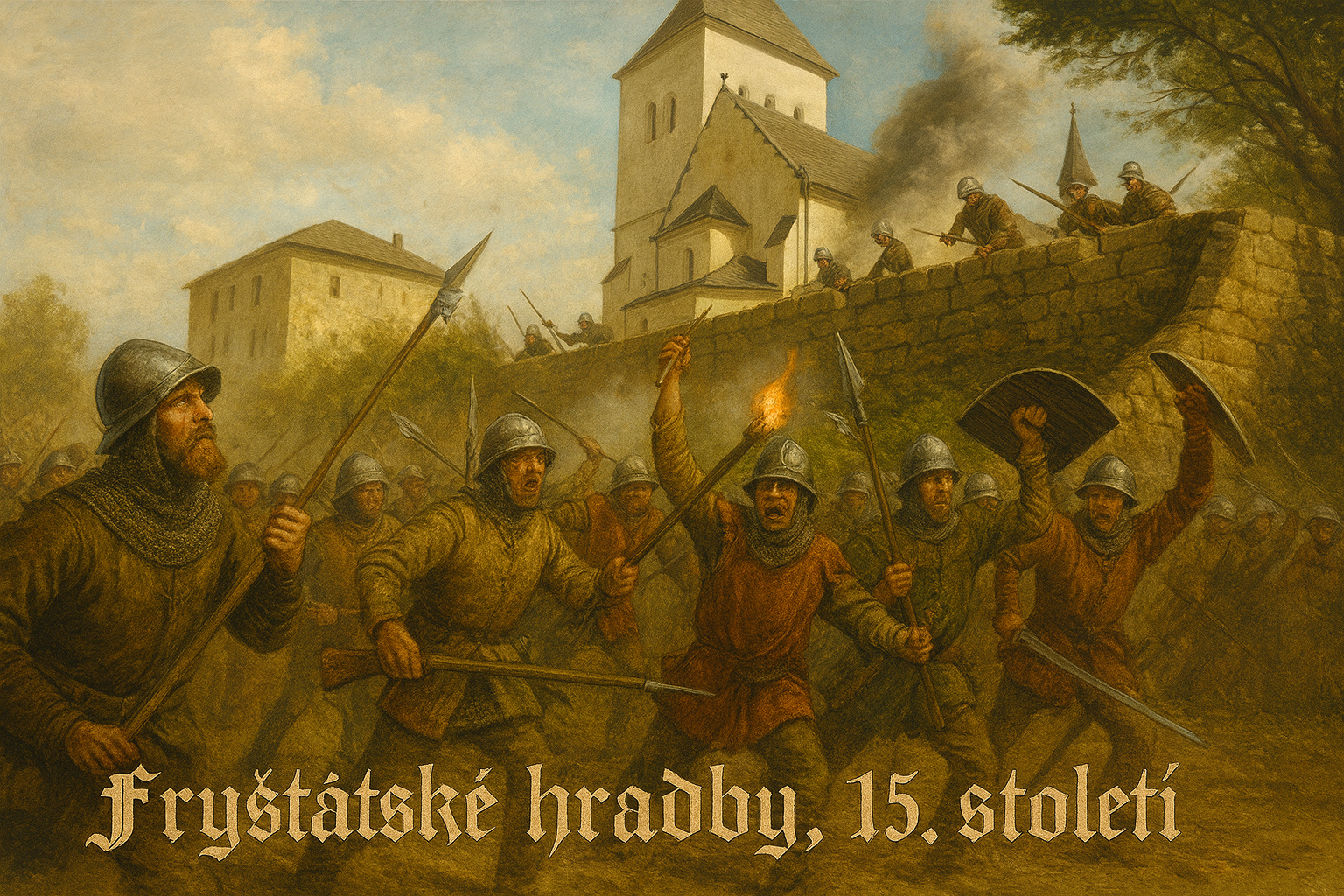
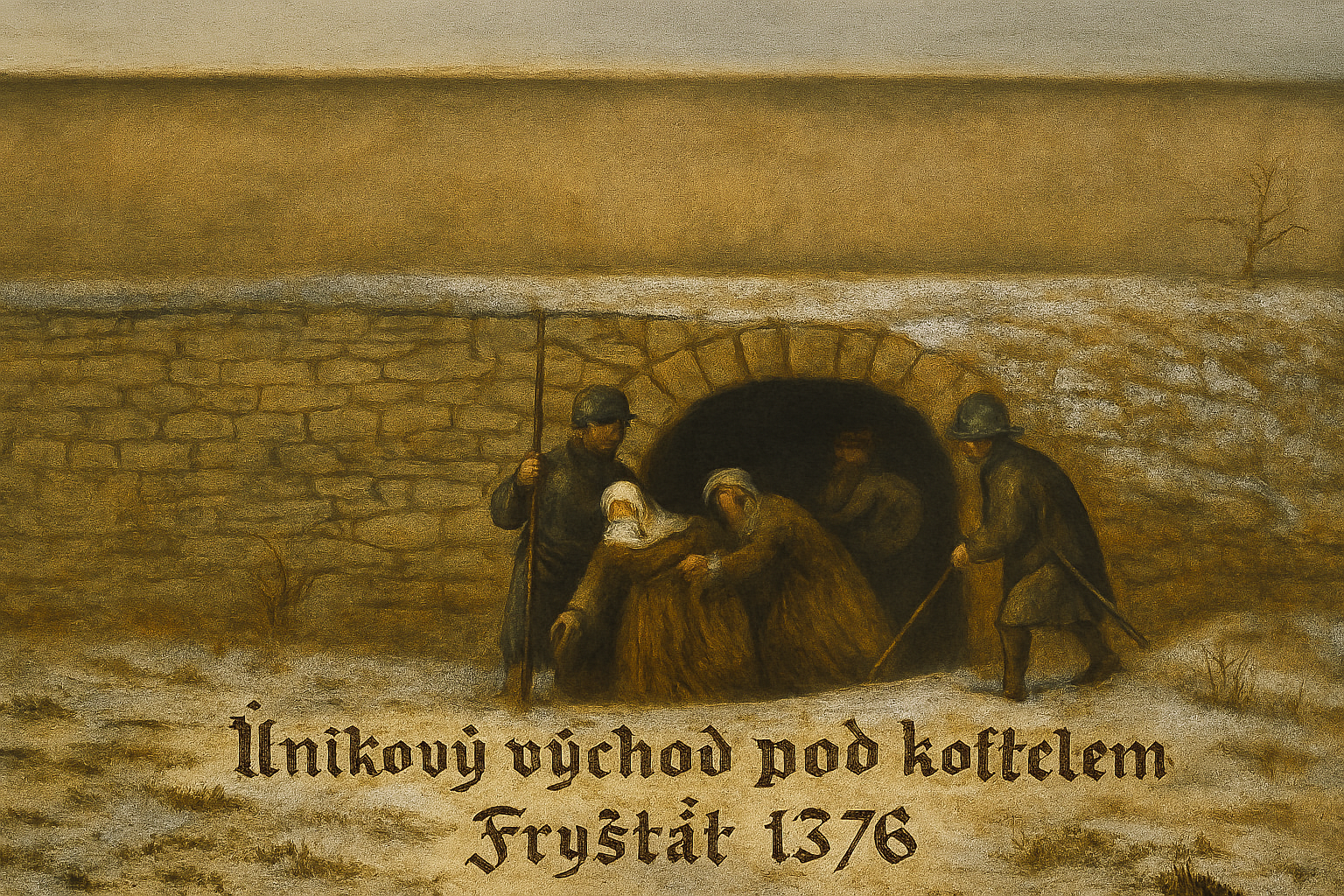
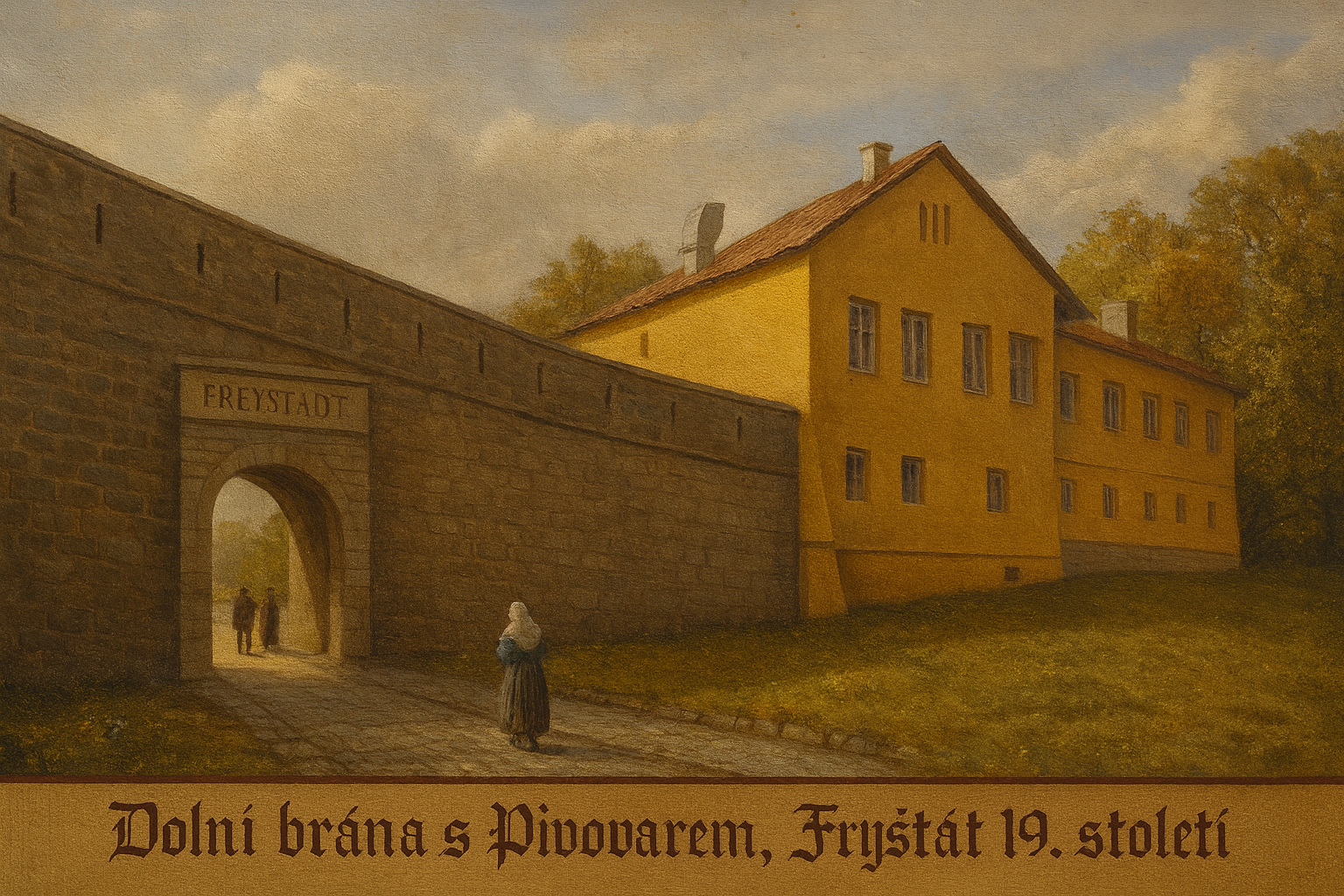
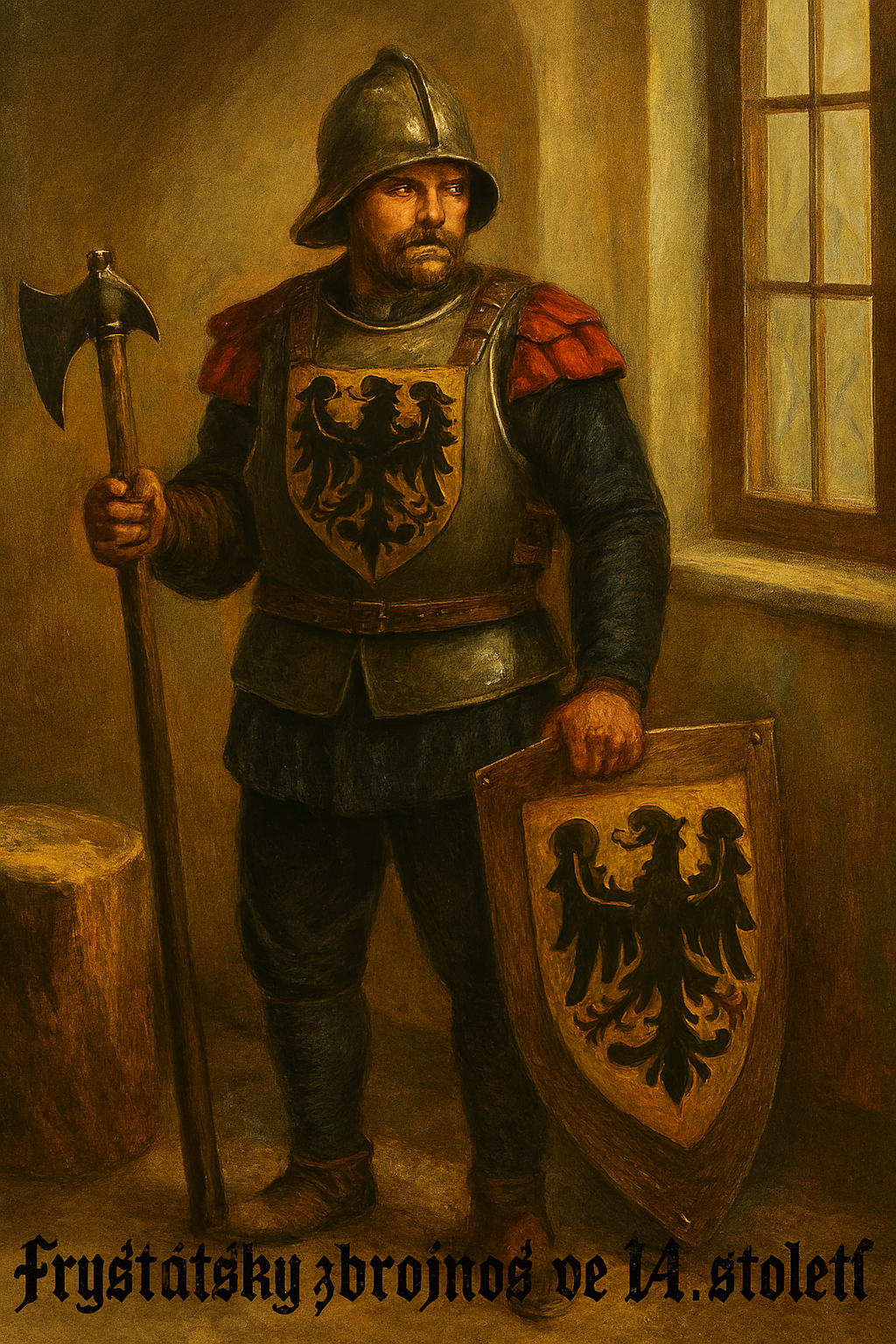
Fryštát Military Detachment
The armorers in the service of the Silesian Duke kept the castle armor ready so that it would be immediately at hand in the event of a sudden attack. They were professionals who were paid for their work. However, the Silesian Duke also hired mercenaries for wars and for the defense of Fryštát Castle, who were mostly people from the poorer classes, but who also received a share of the spoils. The mercenaries were paid from a tax paid by the wealthier classes, who thus bought themselves out of participating in the wars. Sometimes the Fryštát craftsmen also sent their journeymen and apprentices to wars instead of them. The best-paid soldiers were horsemen, the least-paid were foot soldiers. However, they all received weapons that were stored in the armories in times of peace. In June 1427, during the reign of His Grace, the Silesian Duke Bolesław I Piast, the Hussites came to Fryštát. They tried to climb up the slope to the church, but had to deal with obstacles in the form of a moat, on the right bank of which there was a high rampart supplemented by a wall. When they overcame this obstacle, another defensive wall with loopholes awaited them on the slope, this time a wall with loopholes, which the Hussites had to conquer and climb over. It is still visible today where this wall stood. And behind this wall, Fryštát soldiers and mercenaries were already waiting for them. They overturned the Hussites' ladders, poured hot water and hot oil on them and shot arrows at them. When the worst came to the worst, underground passages with escape routes were also in reserve. One of them has been preserved on the slope at the foot of the parish house. When the Hussites managed to penetrate to the courtyard, a fight for their lives took place there. In the end, however, there were neither losers nor winners. A political reconciliation was reached with the Silesian dukes and the Hussites withdrew. The mercenaries returned to their work after the battle, while the professional soldiers remained in the service of the Silesian prince and guarded the Fryštát walls and patrolled the city streets, maintaining peace and order, especially during markets and festivals.
If you walk along the southern side of the castle, believe me, it was never such a beautiful place in our time. There was no slope here, instead there was a deep ditch with a stream flowing through it. On this side of the castle there were also Prevéty, i.e. toilets from which sewage fell directly into the stream. Today there are benches here and roses grow here, but we avoided this place because it smelled terrible.
According to the map, you can reach stop number 2 "KITCHEN" by passing through the Castle Gate and stopping at the statue of St. Patrick.
2 - KITCHEN


Casimir's grandmother, Silesian Duchess Euphemia II Piast, establishes royal relations in Fryštát in 1431
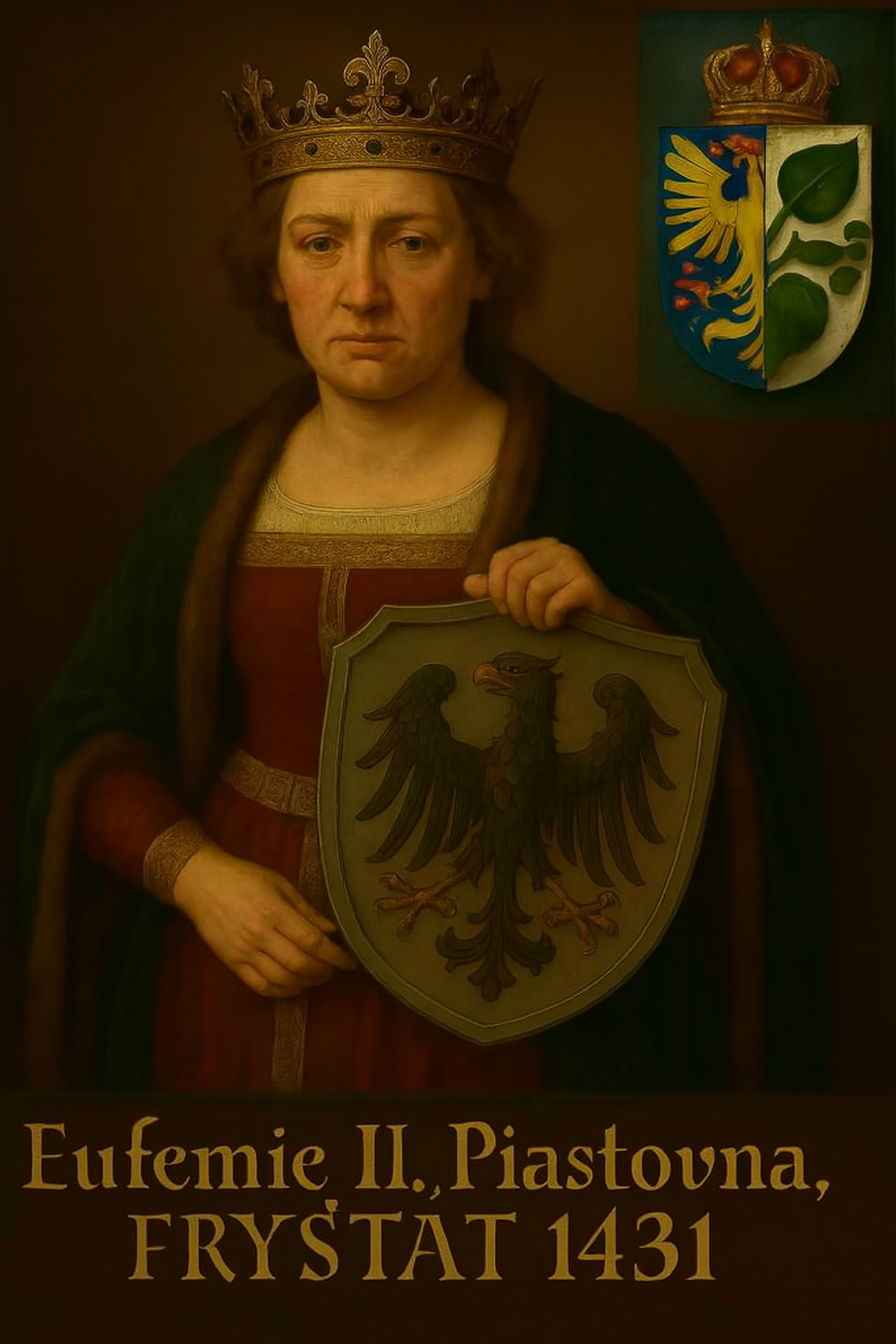
If you stand by the statue of St. Patrick facing the Castle Gate,which was built by Count Larisch-Mönnich at the turn of the 18th and 19th centuries, there is an inconspicuous castle wing on your left. The chimney will tell you that this is the castle kitchen. Before 1420, Duchess Euphemia II. embarked on a major reconstruction of the Fryštát hunting lodge, where she permanently moved the Silesian ducal court after her widowhood in 1431, and built this kitchen wing, which became the basis of royal court etiquette at Fryštát Castle. The master of the Fryštát castle kitchen was the duchess' court chef and his assistants. He supervised the storage, preparation and portioning of food, while the final preparation, serving and delivery of food from the kitchen to the banquet hall were in charge of the butlers, waiters and slicers. Everything the ducal family liked was cooked here, only pastries were bought in the Fryštát bakeries, because its production was quite time-consuming. The original black kitchen was built with the founding of the hunting lodge around 1282 by the Silesian duke Mečislav III. Piast and still stands in the southeastern part of the castle. However, the new Fryštát castle kitchen wing fully replaced it. It was very modern for that time and only the richest could afford its construction and operation. It was built in the immediate vicinity of the banquet hall, so the delivery of food from the kitchen to the ducal table was very convenient and fast. The served food did not cool down before it was brought to the estate's table. Food, wine and beer were stored in the cellars of the kitchen. A well has been preserved there to this day. It not only supplied water to the kitchen, but also satisfied the needs of everyone in the castle. Its location here was very convenient. The fact that it was located in the basement of the Kitchen Wing made it easier for the cooks to deliver water to the kitchen. The single-room kitchen itself (today the Castle Gallery - III. Castle Tour Route), located on the ground floor, also had a cutting room and a preparation room, and the cooks were just bustling around here. The first floor of the kitchen belonged to the castle staff, who prepared the food here for the final touches and only when the food was ceremonially served did the pages take it from here to the banquet hall. The kitchen wing served its purpose until the time of the Larisch-Mönnichs, who lived here until 1945. The Castle Gallery is now located in the kitchen area.
SILENCIAN CUISINE is popular in Central Europe. Who wouldn't know potato salad, potato dumplings and potato pancakes. Potatoes were introduced to the common people by the Irish family of Count Niklas Taafe von Carlingford, who lived in Fryštát in the 18th century. Thanks to him, potatoes, which had previously been a crop of aristocrats, became a popular dish. Typical Silesian dishes include poppy seed strudel, fried cottage cheese sandwiches and meatballs. However, the most characteristic feature of Silesian cuisine is meat always accompanied by fruit. Whether the meat is cooked directly with fresh or dried fruit or the finished meat is accompanied by fruit compote, this combination is mandatory for Silesian cuisine. From the mid-15th century, Bigos - a stew made of two meats, two cabbages and sausage, which came here from the Jagiellonian royal kitchen, was also served on the Fryštát ducal table, but in Silesia it was cooked... with nothing but plums
.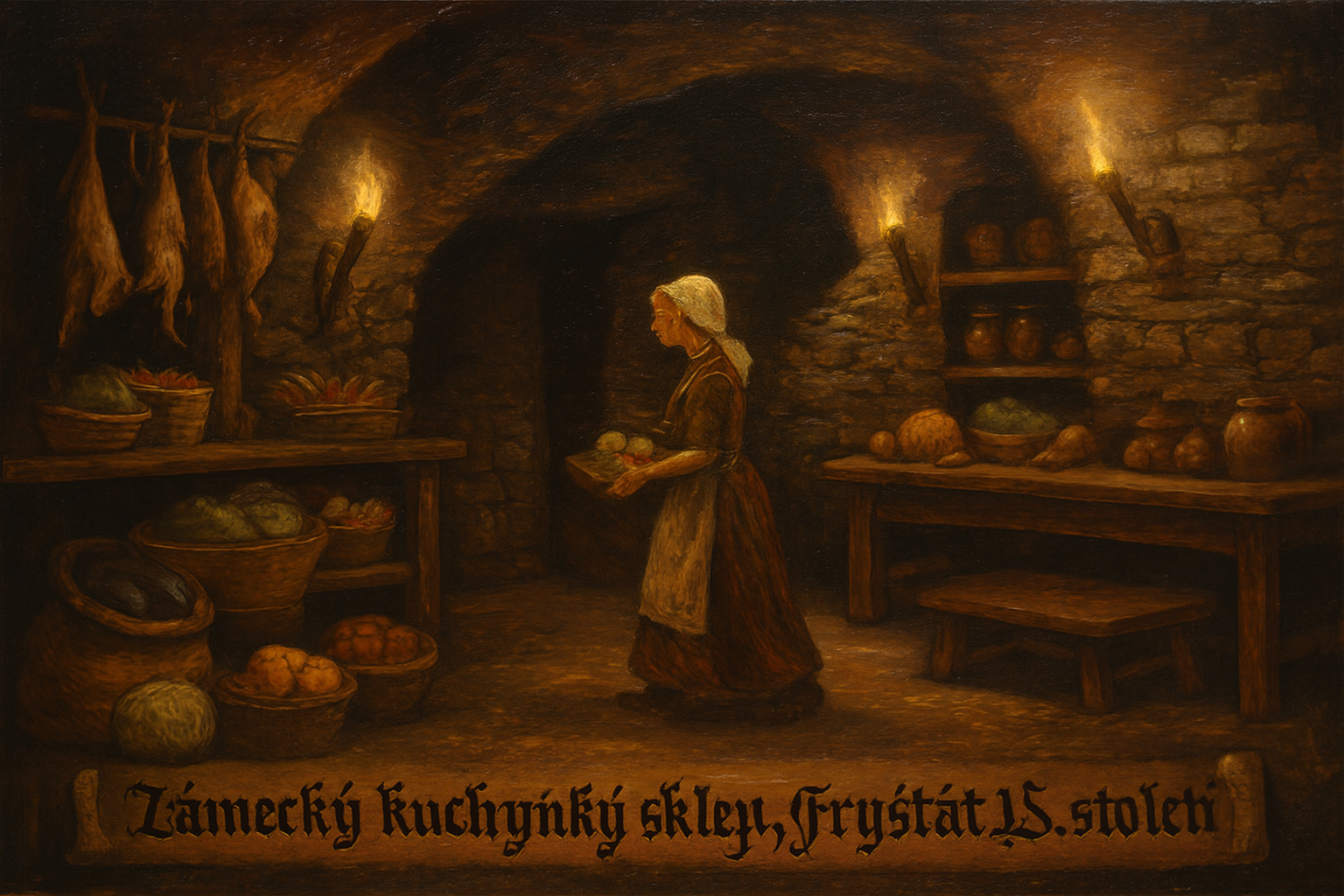
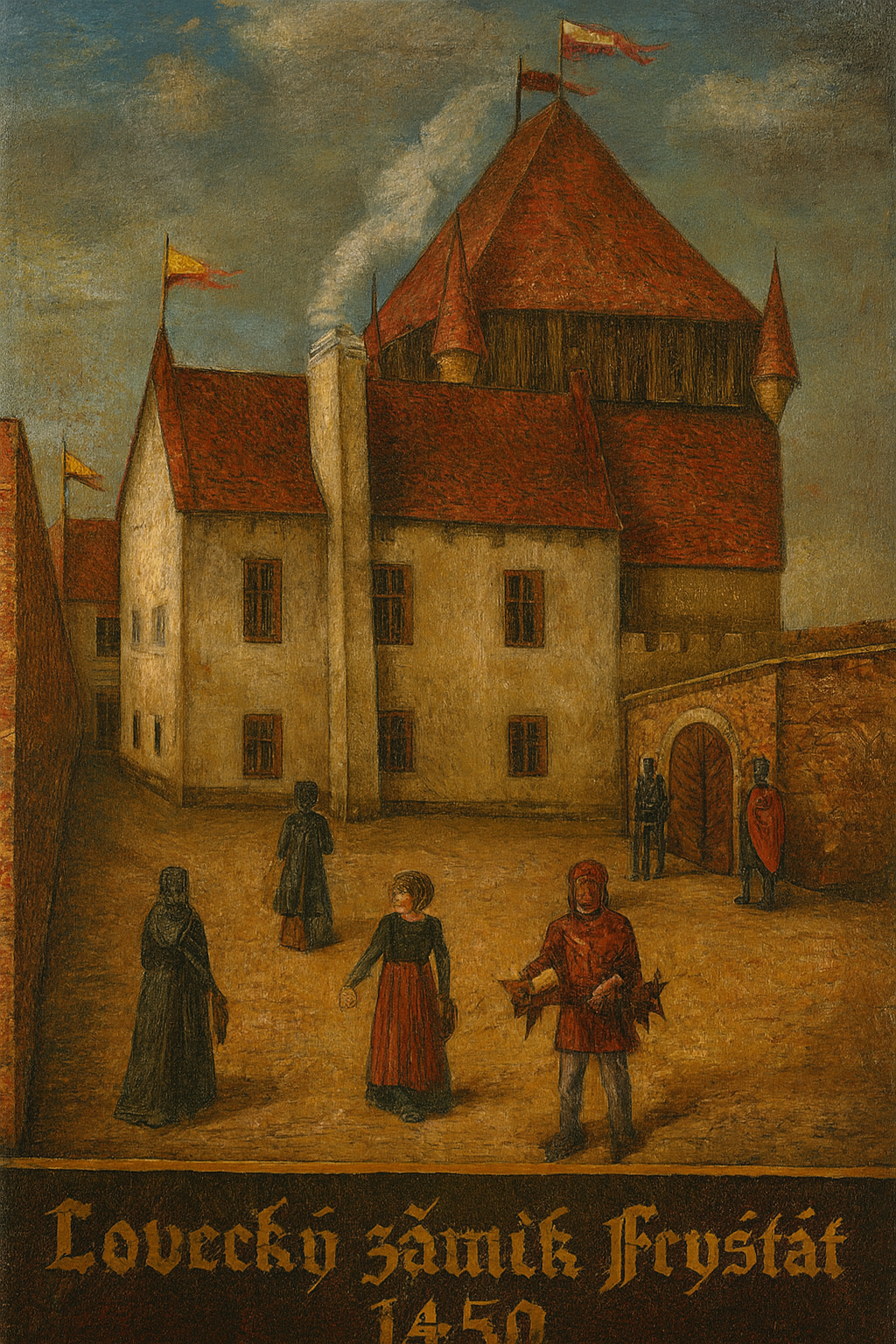
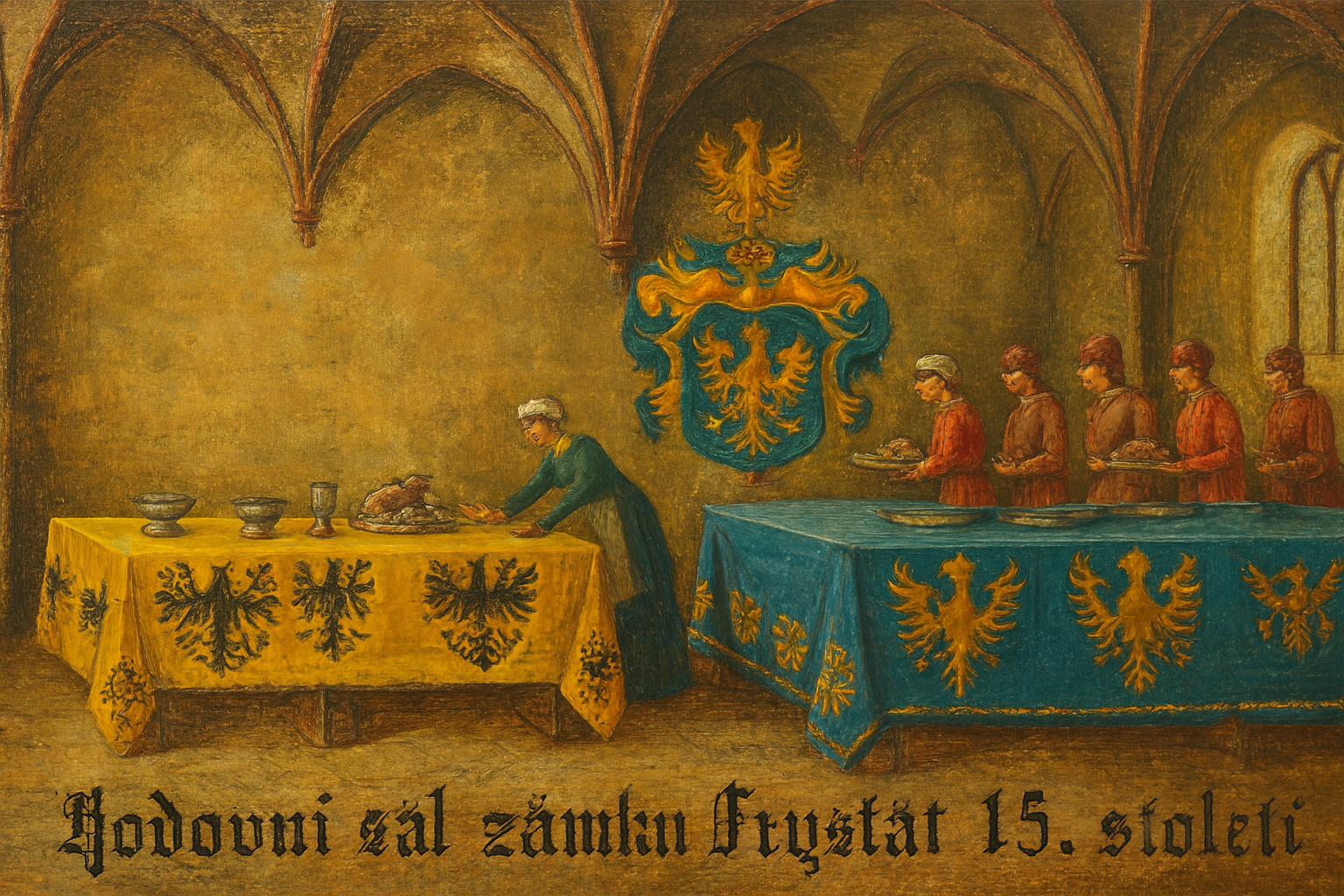
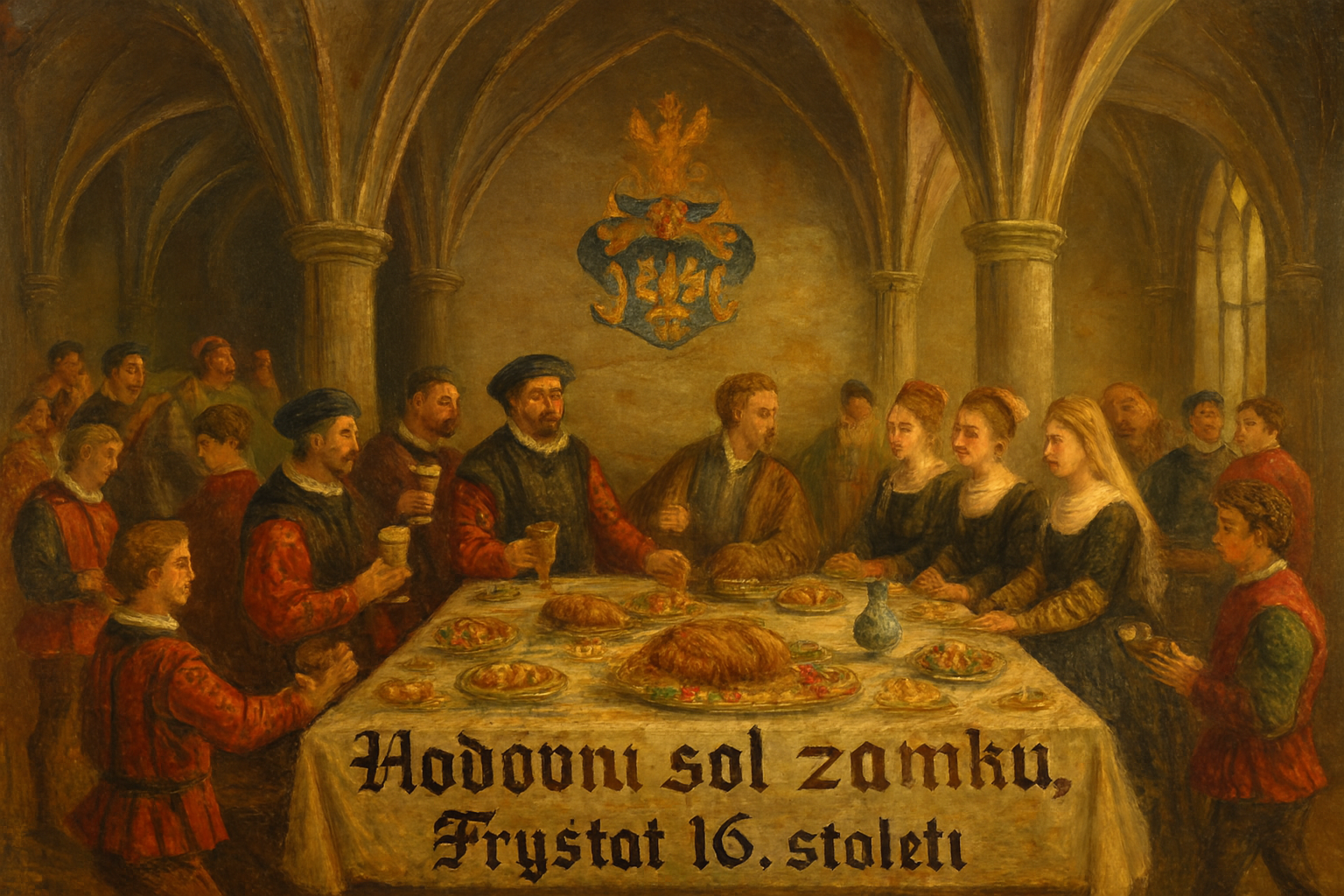
Fryštát pages and the feast of the princes
The ducal table in Fryštát was mainly served with meat. The daily consumption of meat here was half a kilogram per person, mainly beef and pork, less often mutton. However, poultry was served much more often, especially hens, roosters and capons, chickens, ducks and geese. Game was also prepared for ceremonial events, from the mid-16th century from the Duke's own breeding in the Duke's hunting ground in the Loucký Forest in Karviná. The meat was eaten with white or dark bread and washed down with wine or beer from the Fryštát brewery. We used spoons and a skewering knife for cutlery, but we ate more with our hands. Various soups and sauces were also served in bowls. Exotic fruits such as oranges, figs, pomegranates and citrus fruits also made their way to the ducal table. And on the days of fasting, which there were about 192 in the year, fish or legumes prevailed. If the feast was large and festive, the service staff was supplemented by pages who helped with the delivery and serving of food. It was not permissible for the Silesian monarchs to wait for their food and drink. The wishes of all the feasters had to be fulfilled immediately, perhaps even before they were expressed, so the local staff was constantly on the alert. The food served was always more than enough, because if any of the dishes ran out, it was a great disgrace for the Silesian ducal court in Fryštát and the conditions built by the duchess could suffer immensely. Her Grace the Silesian Duchess Euphemia II. also introduced a rule here that the excess food that was not eaten was distributed as alms to the poor from Under of the Castle. During the festive feast, music always played here and jugglers performed with her. You can dance a Gothic dance from the 15th century by clicking on the YouTube link.
According to the map, you can reach stop number 3 "WHITE TOWER" by walking past the Castle Chapel and stopping under the White Tower.
3 - WHITE TOWER AND CHAPEL


Casimir's great-grandson, Duke of Silesia Frederick Casimir Piast, imprisoned Duchess Catherine in the castle's White Tower in 1569
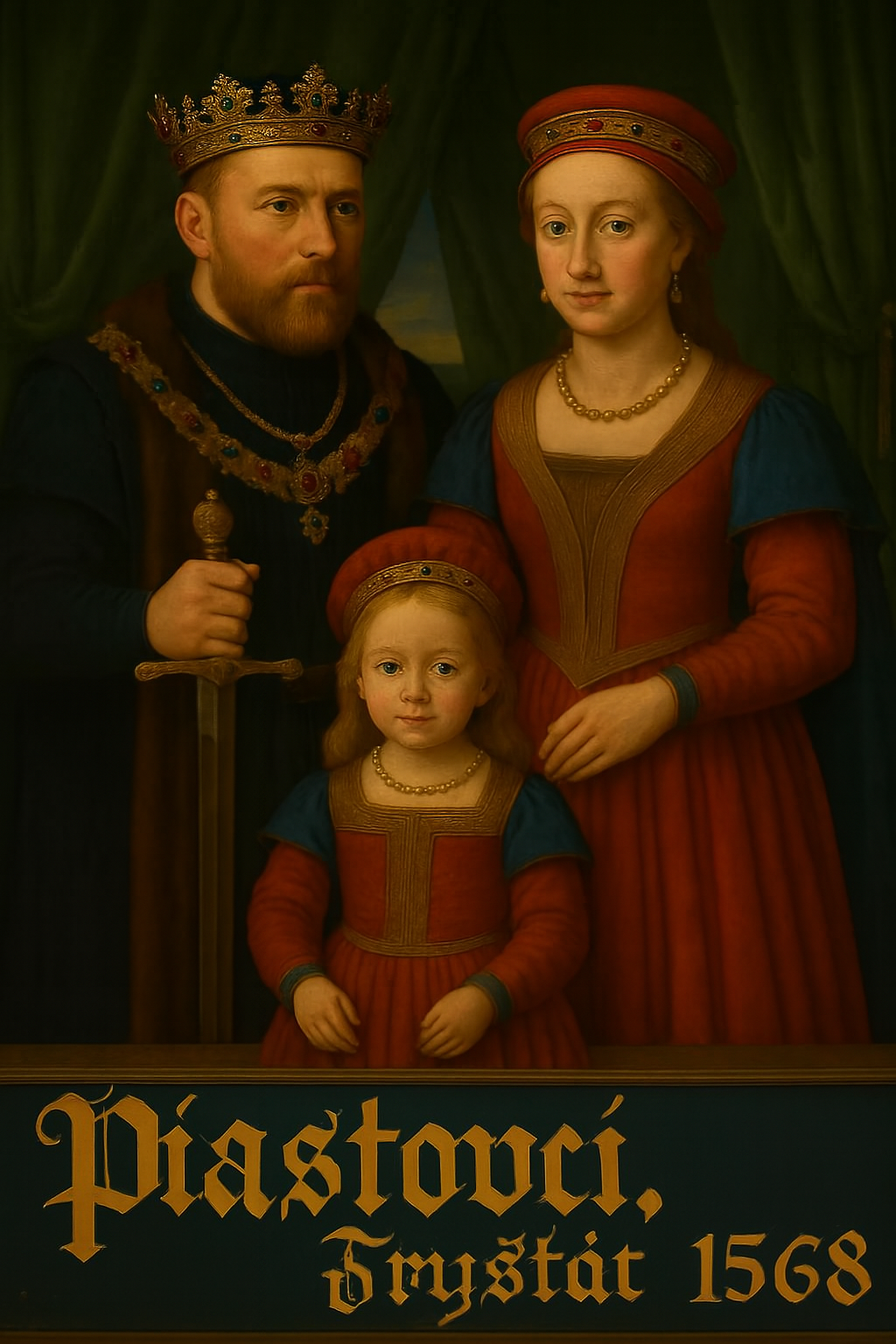
Now stand under the White Tower. The Castle Church of the Exaltation of the Holy Cross was built by the Silesian Duke Miecislav III Piast around 1282, initially as a simple chapel of the Virgin Mary, which was part of the Fryštát Castle. And since it was customary for the Piasts to also serve the townspeople, shortly after its construction it had to be equipped with a wooden floor inside to accommodate more people. It was not until around 1370 that the Fryštát Castle Chapel was finally expanded by the Silesian Duke Přemysl I Piast. The Duke built the present-day South Chapel here, under which he also built an underground crypt for the burial of dukes and clergy. In 1420, Duchess Euphemia II Piast expanded the original Castle Chapel again and built the present-day North Chapel next to it. The Castle Church thus acquired the Latin cross plan. The present-day appearance of the castle church, however, is the work of the Silesian viceroy Casimir II. Piastov. He carried out a major Renaissance reconstruction of the castle here in the years 1511 - 1514 and in 1515 began the construction of the White Tower, which replaced the previous wooden Gothic bell tower. Be sure to visit the castle church and the tower now, during your tour of Fryštát. Especially its North Chapel, where in its Gothic part from 1420 you can also visit the Fryštát knight Wenceslas, who will accompany you through Fryštát. The Gothic chapel has been decorated by Knight Wenceslas since 1577. Although the Gothic interiors of the Castle Church were replaced by Baroque architecture in the 19th century, some of its original Gothic elements can still be seen in the North Chapel, and there are also Gothic frescoes dating from the reign of the Silesian Duchess Anna Piast, mother of the Silesian Viceroy Casimir II. The Pastoforium, which you can see by the main altar, has been preserved from the time of Casimir's Renaissance reconstruction carried out in 1511 - 1514. The rectory building in front of the church stands on the original Gothic-Renaissance foundations also from the time of the Silesian Viceroy Casimir II. and the adjacent Renaissance courtyard with originally parish residential buildings also dates from the same period. The tower of the castle bell tower, called the White Tower, became the main dominant of the castle after this reconstruction. Ask at the castle cashier if the tower is open for tours. The white tower of Fryštát Castle also represents the local White Lady of Fryštát.
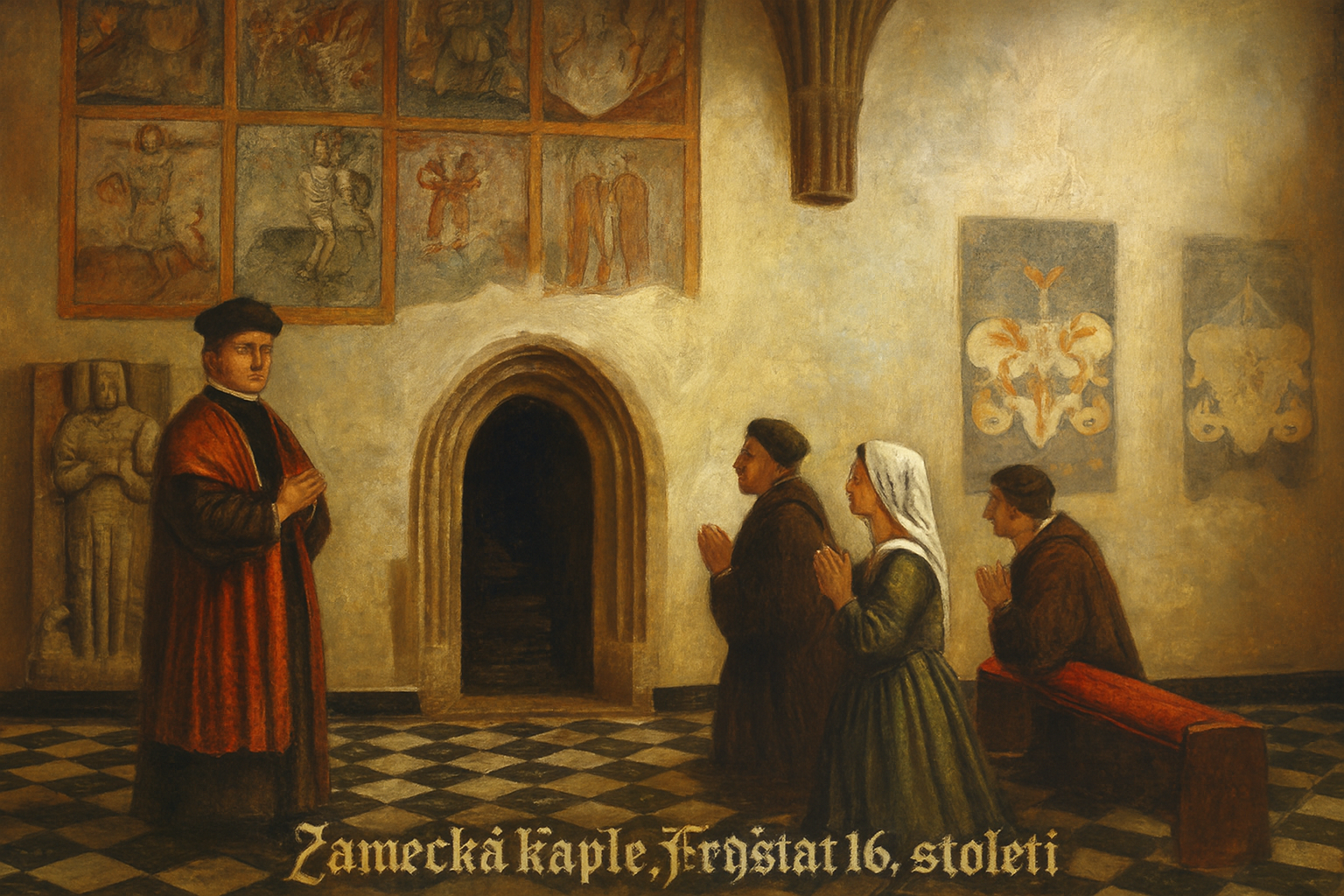
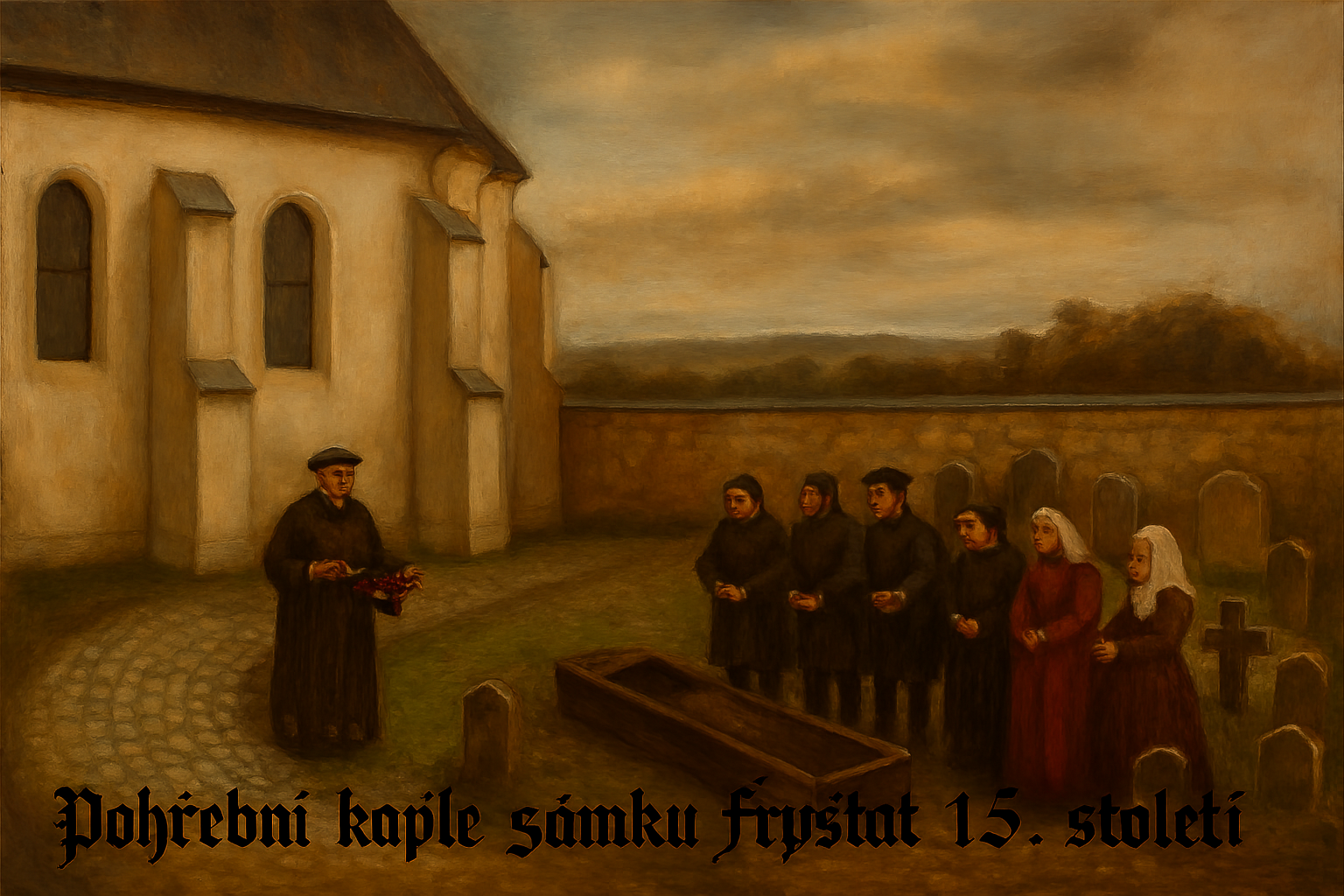
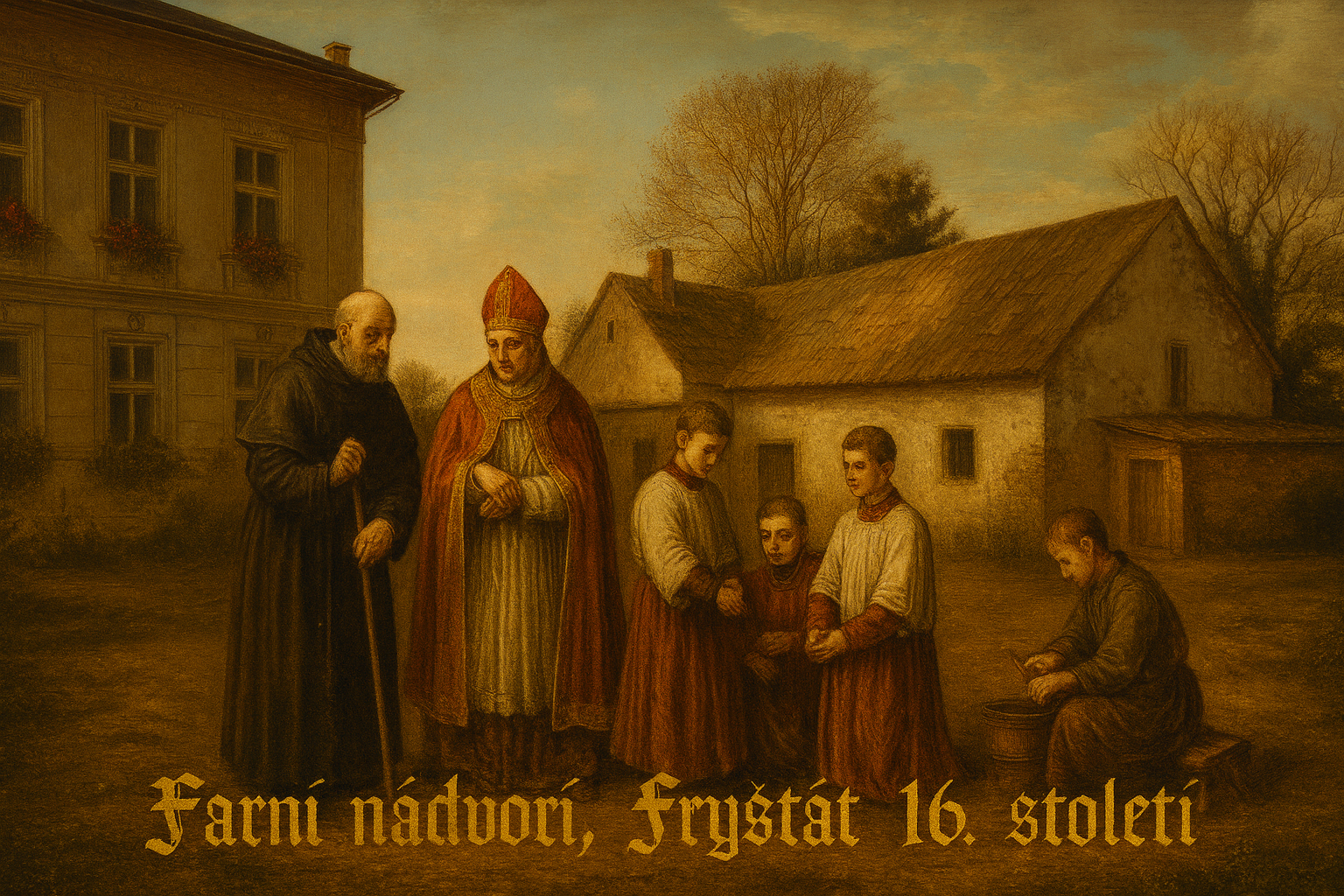

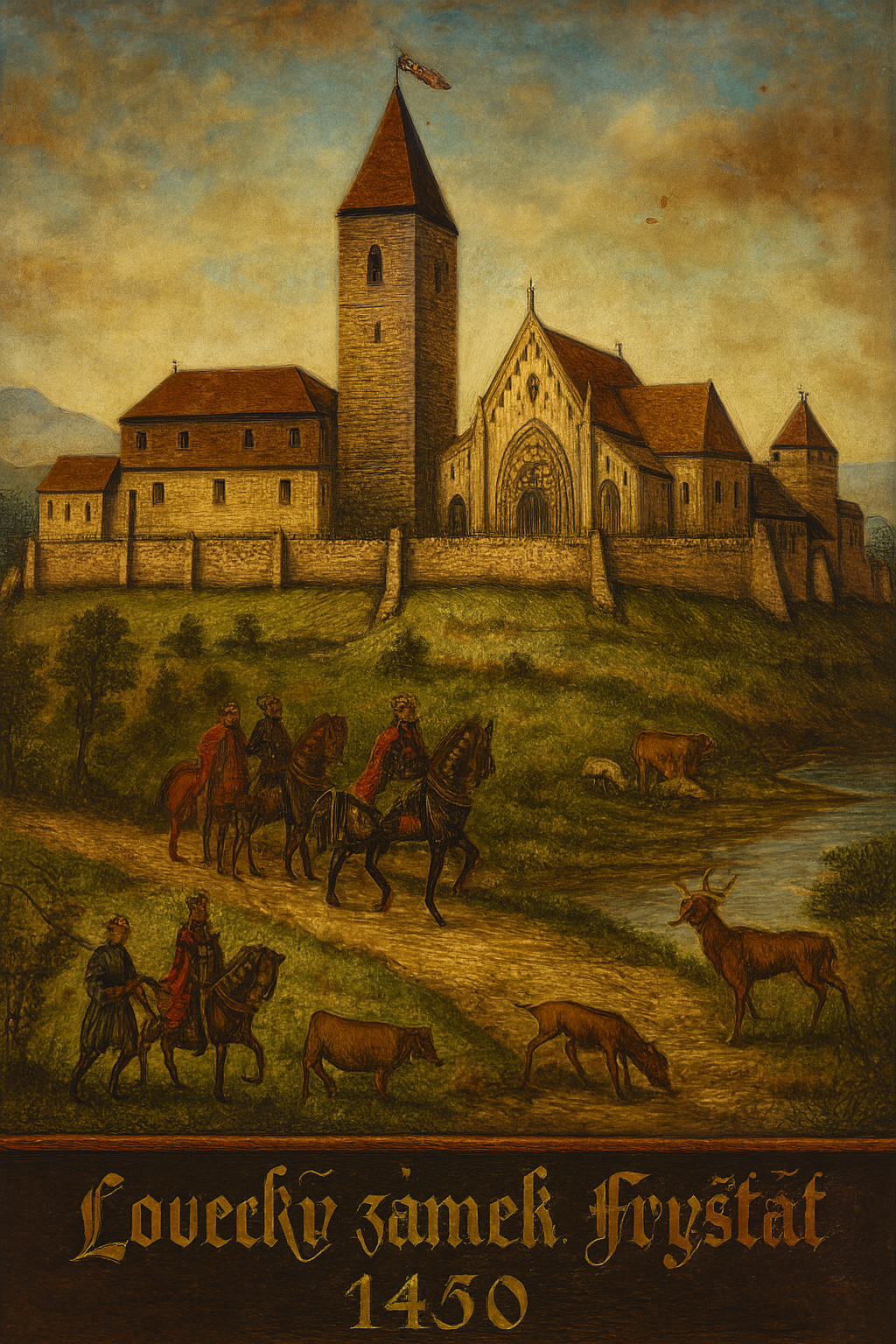
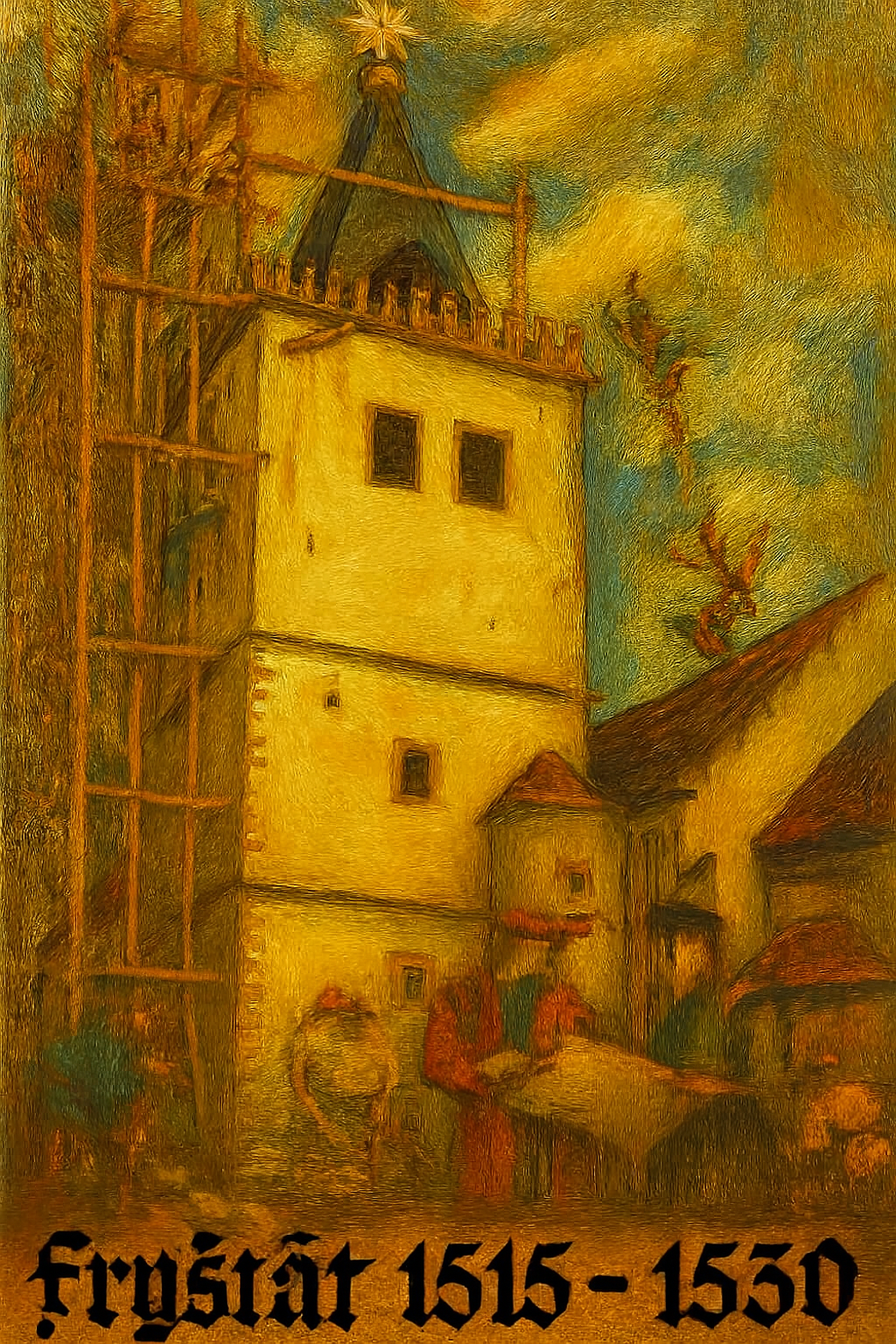
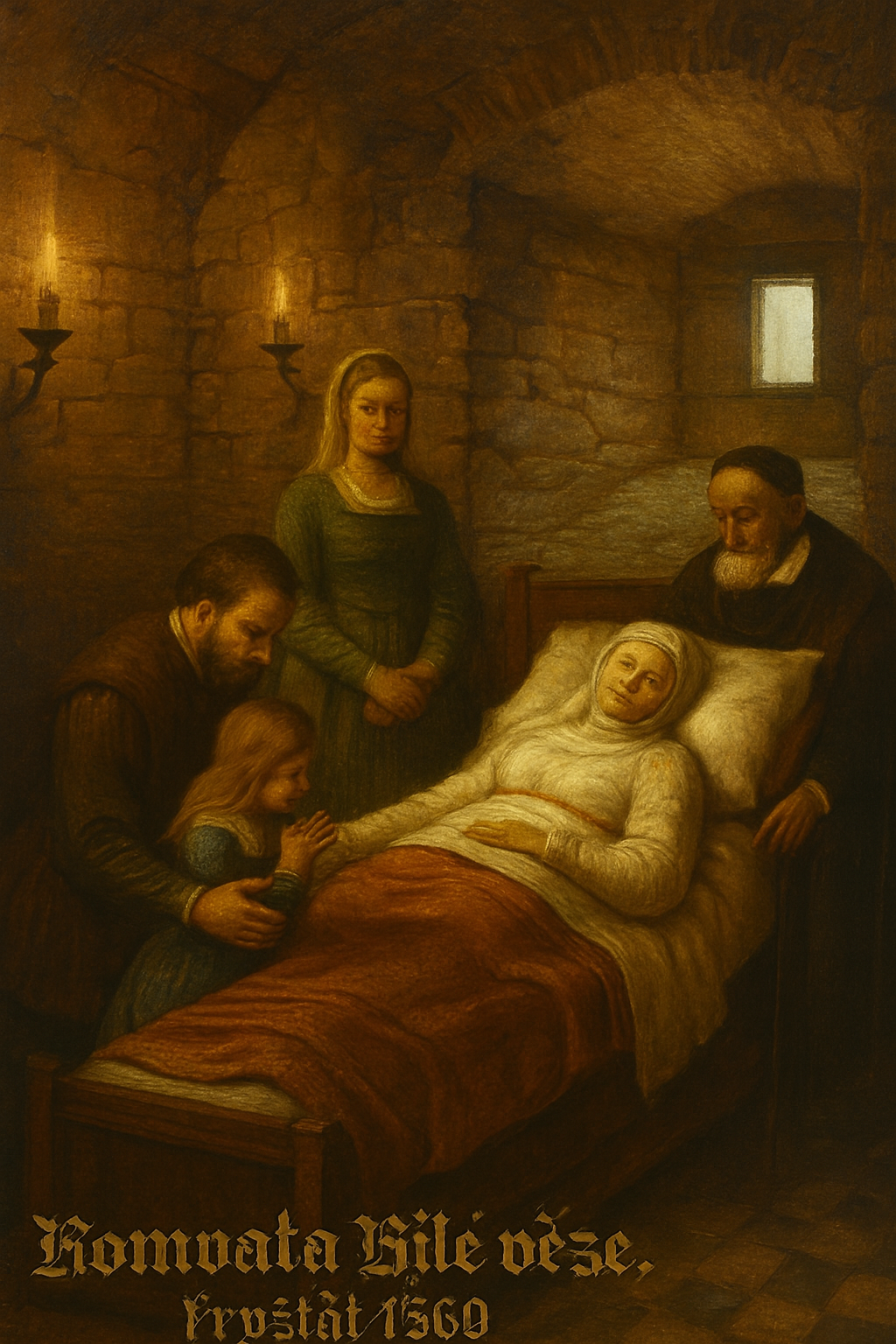
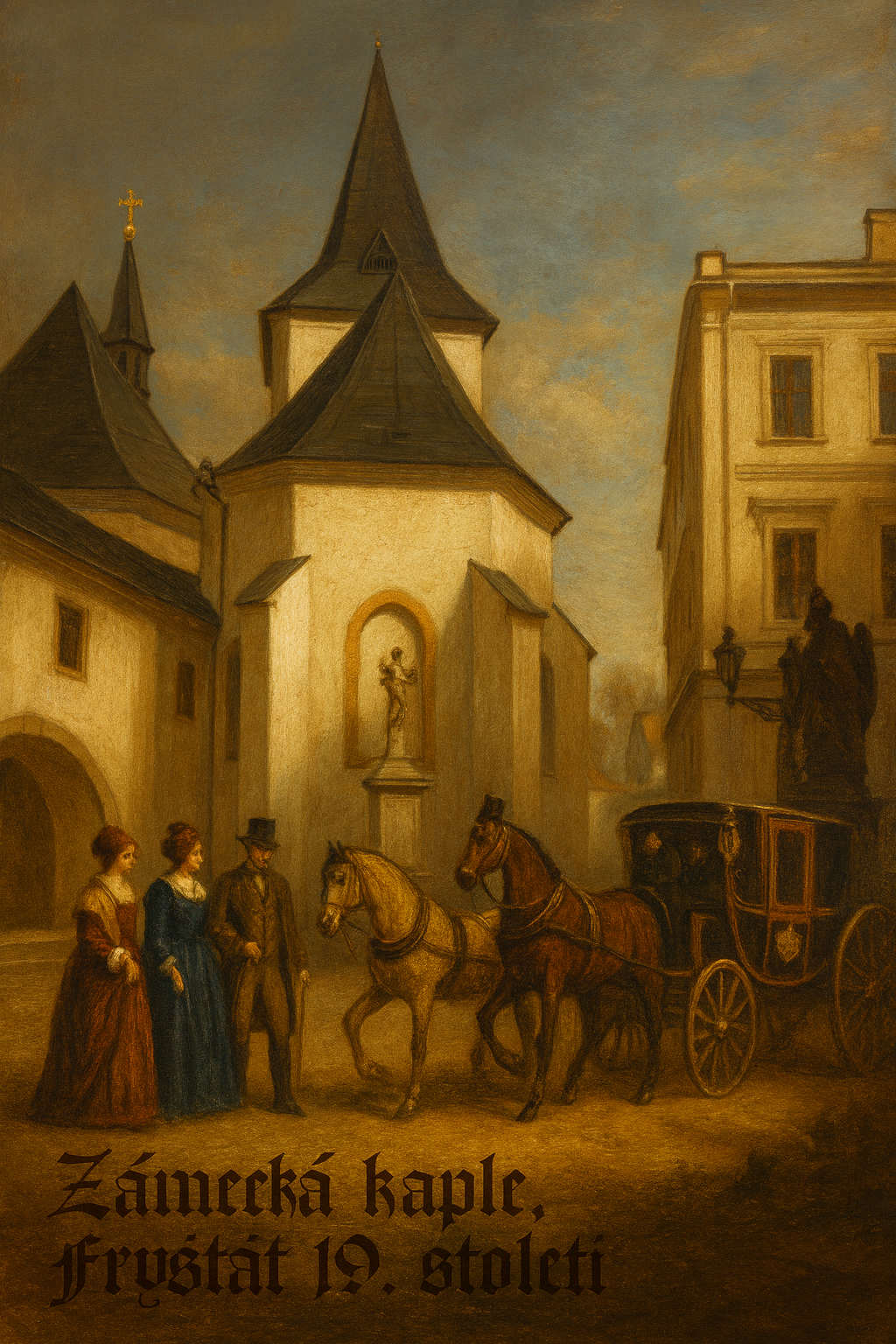
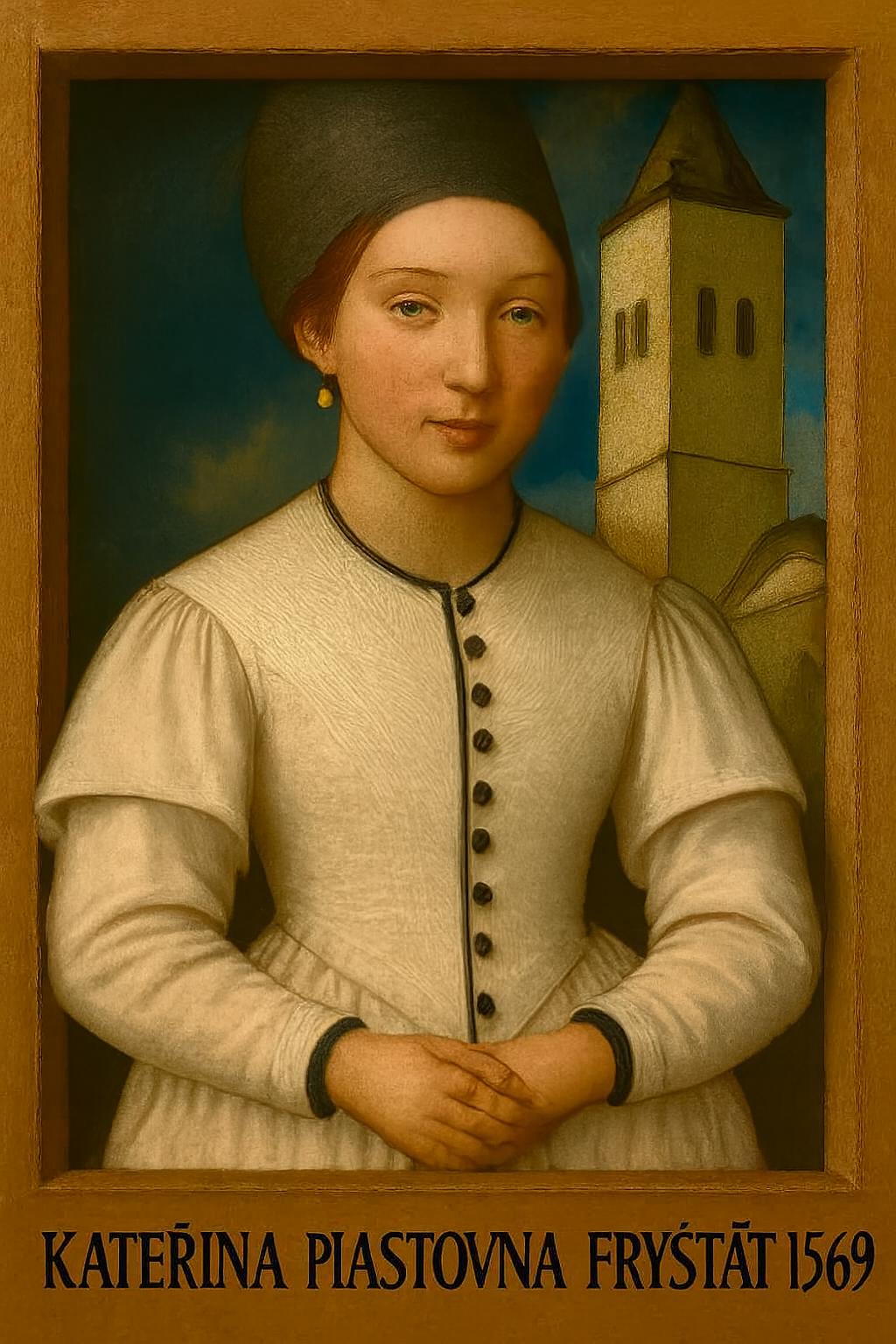
White Lady of Fryštát
Her Grace, Duchess of Silesia, Catherine Piast of the Legnica dynasty, was affected by the White Plague and had to be quarantined in the ground-floor chambers of the White Tower by His Grace, Duke of Silesia, Frederick Casimir Piast. Despite all the care of the healers, she died here in 1569 and His Grace, Duke Frederick Casimir, buried her in the castle crypt under the South Chapel. During her entire stay in the White Tower, the bells in the tower were not allowed to ring and the Duke visited her in the tower chambers every day with the little princess Catherine. Since Her Grace Duchess Catherine died here, we have begun to consider the tower as the White Lady of the Fryštát Castle, because the tower reminded us of the figure of a terminally ill duchess dressed in a white dress with buttons, with a high hat on her head and with her beautiful big eyes, lovingly embracing her daughter, Princess Catherine. Look at the tower from below and admit for yourself that with a little imagination, the White Tower with the lower turret can really look like this... The bells rang for the first time after several months of silence on the day Her Grace Duchess Catherine died here. It was September 3, 1569. Not only Silesia, but the entire Czech Kingdom fell into mourning, because Her Grace the Silesian monarch and the highest-ranking Czech aristocrat had passed away.
According to the map, you can reach stop number 4 "PIVOVAR" by walking down Pivovarská street and stopping at the Pivovar courtyard.
4 - BREWERY


Casimir's father, Silesian Duke Boleslav II Piast, founded a princely brewery in Fryštát in 1447
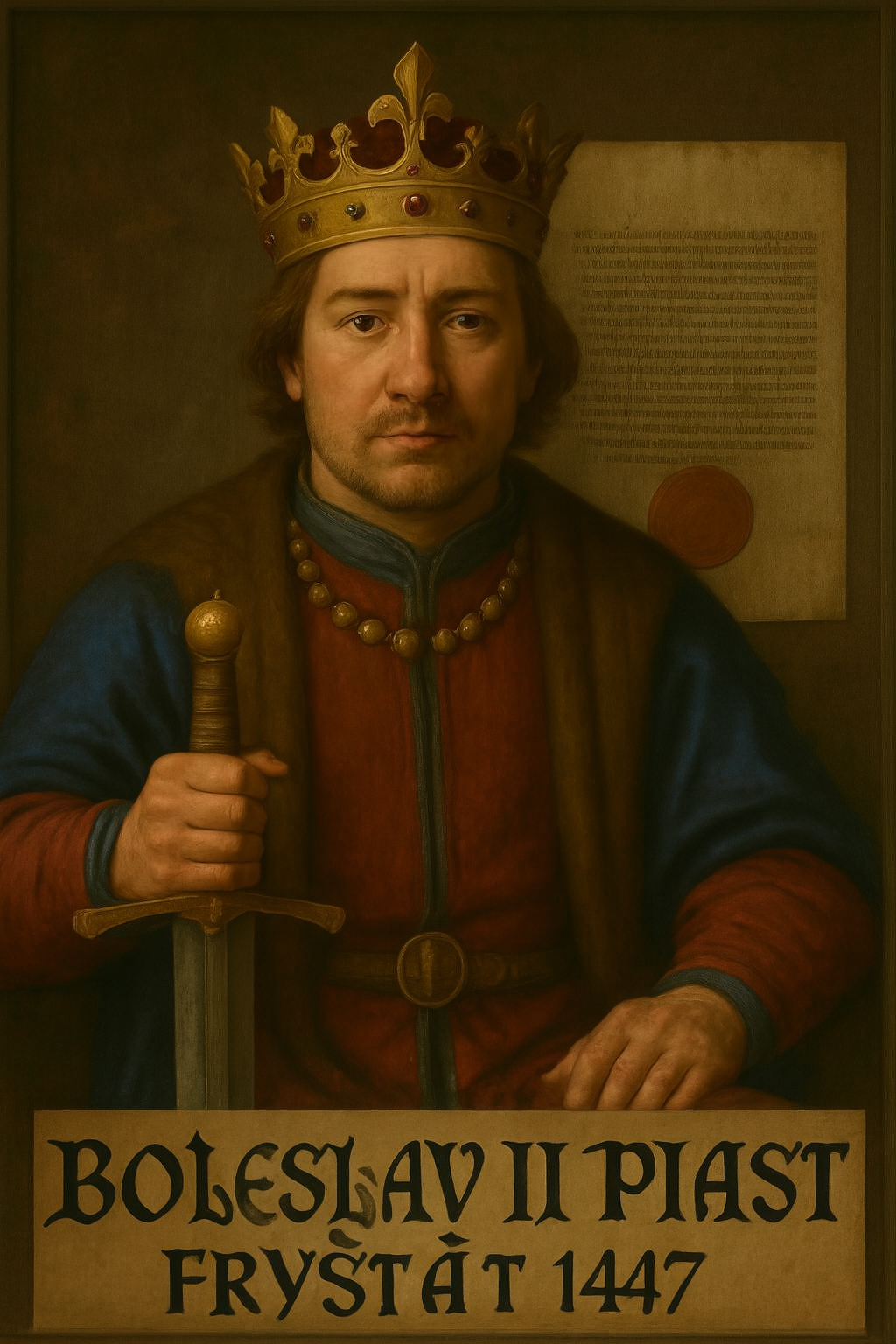
You are in the neo-Gothic courtyard of the Fryštát Castle Brewery. It was founded in 1447 by the Silesian Duke Boleslav II. Piast. In the same year, he also elevated his residence Fryštát above other Silesian towns and continued the close family ties of his mother, Duchess Euphemia II. with the royal Jagiellonian dynasty. The Castle Brewery was actually a cooperative brewery, in which a large Fryštát aristocracy had a stake. Duke Boleslav II. placed the brewery's headquarters in the building of today's extended part of the Town Hall, which we will visit later, and it was moved to this location in Pivovarská street at the beginning of the 16th century by Boleslav's son, the Silesian Viceroy Casimir II. The oldest surviving building of the Duke's Brewery here in Pivovarská street is its Renaissance malt house from the early 16th century, where today there is a legendary, medieval tavern called "Na Bečkách", where you are invited to refresh yourself with delicious Fryštát beer.
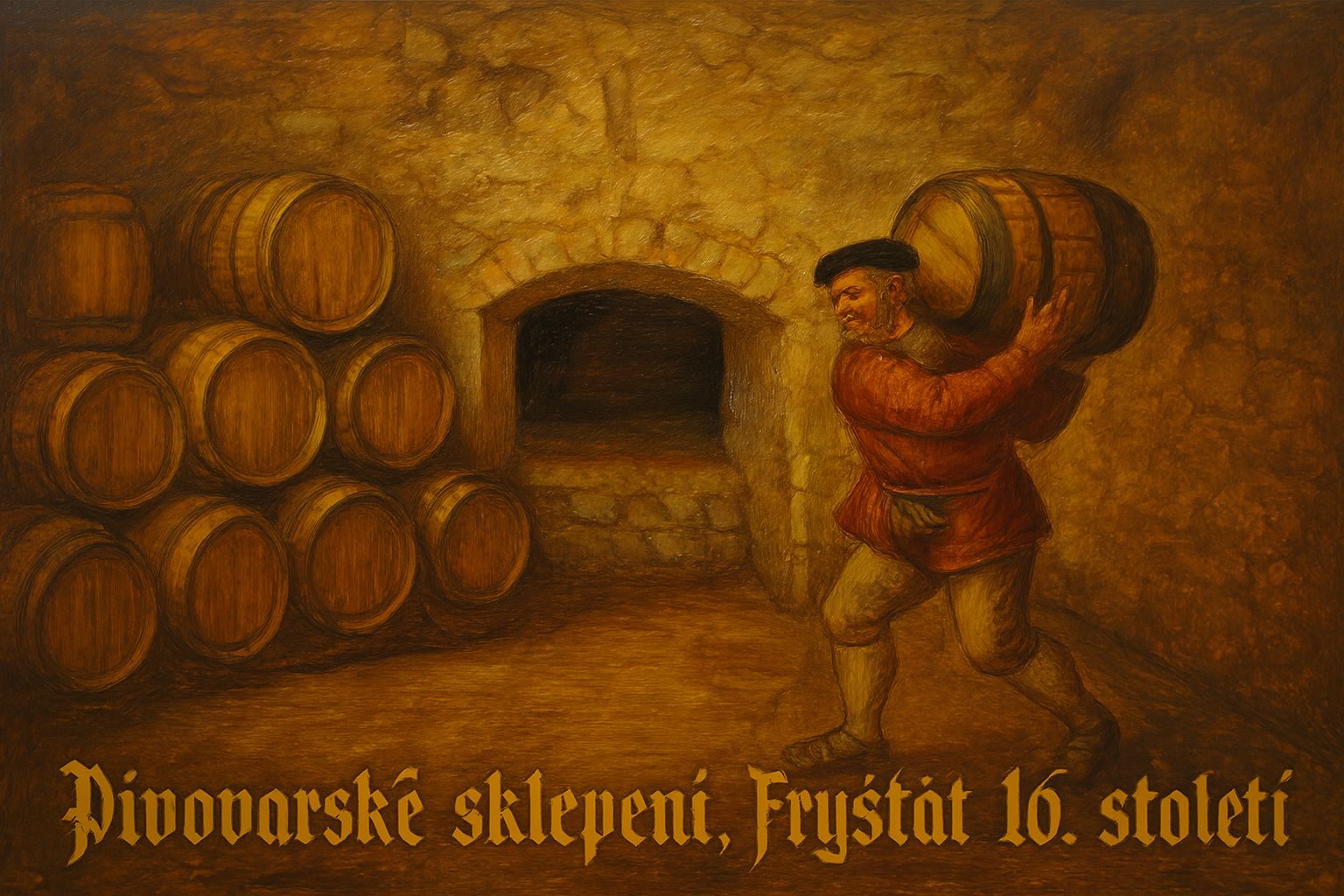
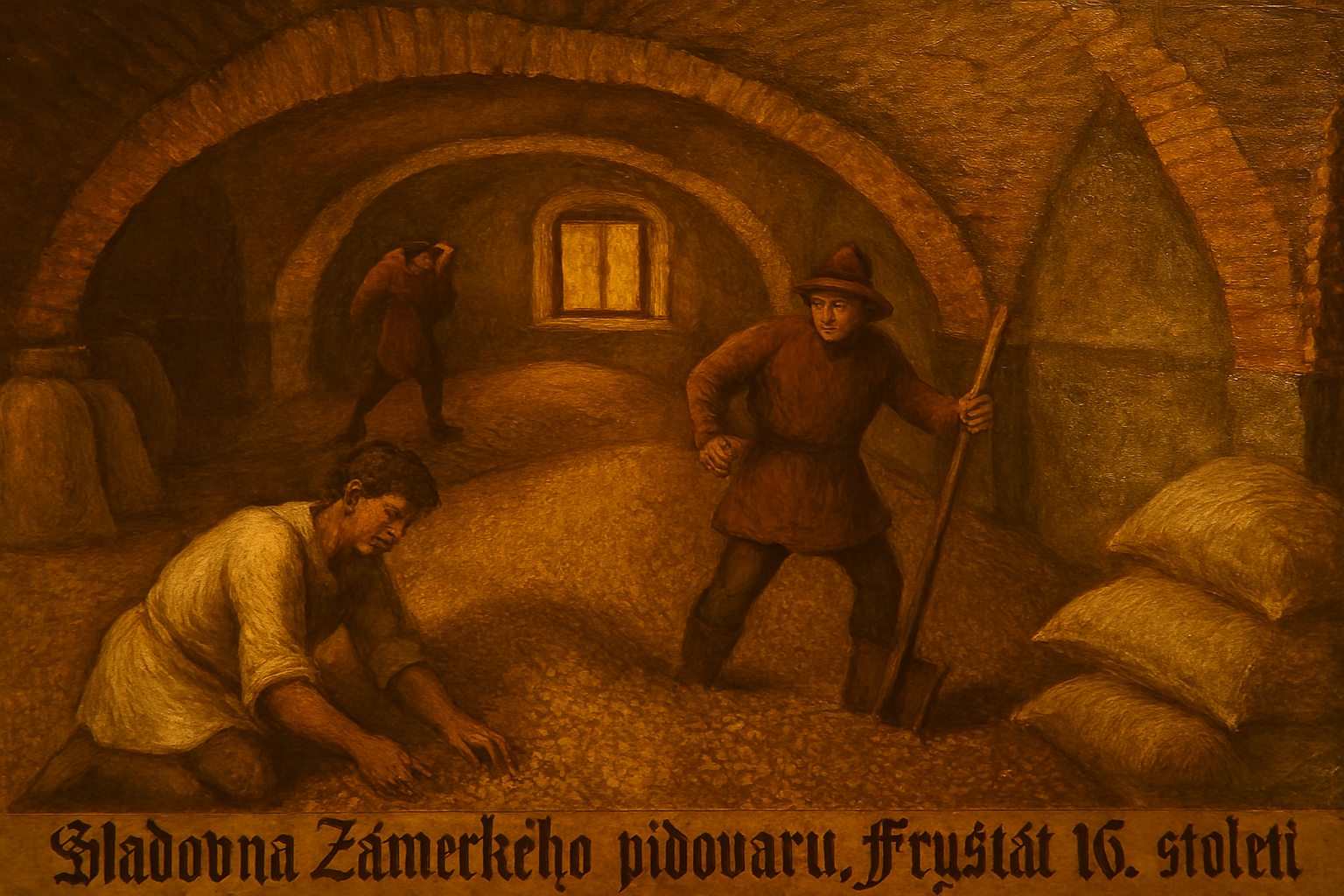
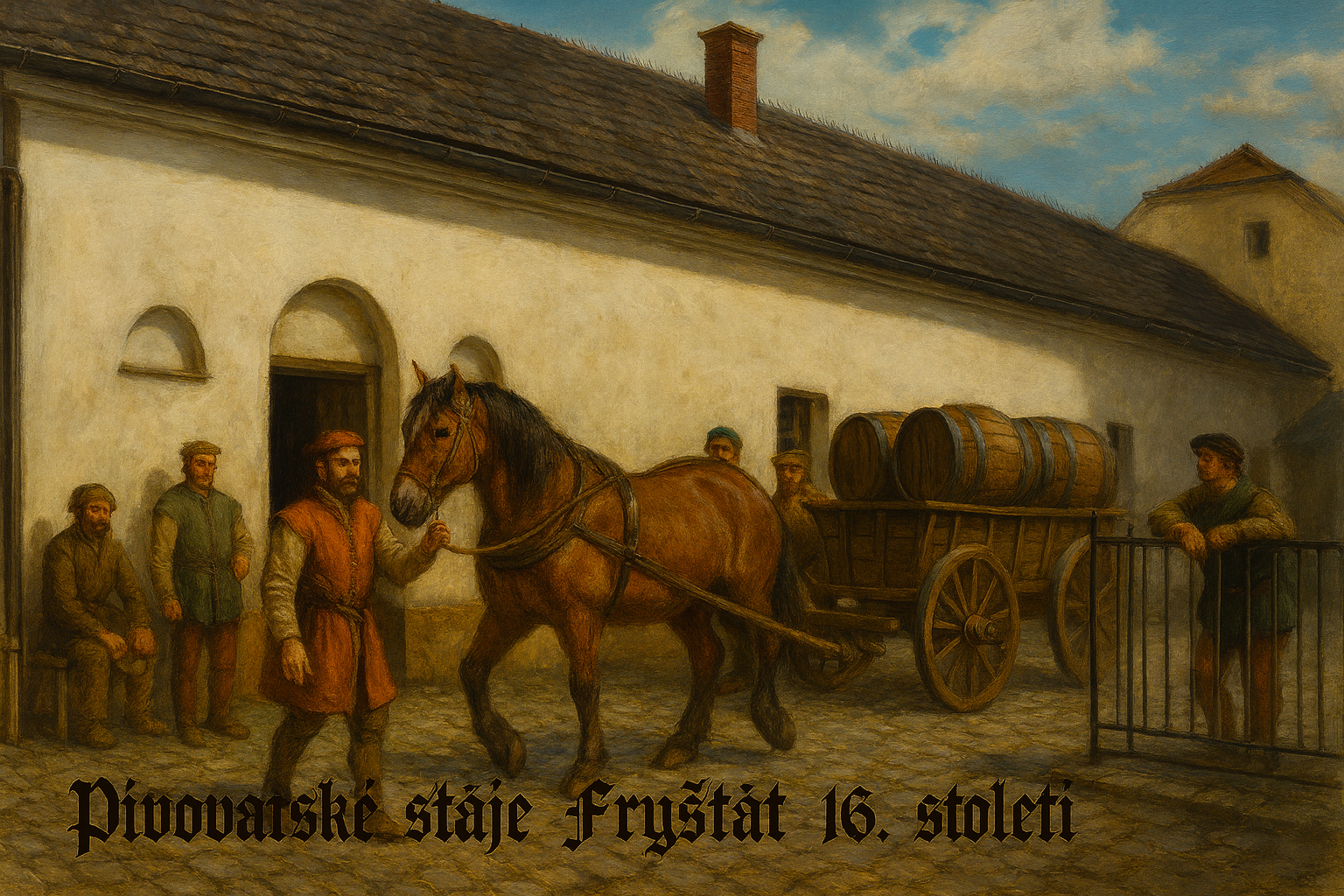
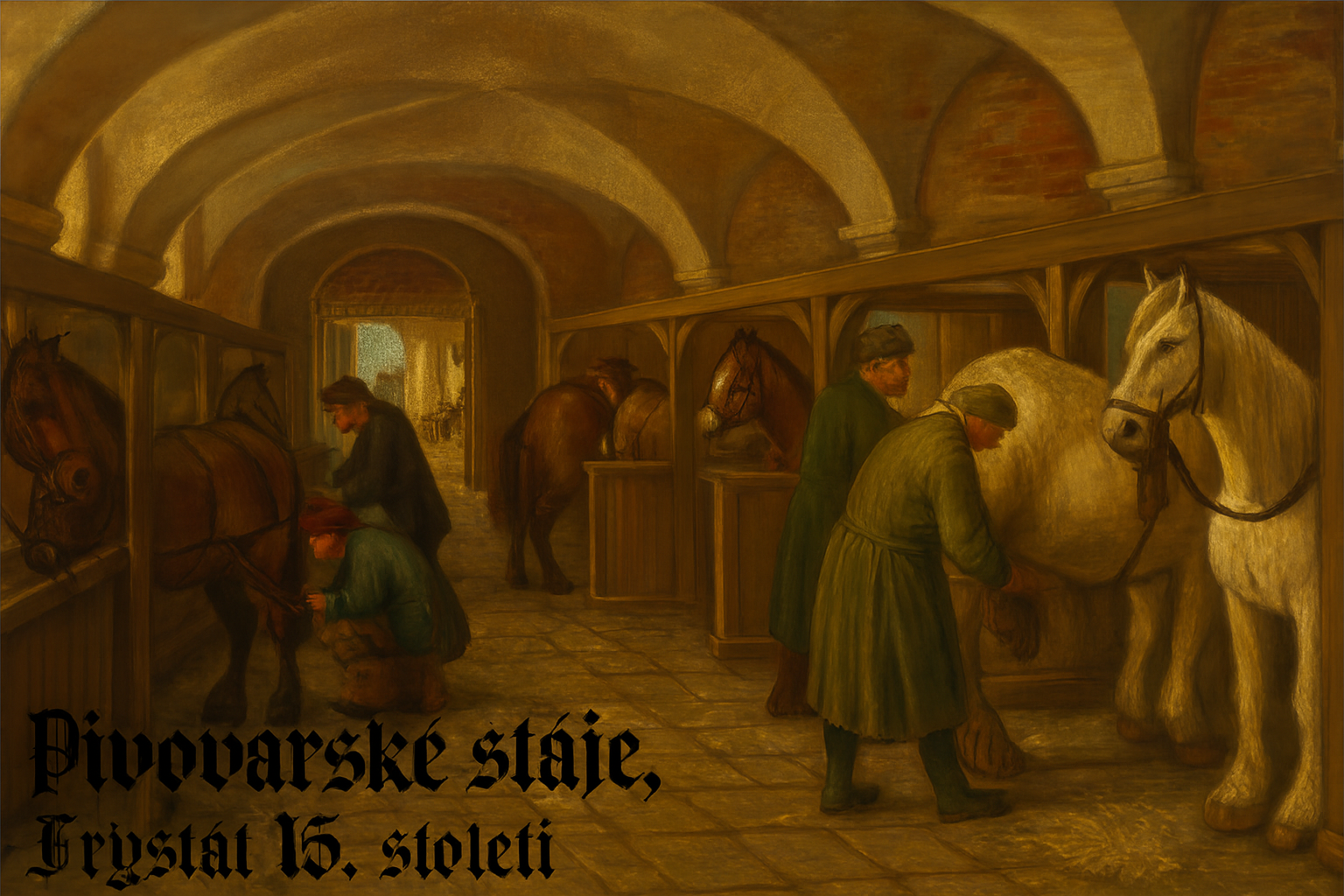
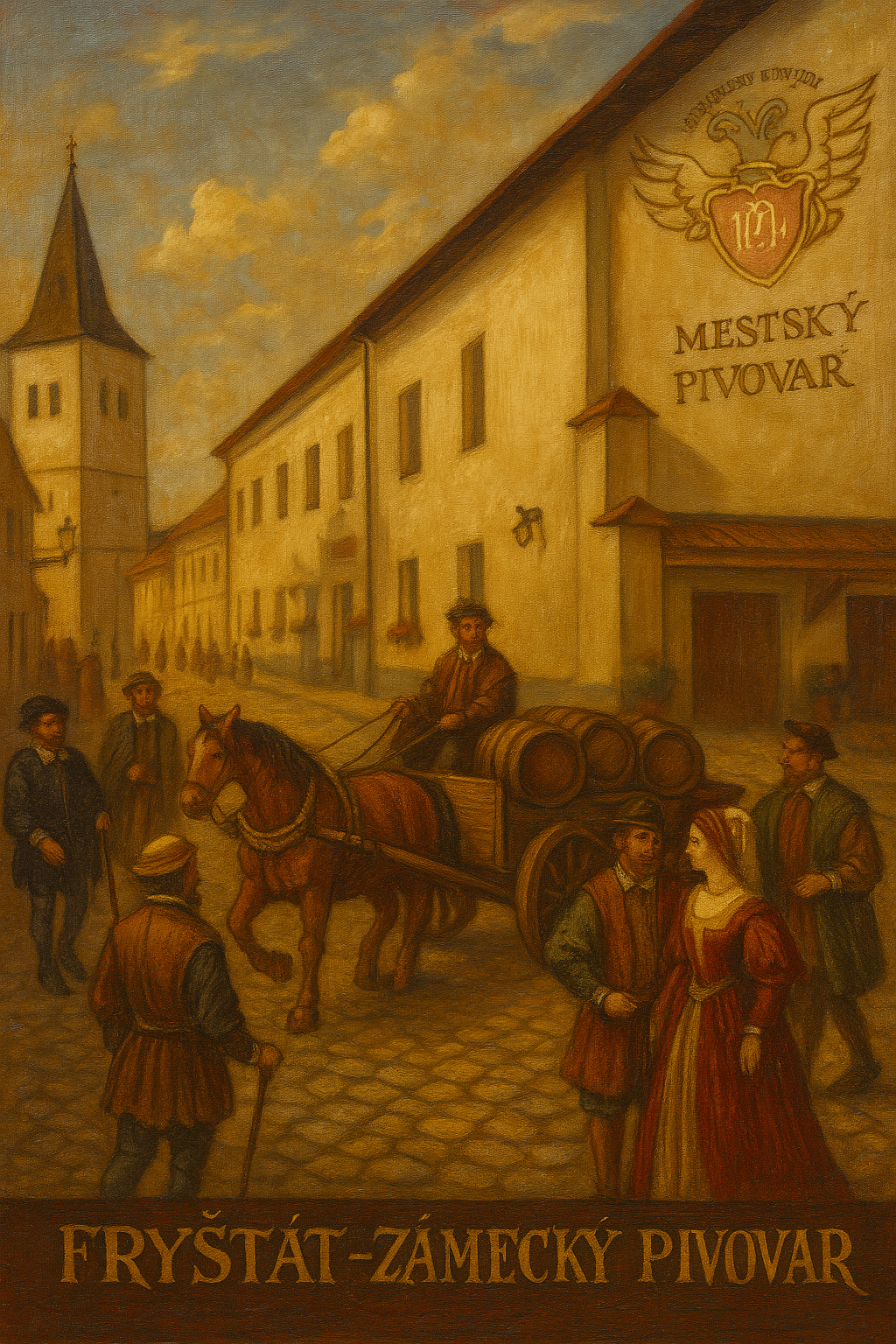
Operation of the Fryštát brewery
The local castle beer was drunk in large quantities by the townspeople of Fryštát, but it was also supplied to the ducal table and enjoyed by the famous royal processions that spent the night in Fryštát on the way between Vienna, Prague, Krakow and Saxony. Opposite the brewery, there is still a brewery stable that was used by the Duchess of Saxe-Lauenburg in the second half of the 16th century during her stays in her private palace in Fryštát. Under Fryštát there is a network of unexplored underground passages, often connecting the cellars of the townspeople's houses, through which the material for beer production flowed. There was a well under the Town Hall, here in Pivovarská Street there was a malthouse, but the actual brewing of beer took place in the cellars of the licensed brewing houses, of which there were 80 in Fryštát in the 15th century and 90 in the 16th century. This production cycle was interrupted only by the Thirty Years' War after 1642. Most of the breweries were destroyed during this war, so only 4 have survived to this day. Two houses with taverns are in the Castle Courtyard by the fountain, one is opposite the entrance to the Town Hall and one is in the Pre-Castle, where a knight's tavern has been operating since 1564. The breweries were also the rectory, which has survived to this day, the aforementioned palace of the Duchess of Saxe-Lauenburg, and the northern part of the Lottyhaus, which until 1823 was two separate burgher houses, connected to the Lottyhaus only in that year. The other burgher houses today stand on the medieval foundations of the breweries and also have preserved cellar rooms that formed the brewery corridors.
According to the map, you can reach stop number 5 "NÁDVOŘÍ" by walking to the end of Pivovarská street, turning right and stopping at the corner house with the sign KNIHOVNA.
5 - COURTYARD


Casimir's Fryštát Castle Courtyard welcomes royal processions at the turn of the 15th and 16th centuries
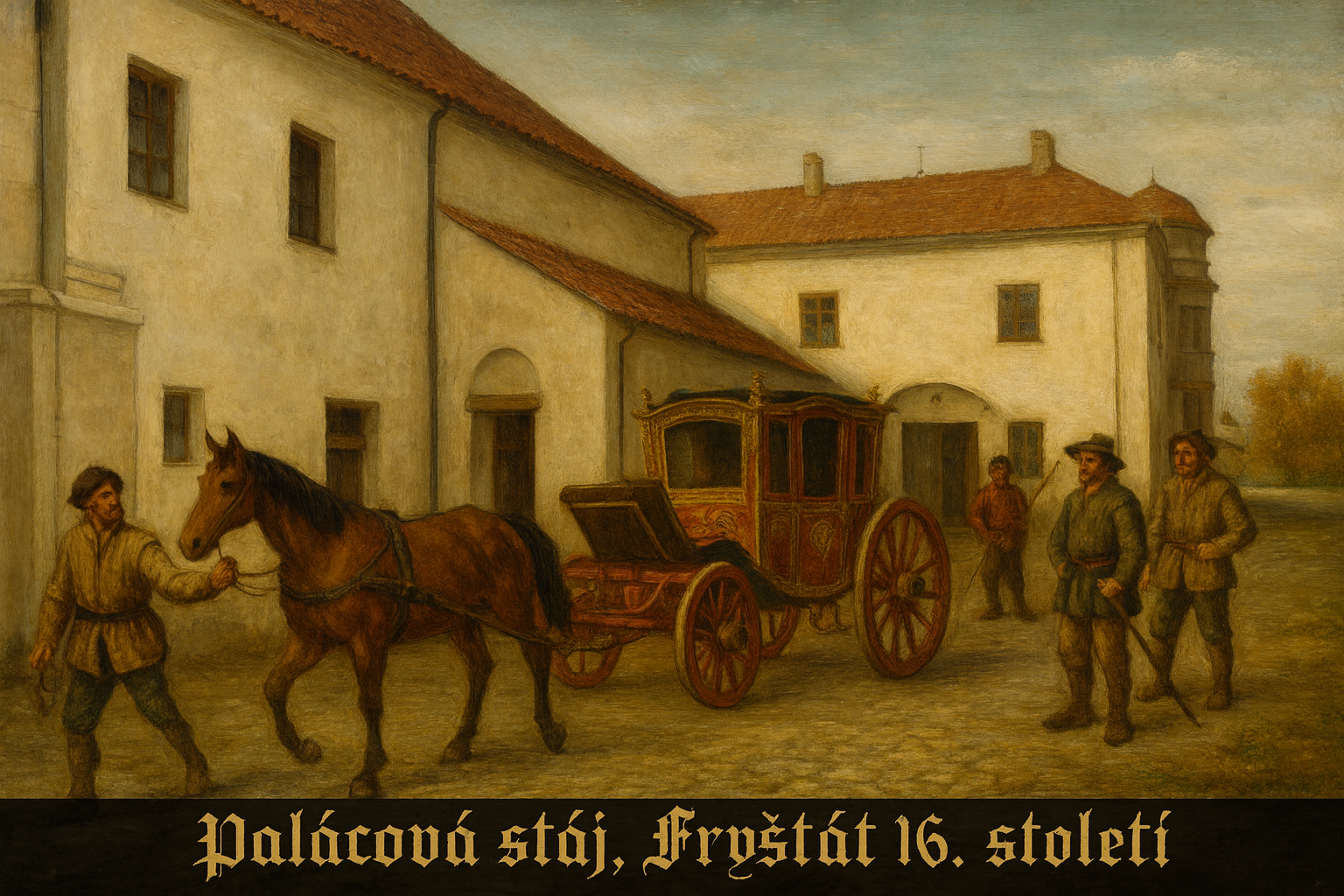
Stop at the corner house with the inscription LIBRARY. This house is a beautiful example of a Gothic-Renaissance palace with an adjacent stable building, which currently houses the Museum's exhibition hall. In 1567, it was given to the Saxon Duchess Sidonie of Saxe-Lauenburg as a wedding gift after she married Duke Wenceslas III. Adam in Silesia. The Duchess arrived in Fryštát with a 300-member procession, where she was welcomed in front of the castle by the Silesian Duke Frederick Casimir on a horse with a yellow crest and dressed in the Upper Silesian blue and gold colors. In front of the castle, he and the Silesian Duchess Catherine presented her with a large French gold chain. Duchess Sidonie enjoyed staying in her new Fryštát Palace, especially after her widowhood in 1579. After that, until her death in 1594, she walked around the Fryštát Courtyard dressed exclusively in black, earning her the nickname the Black Princess. In the 19th century, Duchess Sidonie's Palace served as the residence of the Larisch-Mönnich Castle's Majordomo, and its stables housed the most precious Larisch-Mönnich horses. Today, you can visit the library and see its Gothic-Renaissance Mazhaus.
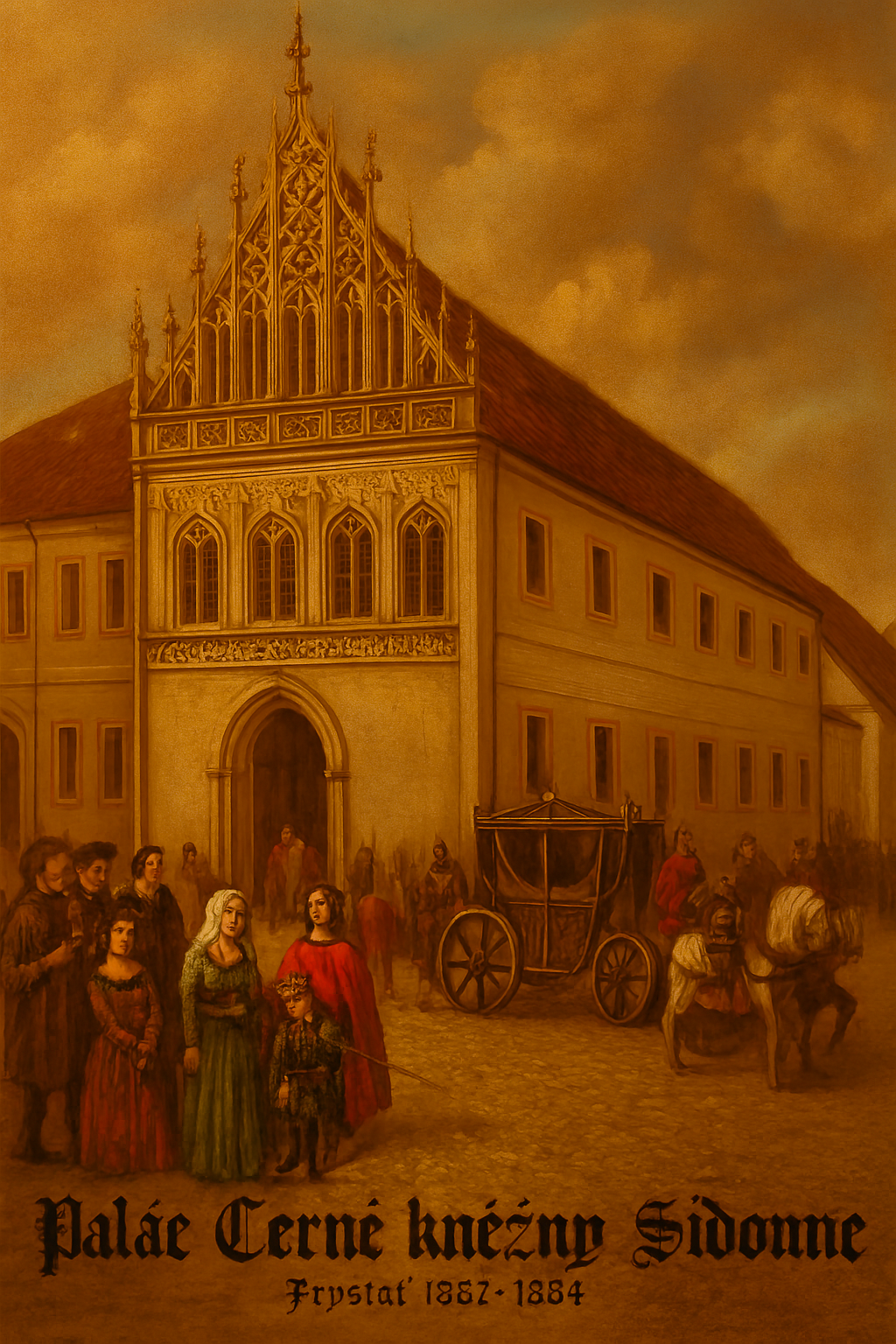
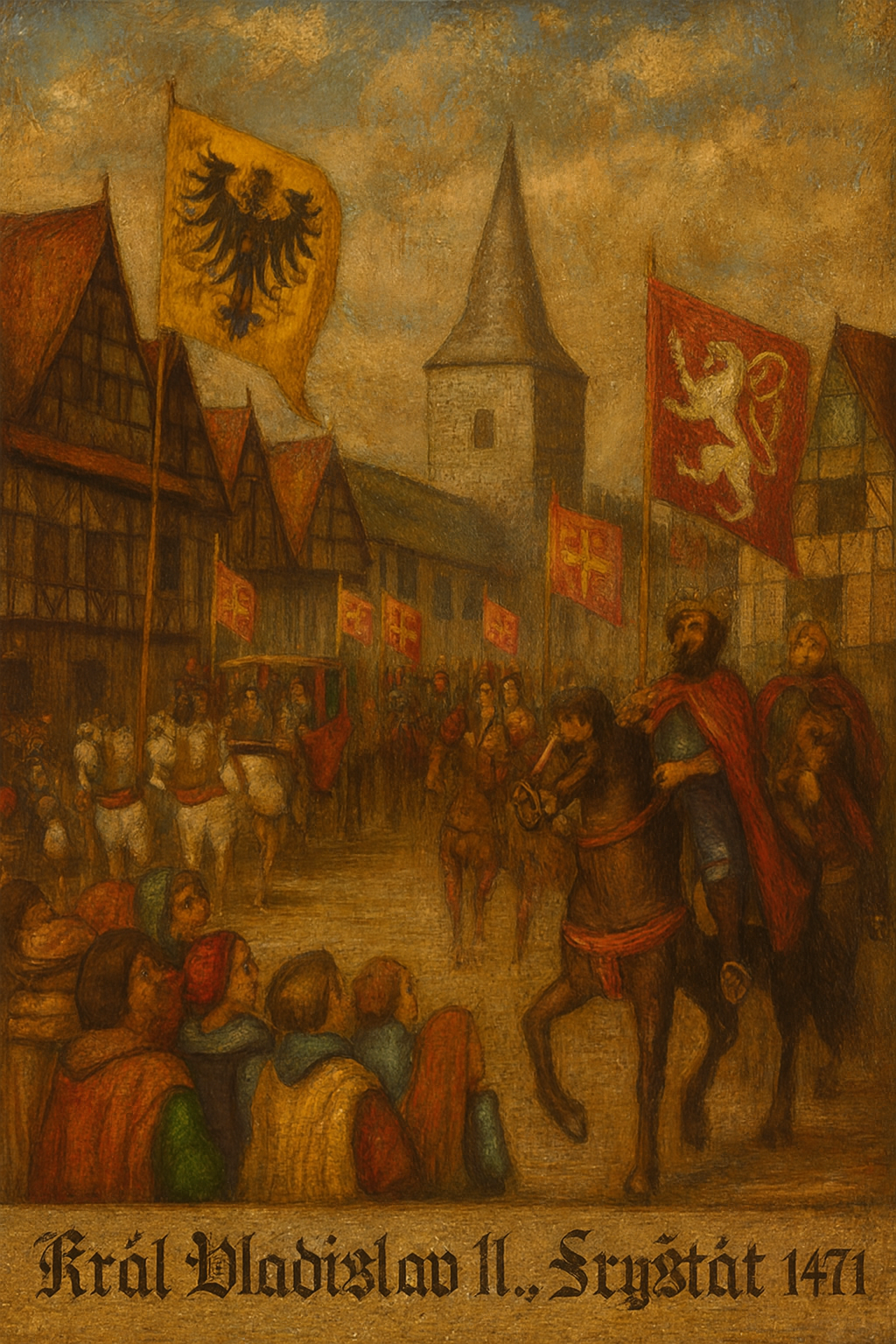
Central Fryštát, where we are located, was established from the end of the 13th century and, as the residential town of the Silesian dukes, was the only Fryštát district surrounded by walls. However, until 1511, the Fryštát square was separated from the castle courtyard. The Dubina stream flowed through the middle of the square, heading towards the castle, where it fed the moats surrounding the castle fortifications. Between the square and the castle stood a number of burgher houses, similar to what we can still see in the Silesian town of Hlučín. Wedding processions of queens Elizabeth of Habsburg, Bona Sforza, Catherine of Habsburg, or on February 7/8, 1454, the procession of Elizabeth of Austria, who went to Krakow to marry the Polish king Casimir IV. Jagiellon, arrived at such a Fryštát square. In June 1471, both of them arrived from Kraków to Fryštát again, this time accompanying their son, the young prince Vladislav II. Jagiellon. This famous, ten-thousand-strong royal procession was led by the Silesian Duke Casimir II. Piast. The royal procession stayed here, and the Silesian Duke Casimir II. hosted the Jagiellonians at his home castle for several days of their stay and entertained them with various festivities, knightly tournaments and hunting expeditions. Then the entire procession set off for Prague, where Vladislav Jagiellon was crowned King of Bohemia.
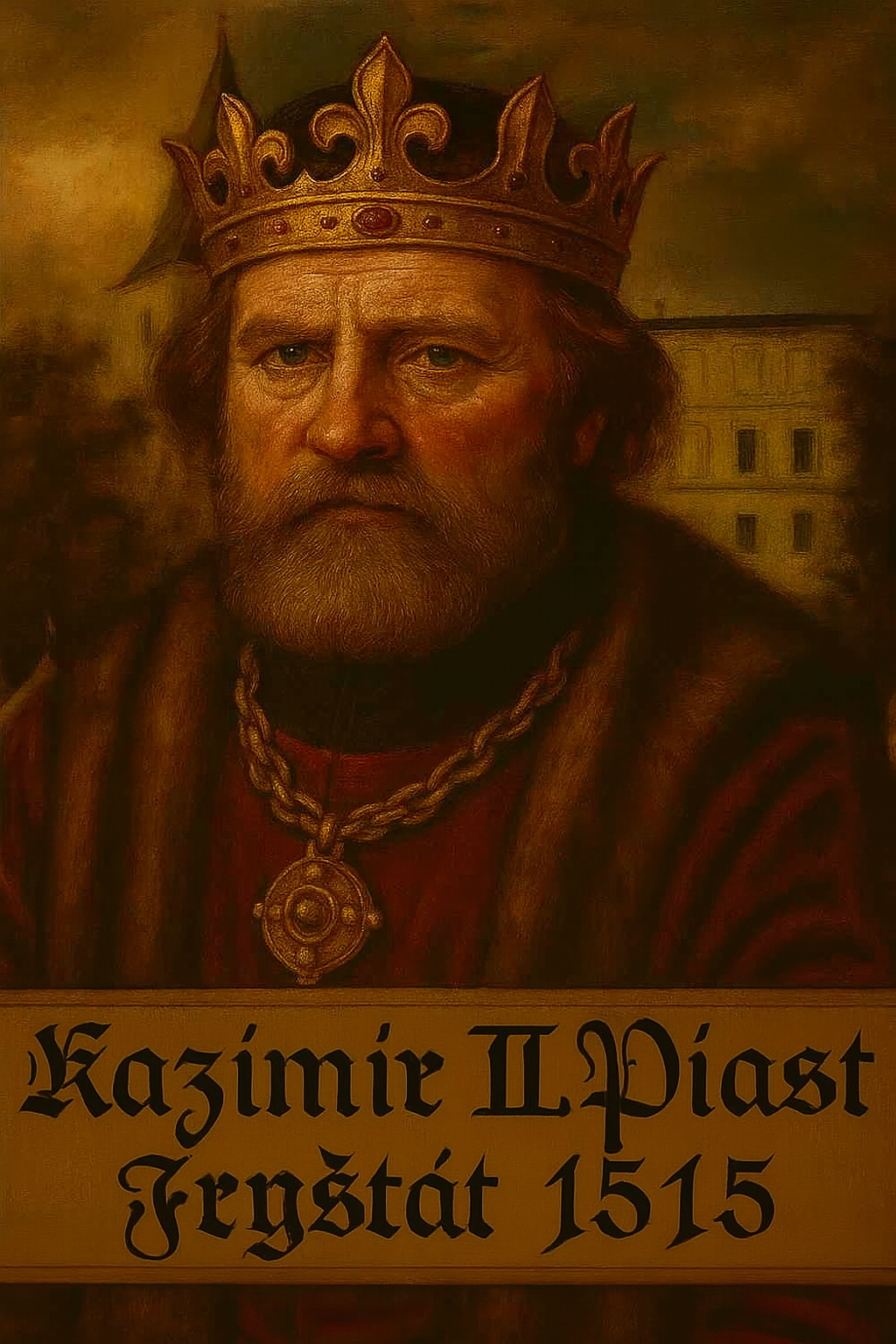
Fryštát Square underwent a Renaissance reconstruction between 1511 and 1514, when the Silesian Viceroy Casimir II. carried out a Renaissance reconstruction of his Gothic hunting castle here. He demolished the castle's northern fortifications with moats and bought the houses that stood between the castle and the square from the townspeople. The castle thus opened up to the square, creating a large Castle Courtyard with alleys, as you can still see it after 500 years. The richest townspeople lived here, and since the castle was almost permanently inhabited by the Silesian dukes between 1431 and 1571, Silesian aristocrats, courtiers and court officials also lived here, who were constantly at the service of the dukes. The New Castle Courtyard immediately became the center of events. Festivals, markets, knightly tournaments were held here, and other royal processions stopped here. The oldest regular event in the Castle Courtyard, which is still held today, is the Easter Market, founded by the Silesian Viceroy Casimir II in 1473. During these markets, it was very busy. Sellers shouted loudly at each other with their wares, poultry and small livestock ran around, and jugglers and musicians provided cultural entertainment. There was no shortage of paws either, which is why the castle guard, who also served as the medieval city police in Fryštát, was constantly patrolling the courtyard. In the courtyard, don't forget to take a picture with the beautiful Vienna Fountain from 1900, which stands in place of the original medieval one from 1543, and also visit the City Gallery located in one of the burgher houses on the northern front of the courtyard. Near the fountain there were footbridges, the remains of which are still preserved under the paving stones.
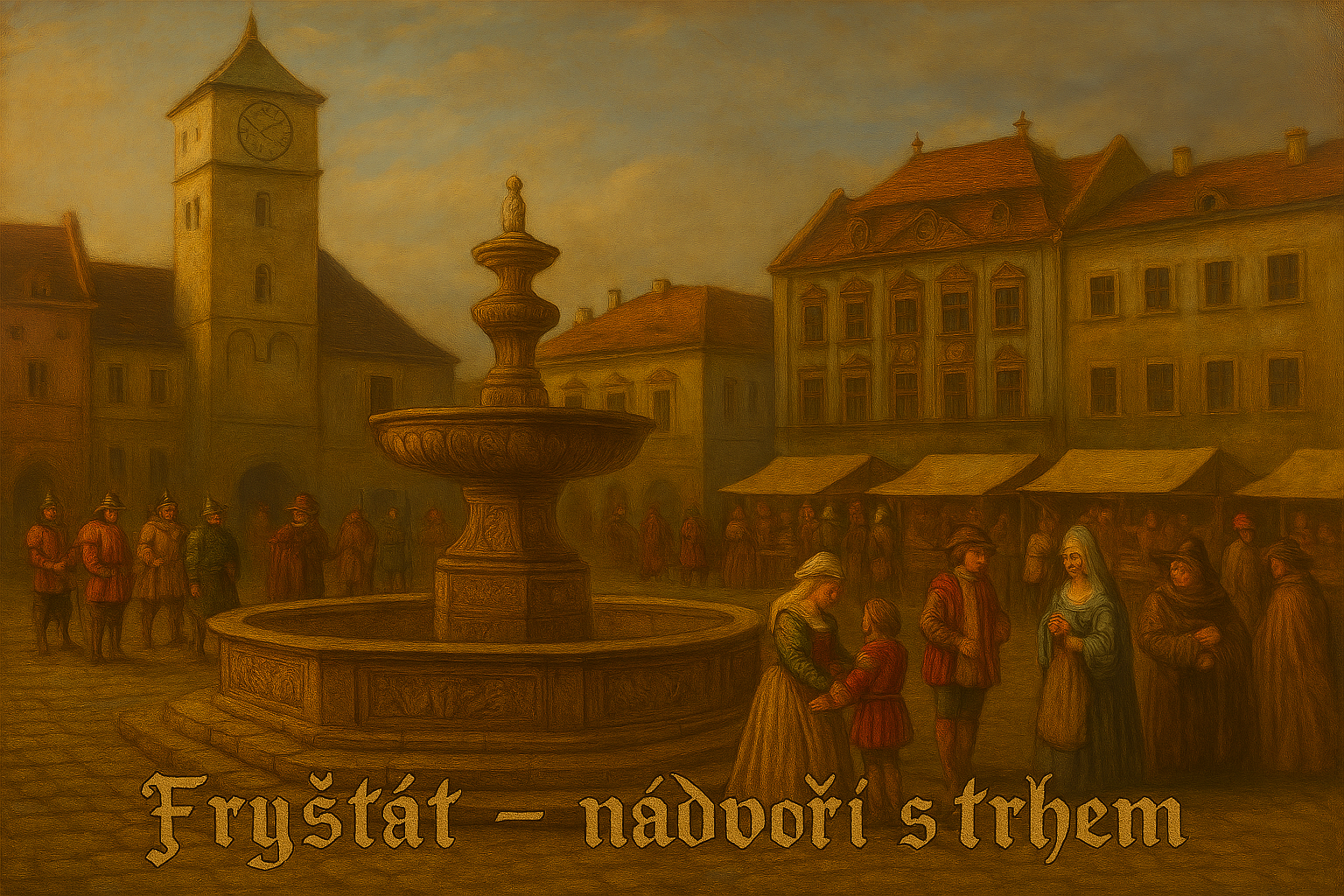
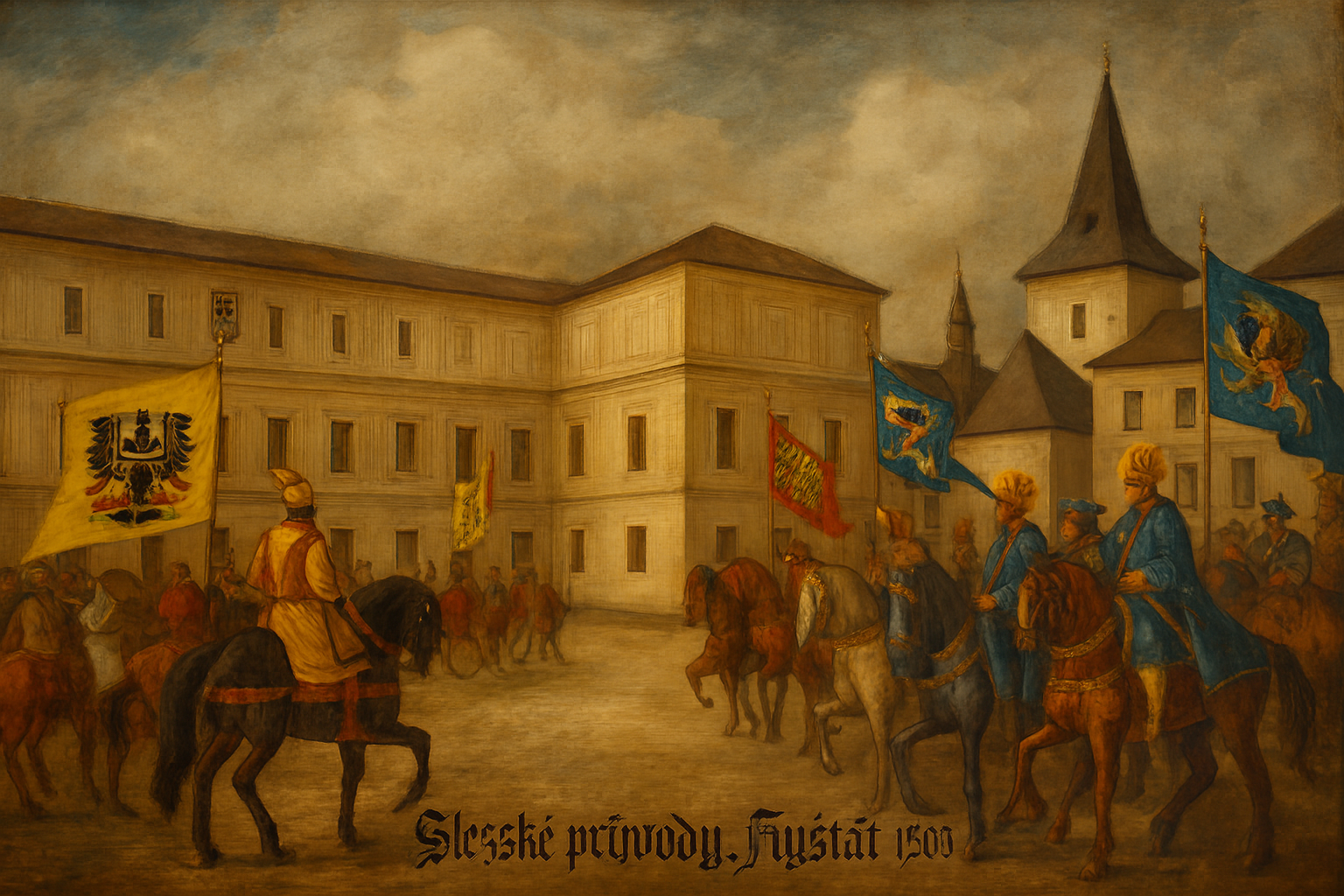
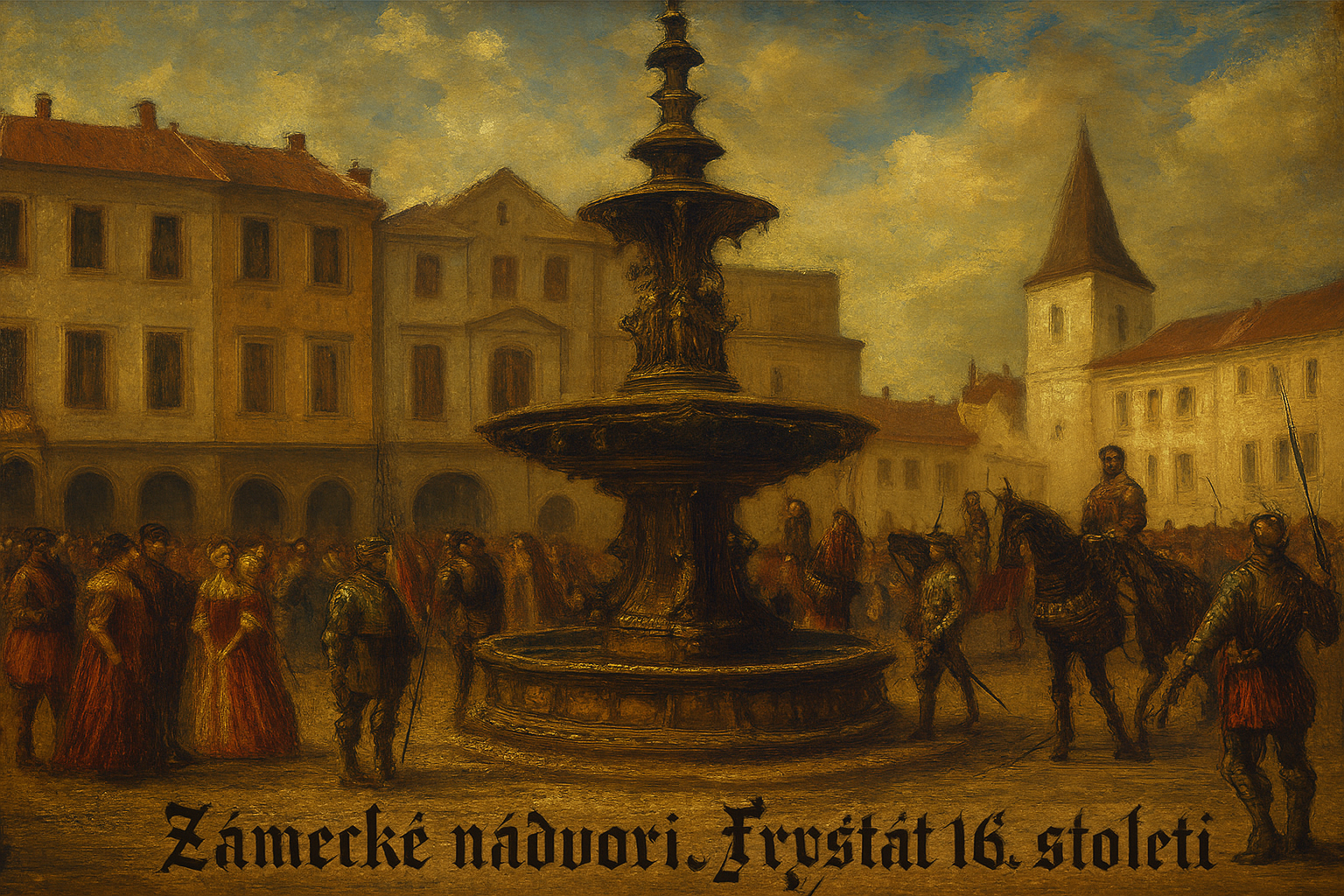
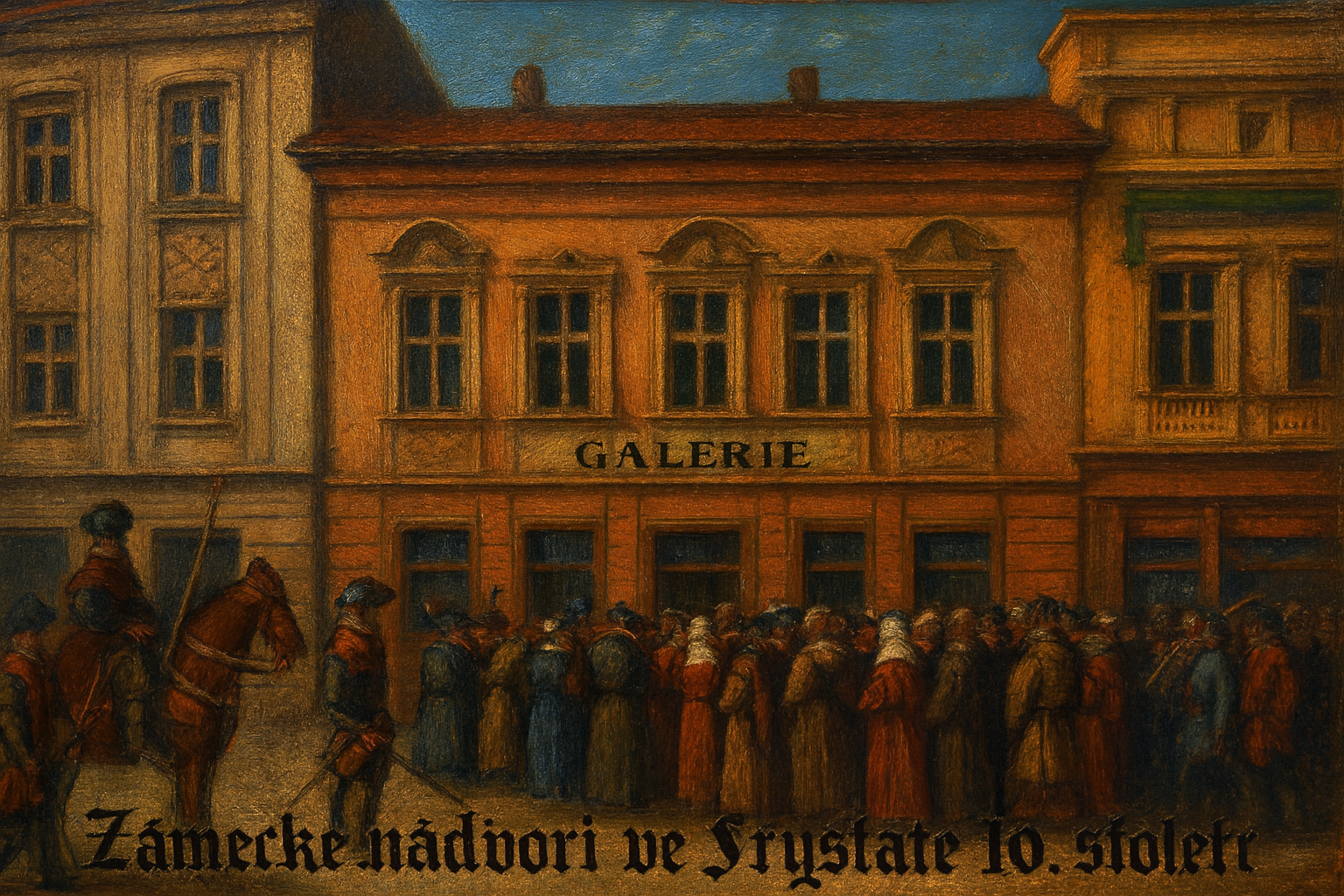
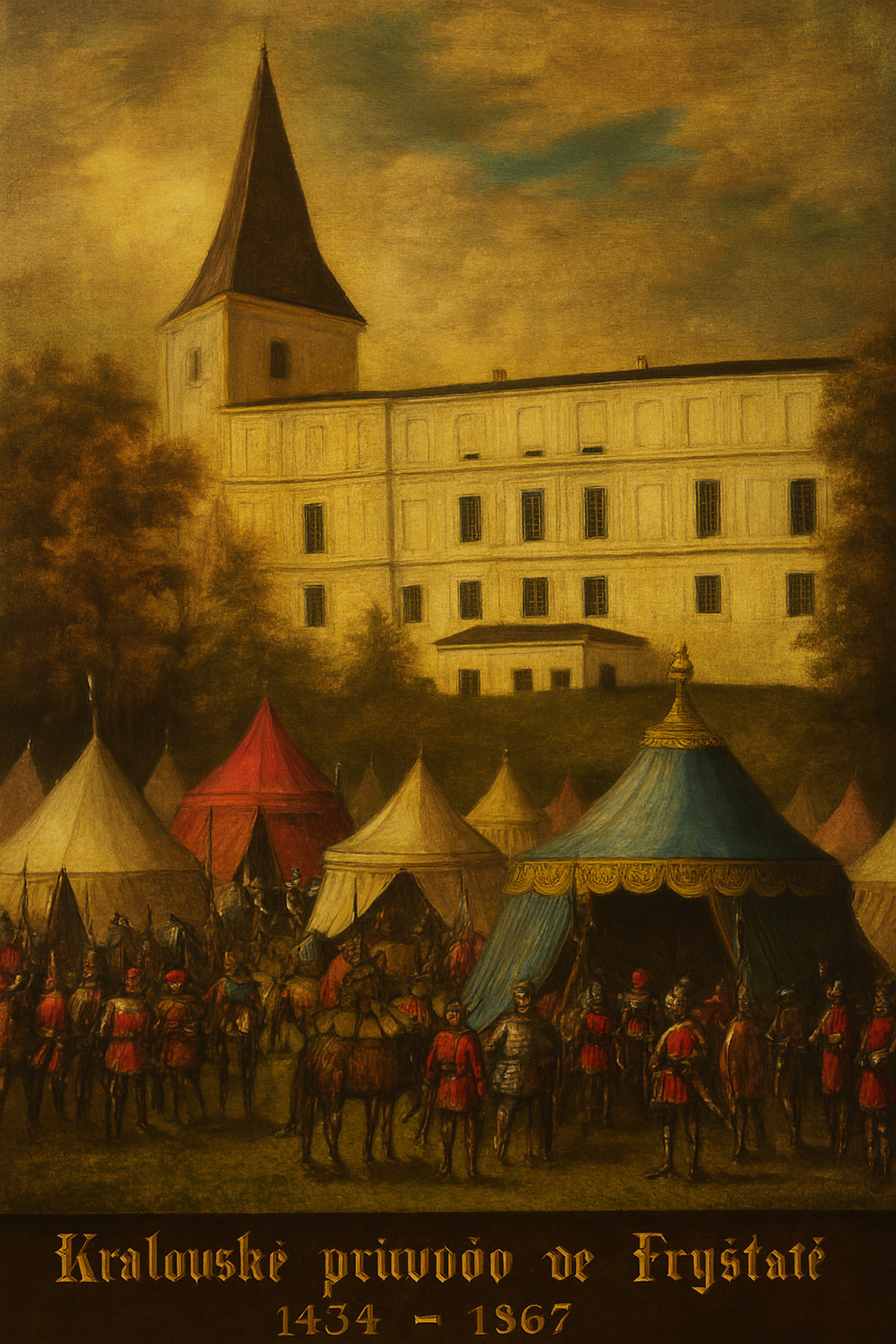
The wedding procession of Queen Elizabeth of Habsburg in Fryštát
Fryštát was a crossroads of the main European trade and royal roads, and its one-day journey from Krakow made it the last and therefore the most important stop of the ceremonial processions heading to this royal city. His Majesty the Polish King Sigismund II. Jagiellonian brought his newlywed wife, Her Majesty Elizabeth of Habsburg, to Fryštát in 1543. She rode from Vienna to Krakow in a gilded carriage, accompanied by her ladies-in-waiting and a white-clad horse-drawn retinue of noblemen and clergy, an army of soldiers and squires, numerous servants and a field kitchen. From Vienna, Her Majesty the Queen rode through Olomouc, where she spent the night and was joined by another procession going to Krakow. In total, there were 1,500 of them. When the main part of this procession arrived at the Fryštát courtyard in front of the castle, everything was already ready for the accommodation of the queen and her entourage. All the upper rooms of the castle were turned into dining rooms and those who could not get in here occupied the surrounding townspeople's houses. Just imagine the great hustle and bustle in the castle corridors, where the retinue of pages carried mountains of food and drink to all the chambers, and what a huge job the cooks and the castle Hofmistress, who supervised everything, did. Throughout the feast at the Fryštát castle, musicians played and the queen was entertained by jugglers. The Fryštát master stabled the most precious horses of the royal procession in the princely stables in the Lottyhaus, which you can see on the southeast front of the courtyard right opposite the castle; he had to leave the other horses standing in the meadow below the castle. There were also many tents where the royal soldiers and servants spent the night. However, an endless number of curious people gathered in Fryštát, wanting to see Her Majesty the Queen, her huge gilded carriage and the magnificent procession. Many merchants also came to sell their goods here, and jugglers, who also wanted to entertain the Queen and her entourage. People were having fun everywhere, dancing and singing. The next morning, Her Majesty the Queen got into her gilded carriage in front of the castle, and the entire procession set off on its last leg of the journey to Krakow.
According to the map, you can get to stop number 6 "RADNICE" by walking to the other side of the courtyard and stopping at the corner of the Town Hall by the tower
6 - TOWN HALL


Silesian Viceroy Casimir II Piast in 1504 changed the Fryštátský tavern into the Town Hall and in 1564 his great-grandson Duke Frederick Casimir celebrated his wedding here
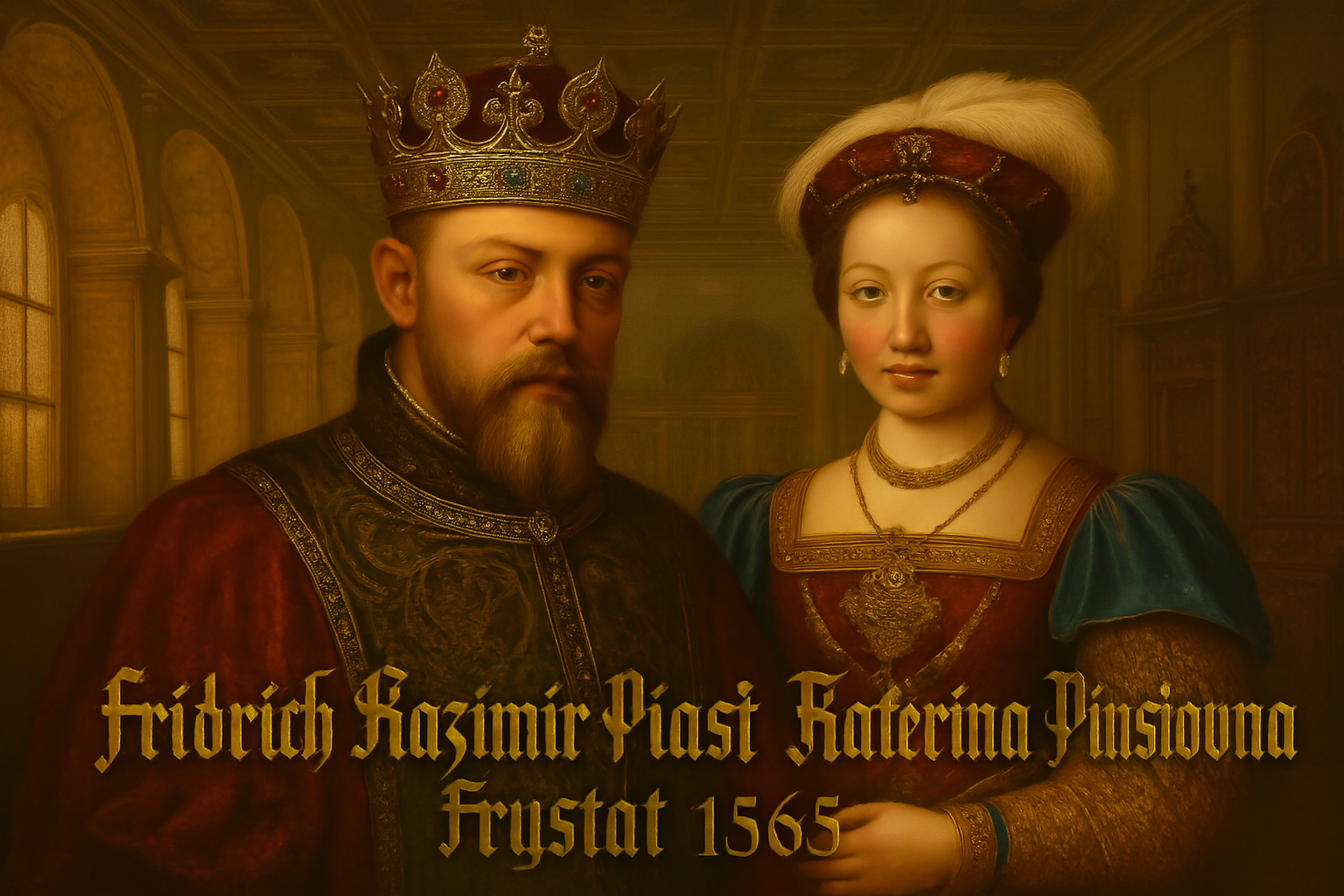
Stand on the corner of the Town Hall by the tower. The place with the oldest settlement of the Fryštát ducal residence is the local Golden Alley, with the postal name Fryštátská, but for many centuries correctly called Radniční. The dominant feature of the Golden Alley is the Town Hall, which was founded in 1504/1505 by the Silesian Viceroy Casimir II. Piastov. Originally, the Town Hall was a tavern from the 14th - 15th centuries. In 1504, Viceroy Casimir II. bought the tavern from the innkeeper Jožek Šlosar and sold it to the city aldermen for half the price to establish the town hall. This noble act of Casimir is recorded in the purchase deed, which is still preserved in the Museum of the Silesian Provincial Archives in Karviná. After the reconstruction was completed in 1505, the building was ceremonially opened and serves as the Town Hall - the seat of the Karviná mayor to this day. Originally, the Town Hall had its own tower, which seemed to peek out from the courtyard. In 1563/64, the Silesian Duke Frederick Casimir Piastov lowered it to its current state in order to make the neighboring, newly built Piast Tower stand out more. This new tower is still decorated with the coat of arms of the Silesian ducal family of the Piasts, which was the highest Czech aristocracy and the only Czech ruling dynasty. On the Piast Tower there is also the rest of the medieval pillory chain, to which sinners were tied for public shame. Thieves or unfaithful women were tied here for "lynching", and passers-by spat on them and threw vegetables and eggs at them. The Town Hall with the tower is only occasionally open to tourists. The windows below the ground to the left of the entrance are the windows of the original Šlosar tavern from the 14th/15th century. After the establishment of the town hall, it was a torture chamber and today the mayor of Karviná meets here with the city council. In 1605, on the centennial anniversary of the opening of the town hall, a crowned relief of the founder of the town hall, Silesian viceroy Casimir II. with the Fryštát coat of arms was unveiled above the entrance. After inspecting the coat of arms and the tower, walk back along the Golden Lane to the corner of the extended part of the town hall and then to the left to the courtyard of its inn.
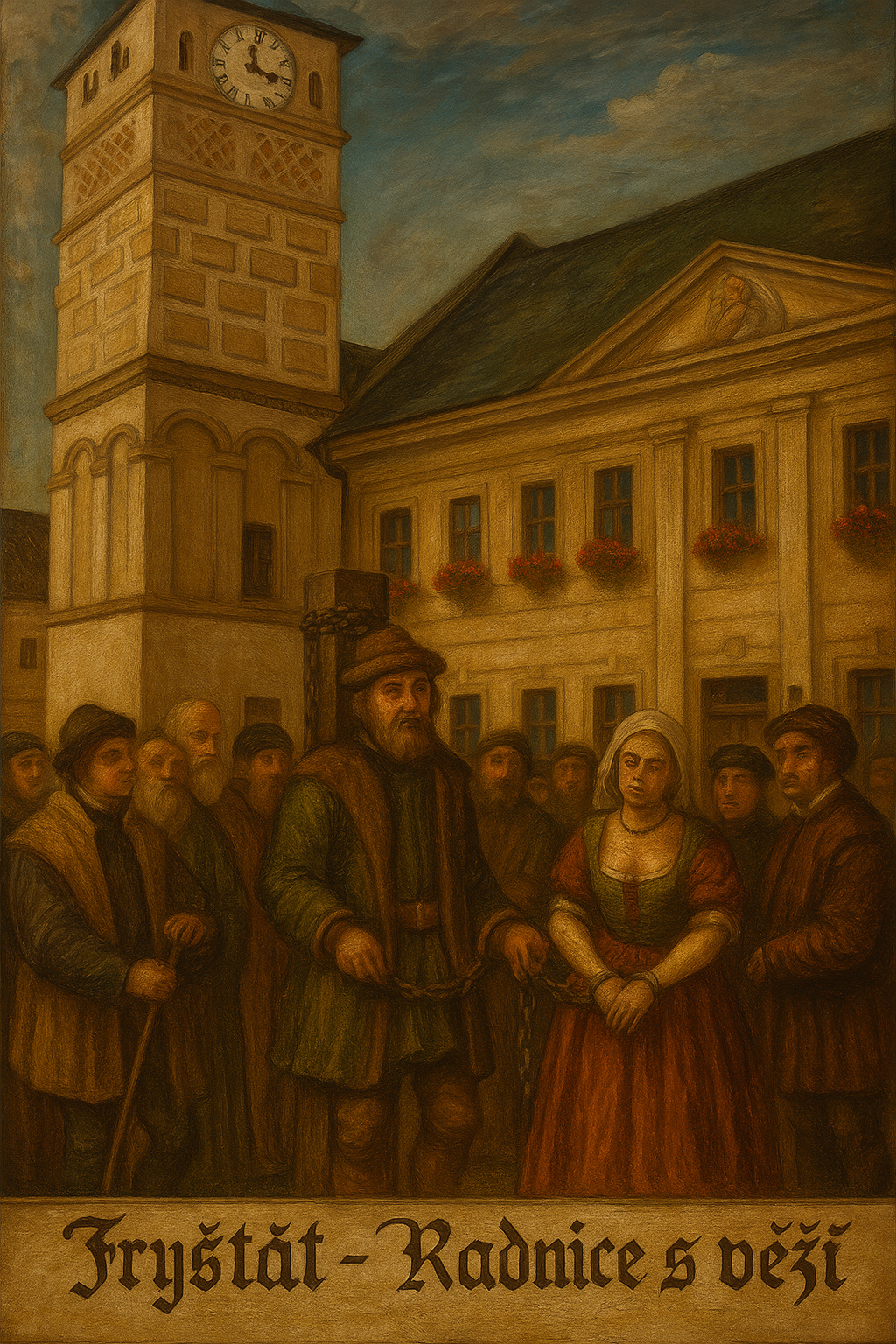
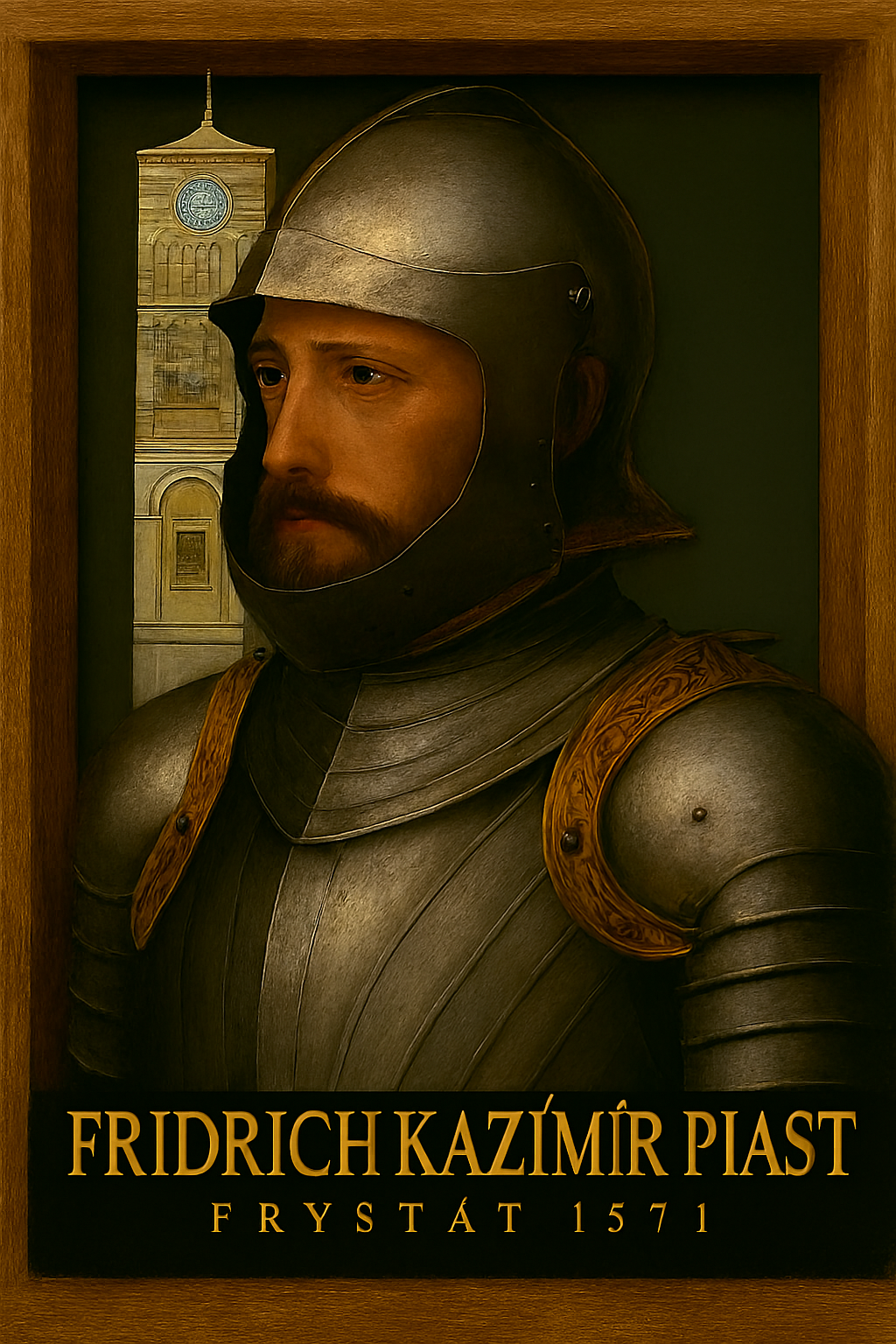
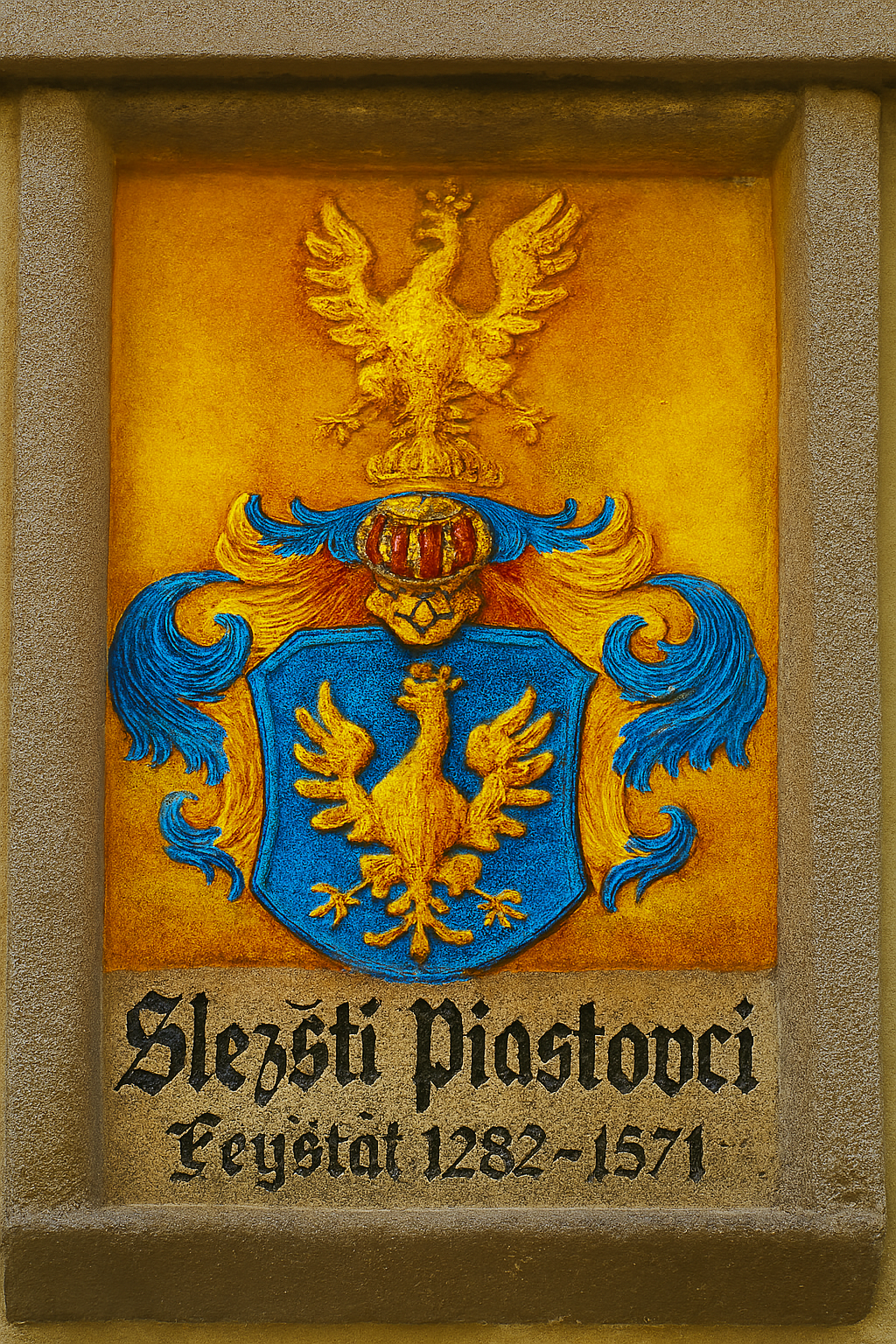
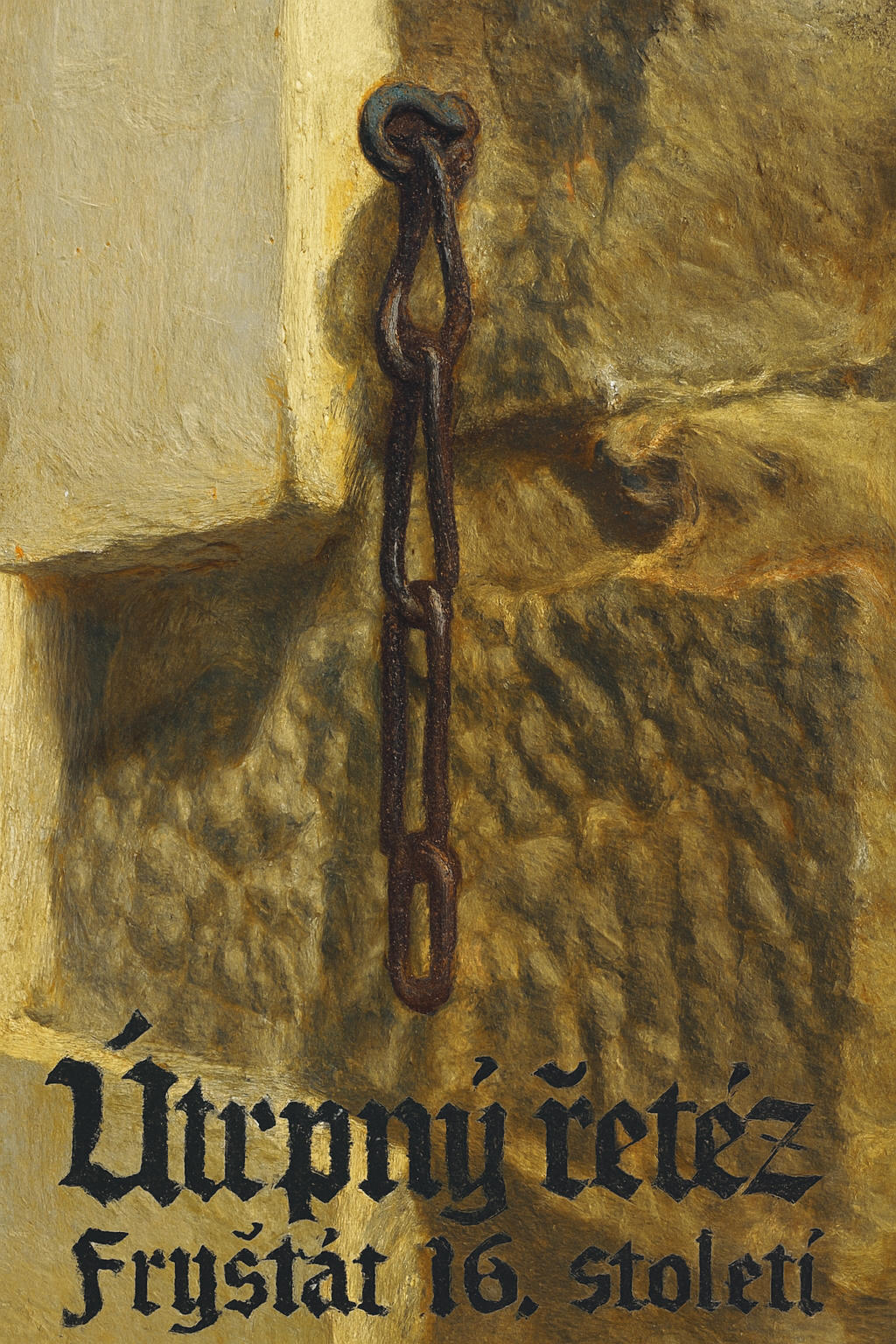
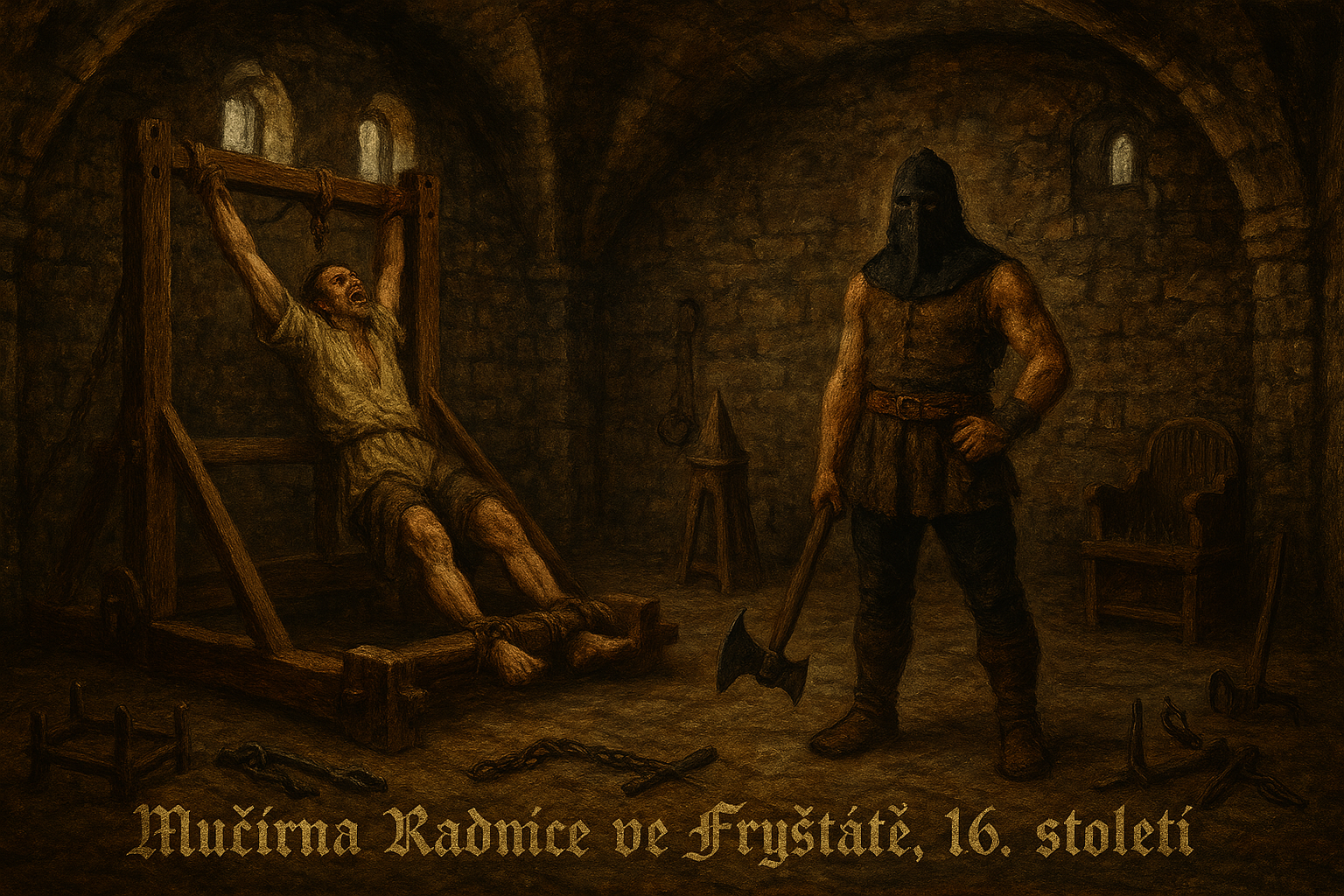
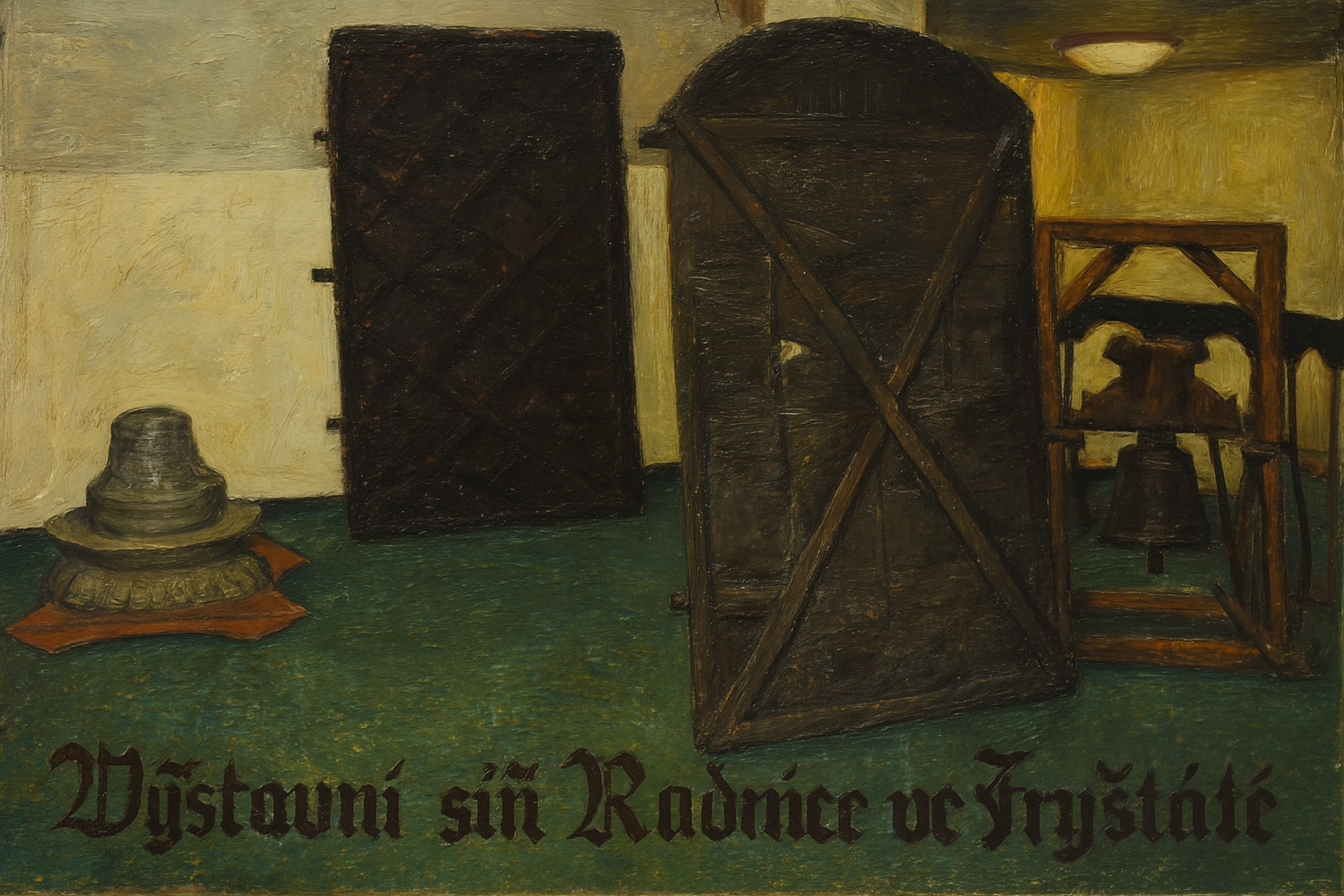
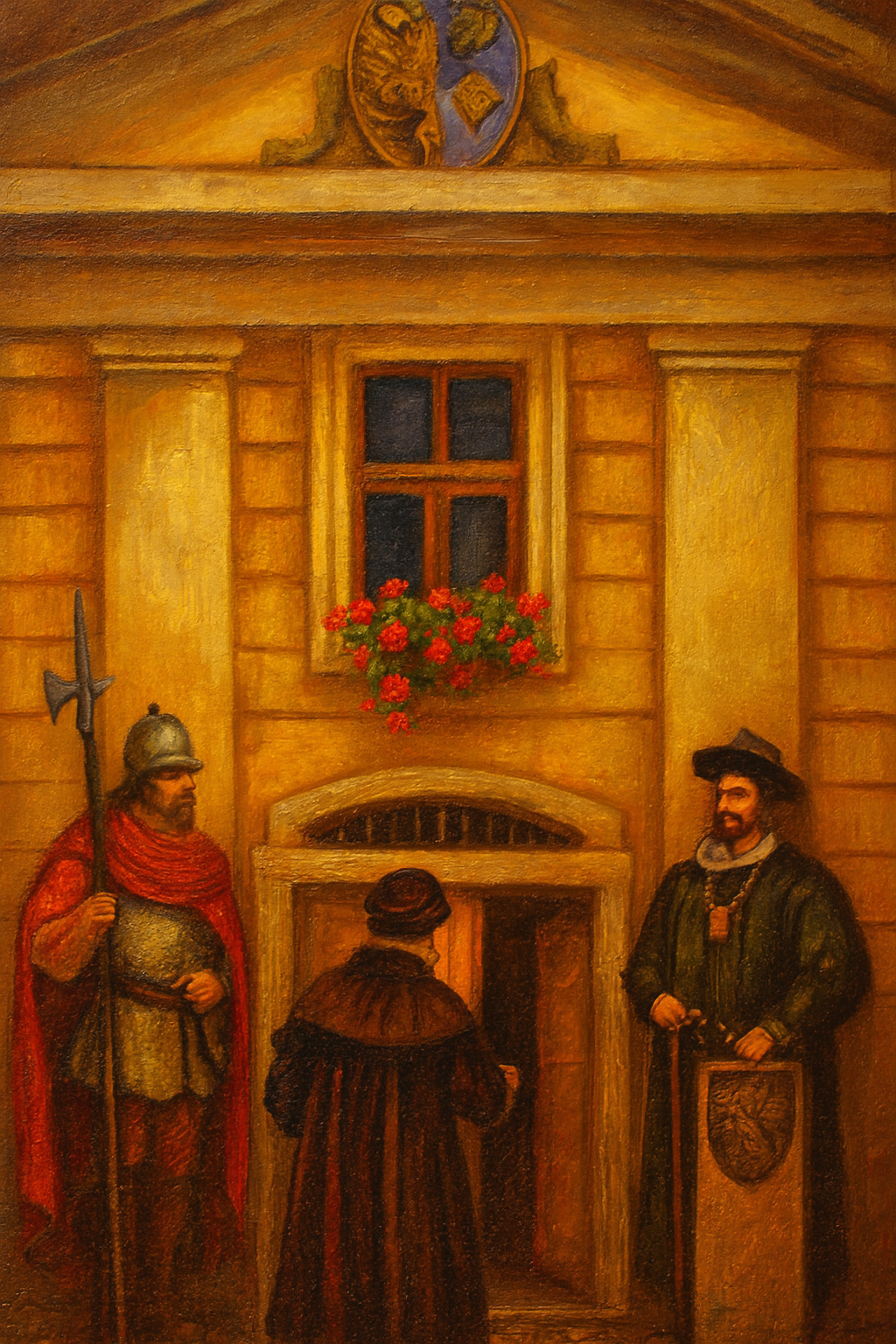
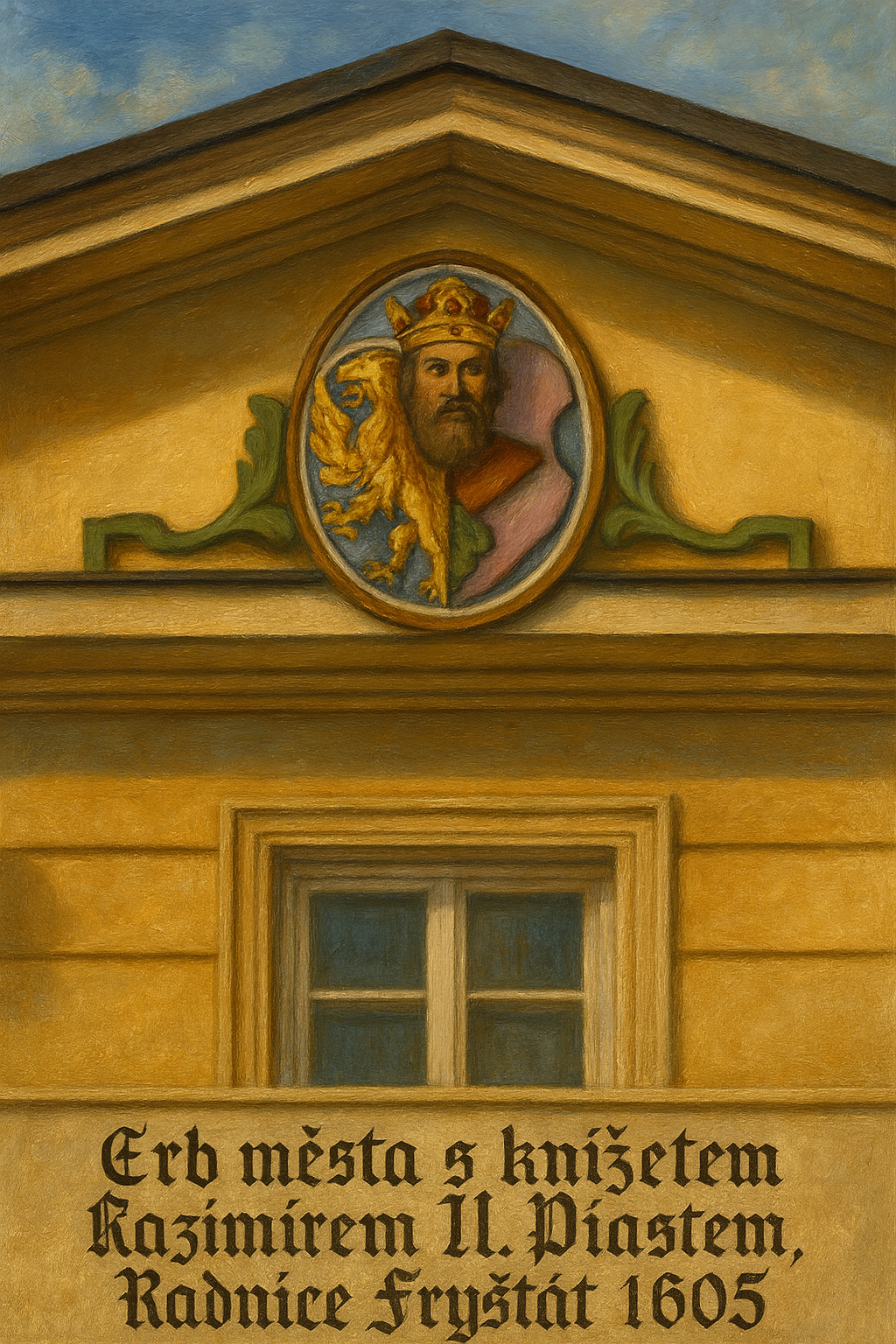

In 1574, the French King Henry III stayed at the Fryštát Town Hall Inn
The courtyard is part of the extended part of the Town Hall, which was the seat of the princely Castle Brewery founded by Casimir's father, Silesian Duke Boleslav II. Piast, since 1447. From the courtyard, you can see how the original town hall tower, which was adjacent to the rear wing of the Town Hall in the years 1505 - 1564, has been lowered. In the basement of the extended part of the Town Hall there is a well from which water was pumped for brewing beer and distributed through underground corridors to the houses with the right to brew beer, of which there were 80 to 90 in Fryštát. After 1504, the seat of the princely brewery was moved to Brewery Alley and an inn, or medieval hotel, was built in the building of the extended part of the Town Hall, where knights and other visitors to Fryštát stayed. There is still a restaurant on the ground floor, continuing the tradition of this inn, and the floor where the hotel rooms were located houses the Town Hall offices. Visit this medieval inn for lunch and while you feast, learn about the story of the French king Henry III of Valois, who also feasted and stayed here.
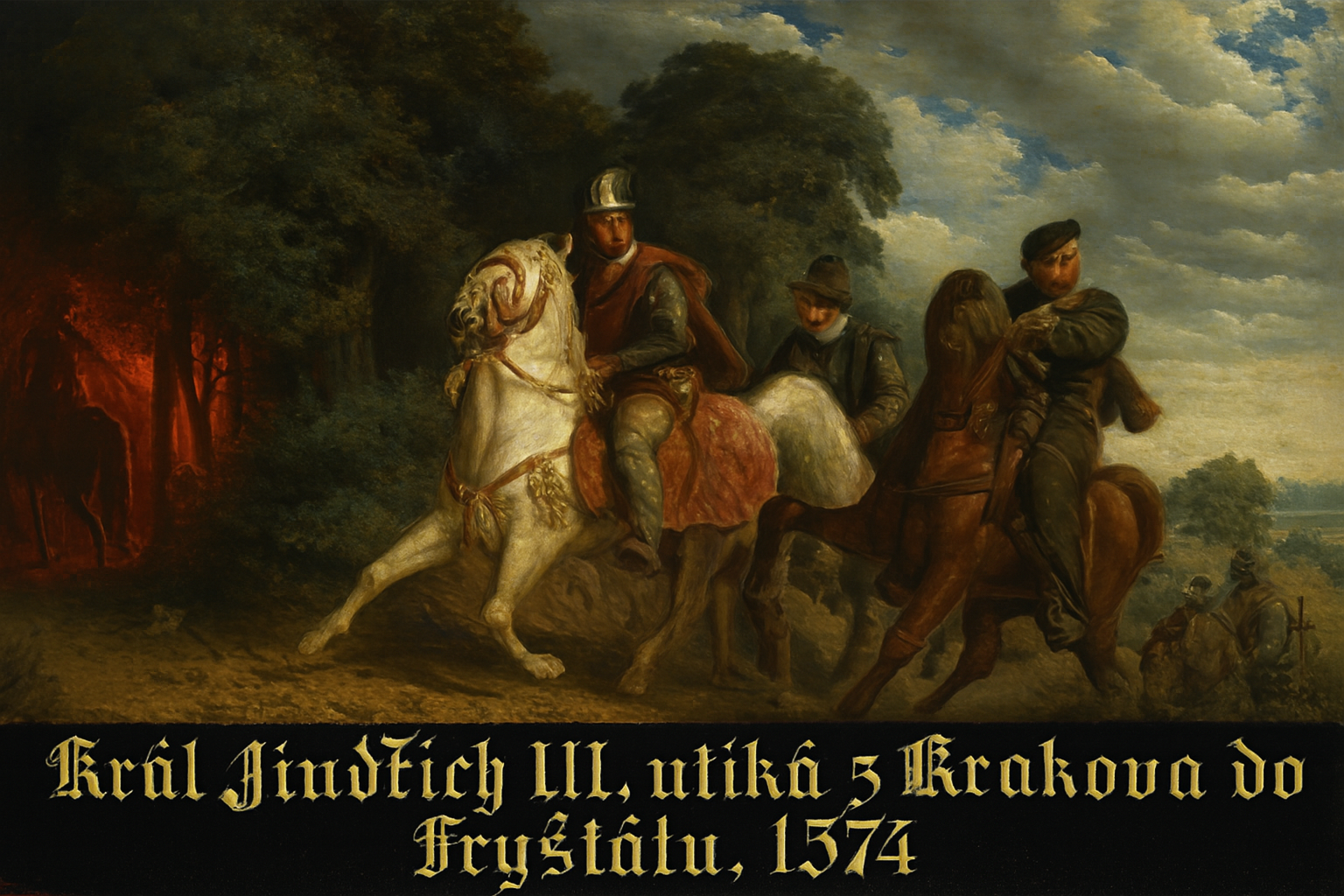
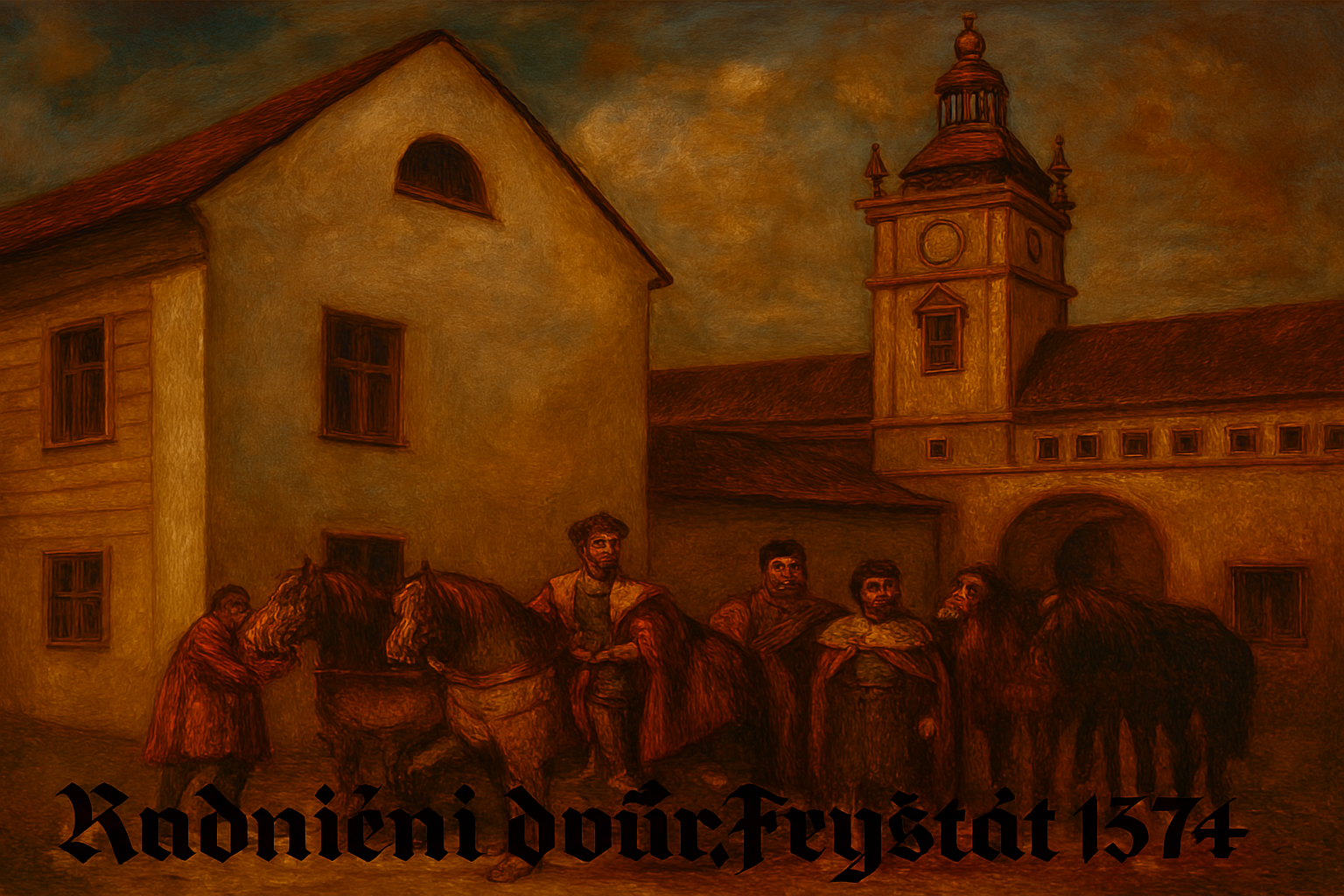
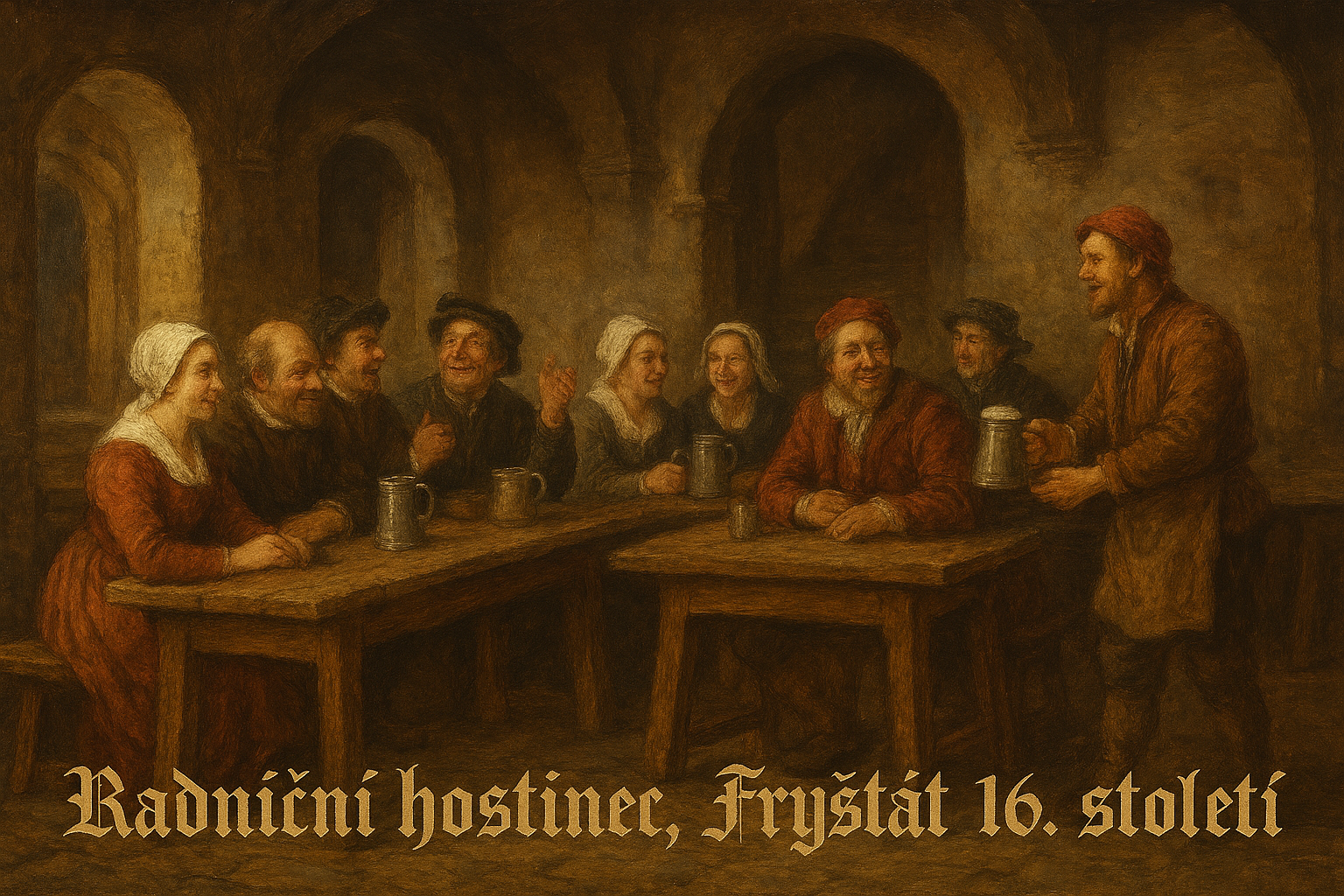
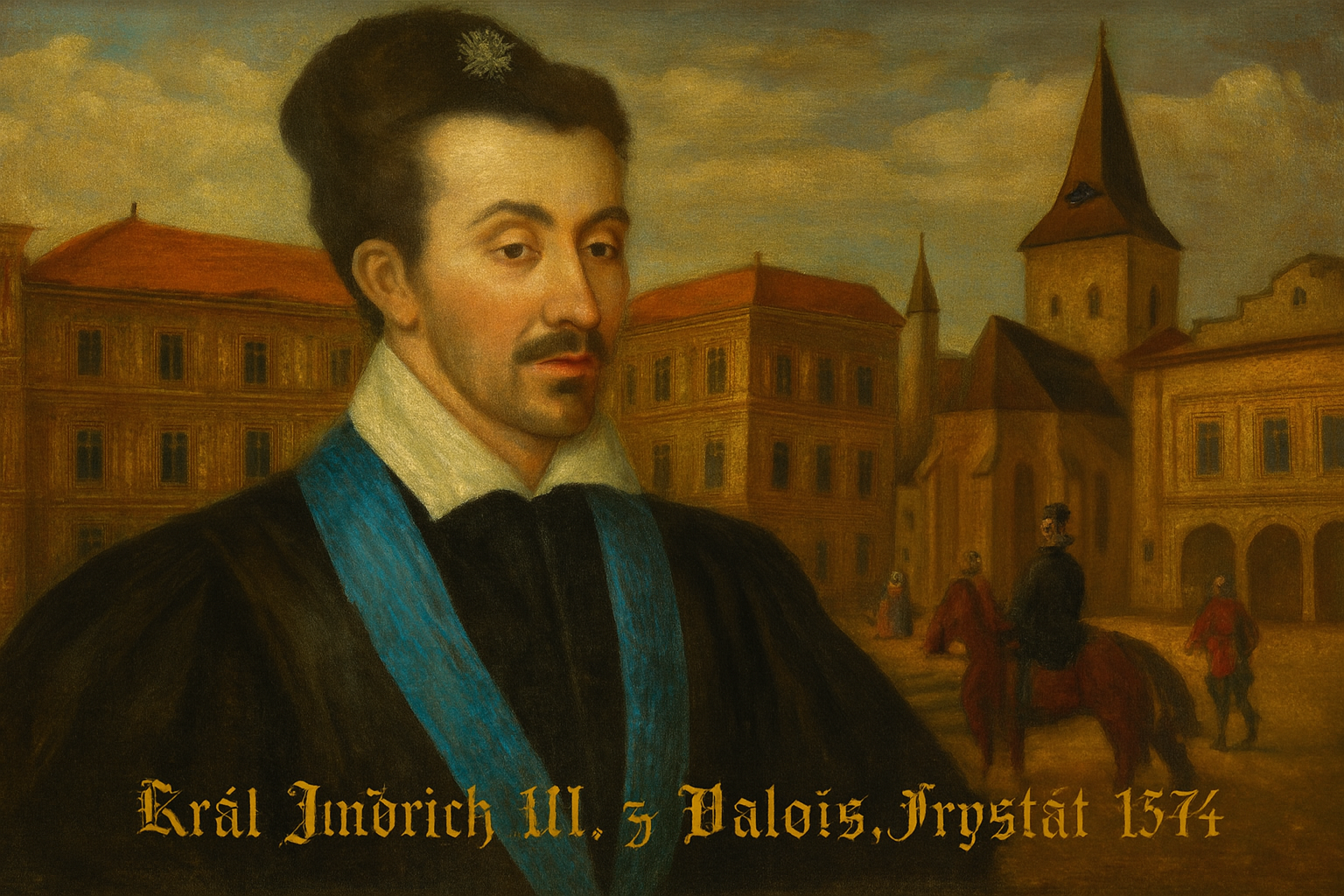
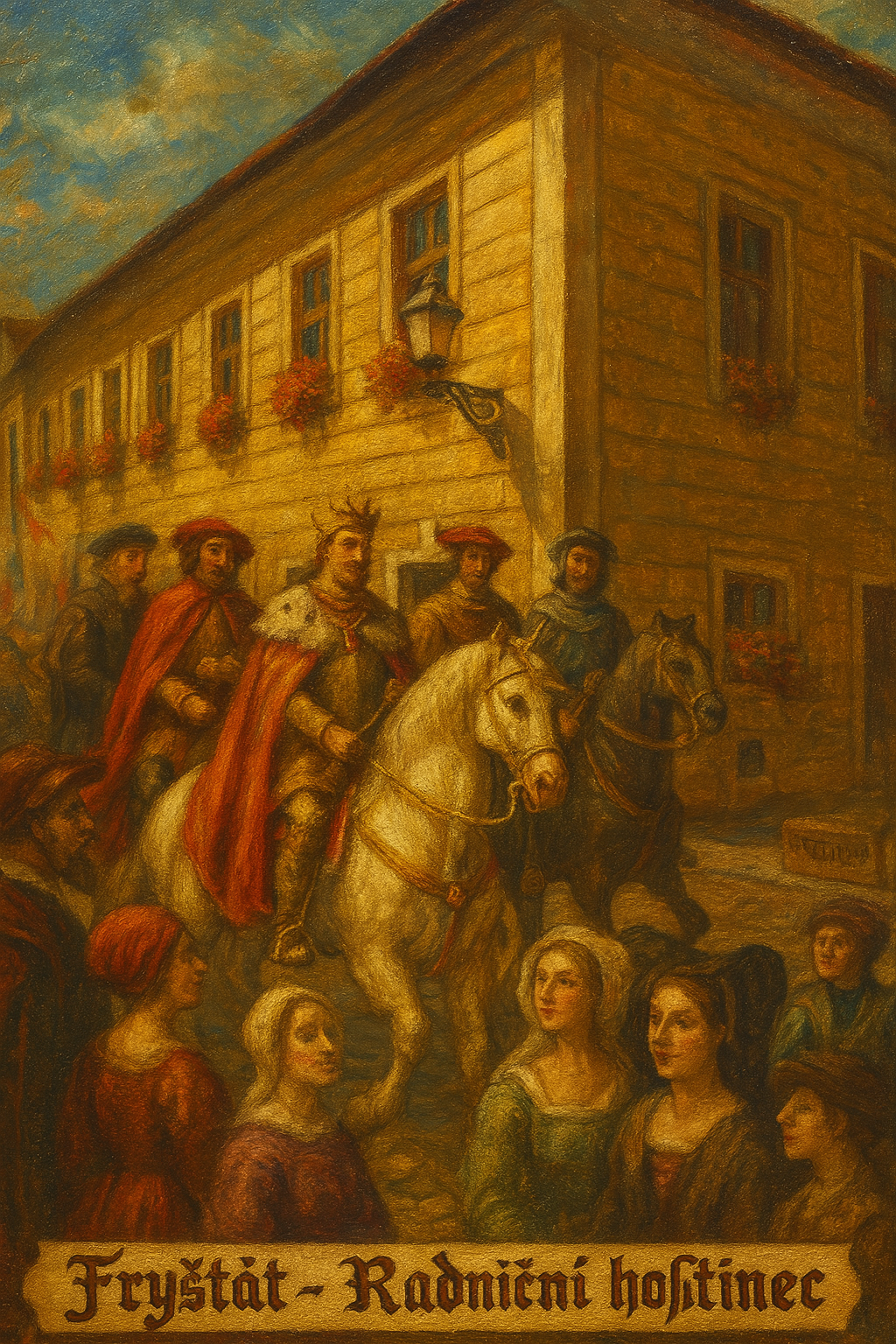
King Henry III of Valois spends the night in the Fryštát Town Hall Inn
The Town Hall Inn is associated with the infamous act of the French King Henry III of Valois. In June 1574, he and his entourage stayed at the Town Hall Inn while fleeing from Krakow to Paris. In 1573, Henry III was elected King of Poland, but he was not popular in Poland. Therefore, when his brother, King Charles IX, died in France in 1574, Henry became the successor king of France. In Krakow, he took advantage of the inattention of the courtiers and guards and escaped from the royal castle with his 10-member entourage during a large feast that was taking place. However, he did not forget to take the Polish royal treasury with him. This was soon discovered and Polish soldiers began to pursue the king. However, King Henry had planned his escape thoroughly in advance, including the fact that when he reached Fryštát, where he was already safe from Polish soldiers, he would stay at the Town Hall Inn of Johann Facias. In the Town Hall Inn, King Henry drank Fryštát beer and had fun with his entourage until morning. In the morning, numerous carriages were waiting for him, prepared for the king by Pompone de Belliévre, a member of the king's entourage.
King Henry III's stay here would certainly have been forgotten if it had not been for a French merchant who was passing through Fryštát in 1597 and noticed a sign that stood there. He noted it in his diary, which is still carefully preserved in France today. The sign read: "Henry, by the grace of God King of France and Poland, Duke of Prussia, Russia, Mazovia and Samogitia, Grand Duke of Lithuania and Duke of Anjou, in the year of our Lord 1574, on June 19 at 5 p.m., was in Fryštát with Johann Facia." The merchant also noted that he had never seen such a beautifully maintained and clean, indeed very clean, city, and here he describes our organized system of fire protection, which was introduced in 1514 by His Grace, the Silesian Viceroy Casimir II. In every house, without exception, a large container filled to the brim with water and a bucket hung near it stood ready. Since the merchant noticed and wrote this down, it is clear that this was not at all common in 16th-century Europe.
According to the map, you can get to stop number 7 "CHURCH" by walking through the shopping center passage, past the City Hall to the church of St. Mark, where you can sit on a bench under its tower
7 - CHURCH


Casimir's great-grandson, Duke of Silesia Frederick Casimir, built the small Fryštát church after 1560, which became a great symbol of Silesia at the turn of the 16th and 17th centuries
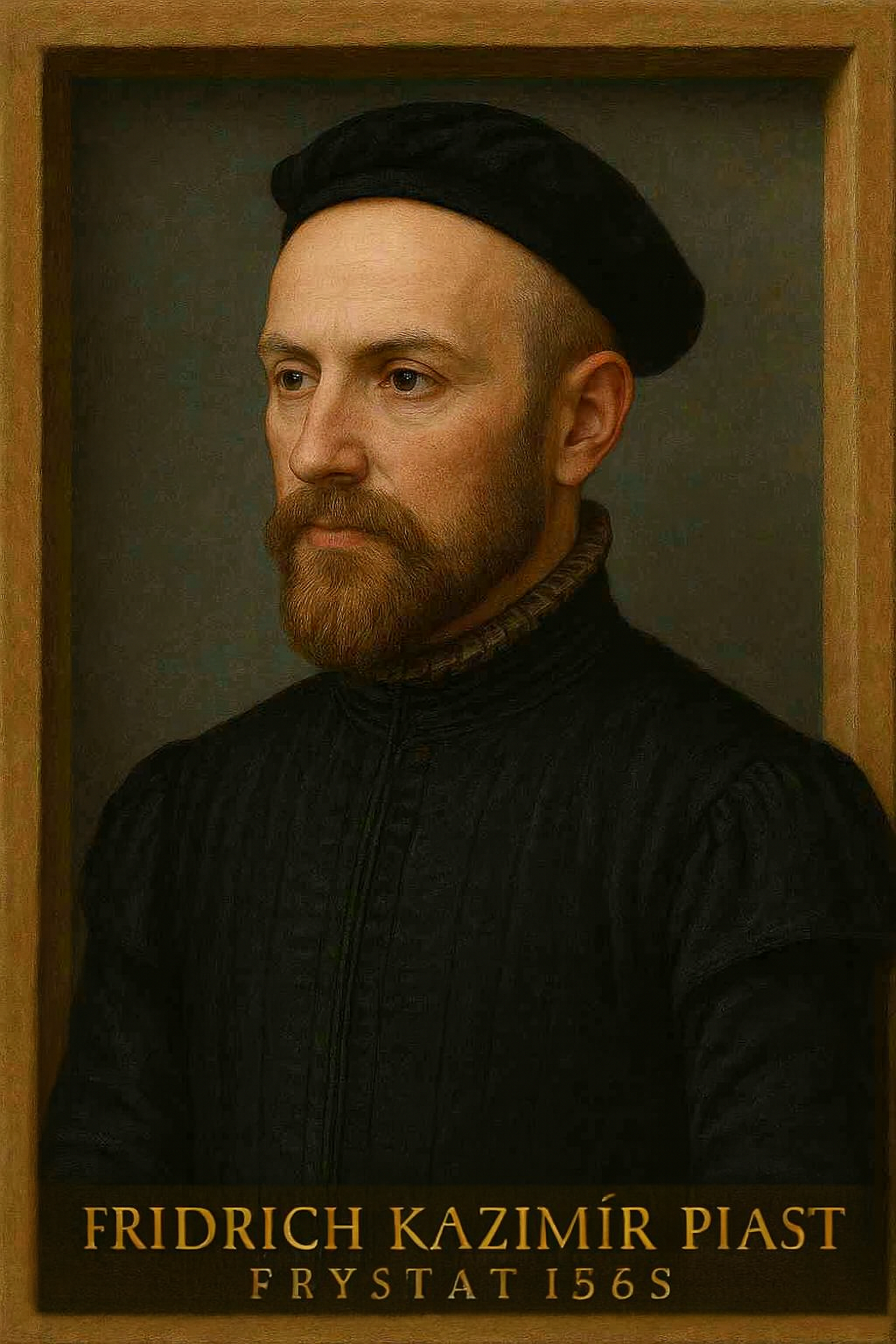
Sit on a bench in the park by the church of St. Mark, but be quiet here, as if you were at school, you will soon find out why. The church of St. Mark in Fryštát was built by His Grace, the Silesian Duke Frederick Casimir Piast, sometime after 1560, at the time of the beginning of the plague epidemic. Several thousand inhabitants died of the White Plague here and were buried here. The ducal family also succumbed to this plague epidemic in the years 1569 - 1571. At that time, the Lutheran priest Jakub Preiss, who was also a confidant of Duke Frederick Casimir, preached in the church. They became friends in the Silesian town of Břeh, where they met. When Duke Frederick Casimir took power in 1560, he summoned Jakub Preiss to his place in Fryštát, where they were close. After 1637, the church was the center of the religious counter-reformation and the 30 Years' War. Initially, the church was located outside the walls of Fryštát, but in 1683, the church of St. Mark was also surrounded by walls by Count Gaschin, due to the threat of an attack by the troops of the Ottoman Empire. However, at the end of the 19th century, the Fryštát walls were demolished, so that only a rampart remains here, visible from the church's northern and western sides. The church was originally wooden, but because it had fallen into disrepair, it was torn down by Count Taaf at the end of the 18th century and the church in its present form was built on its foundations.
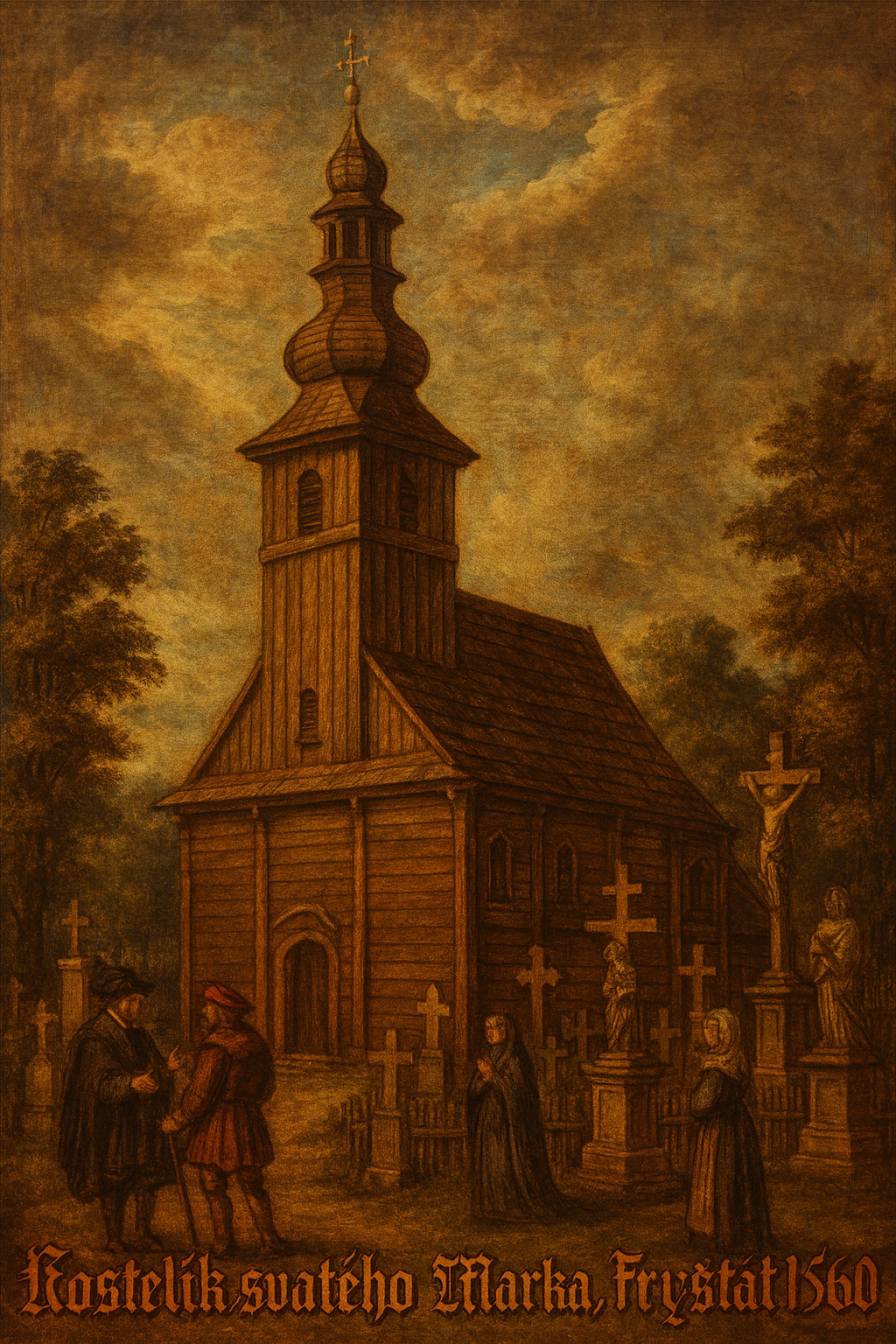
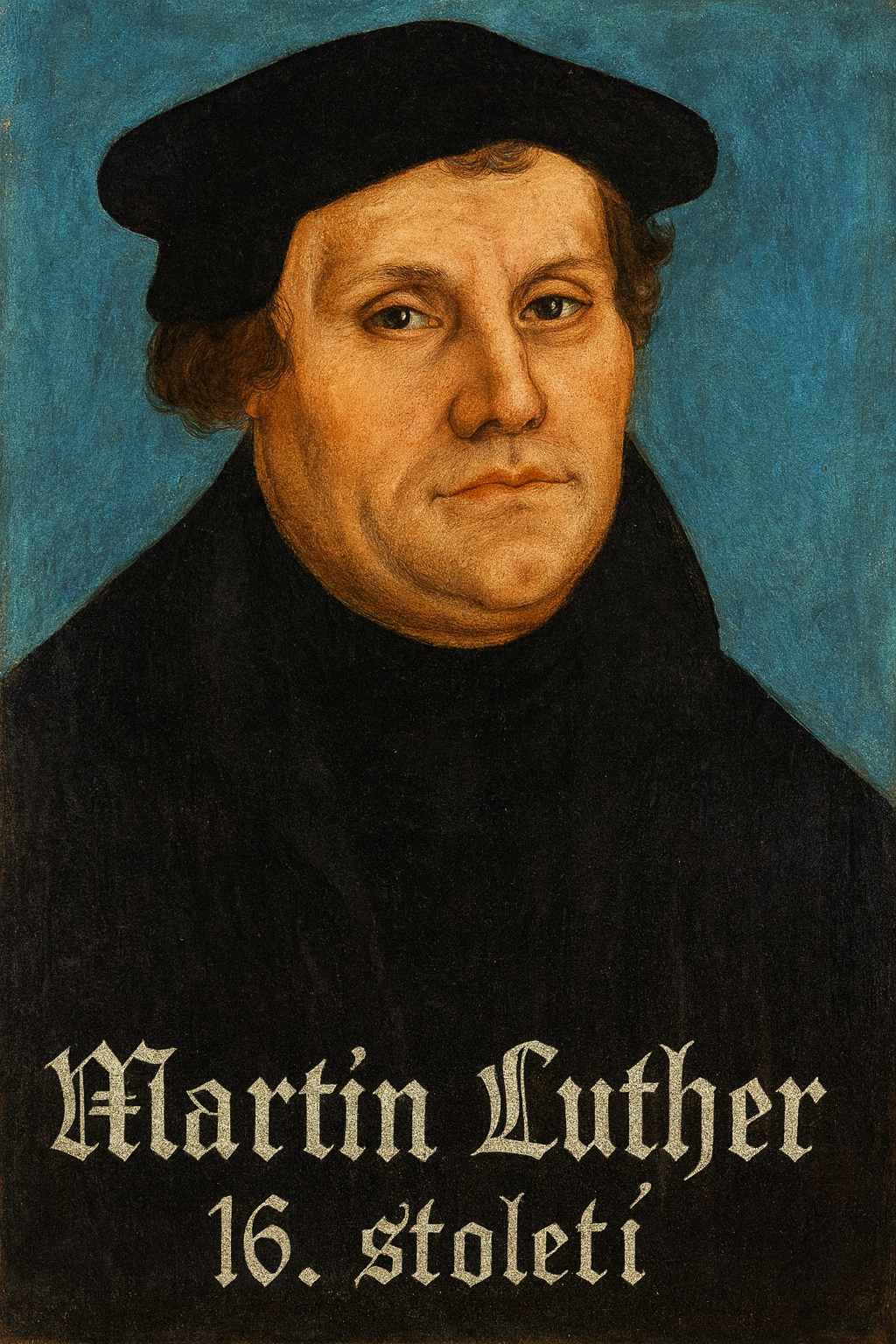
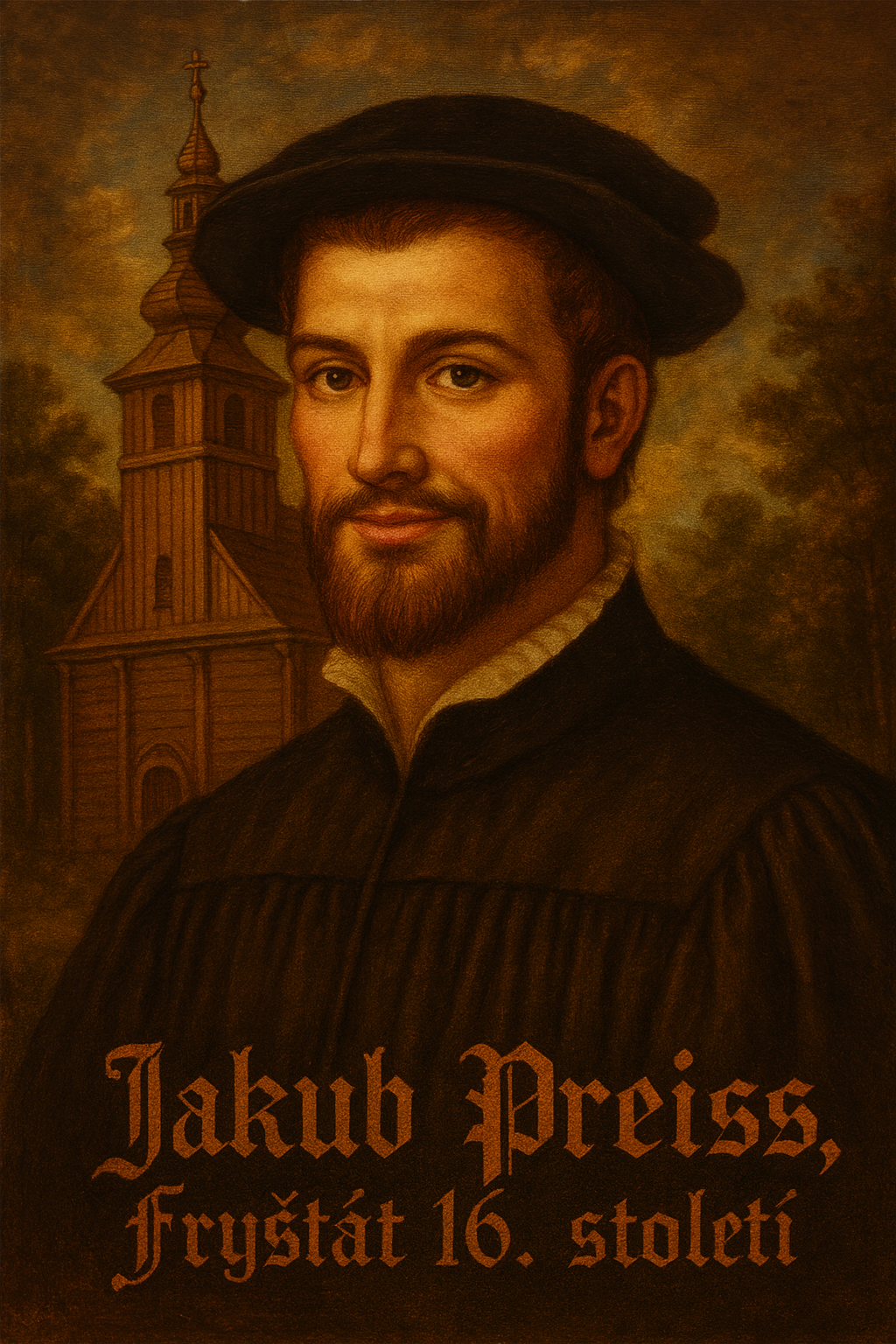
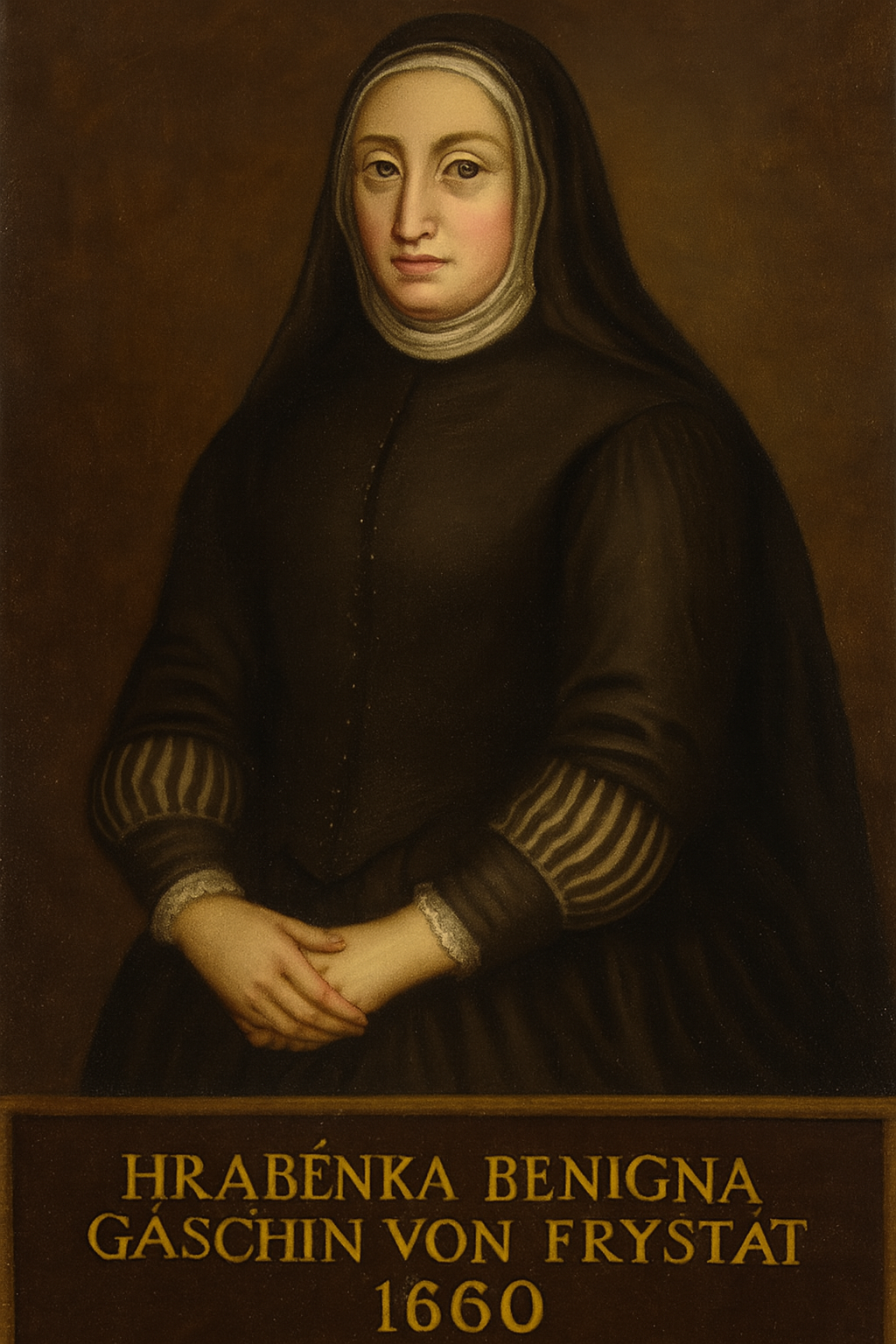
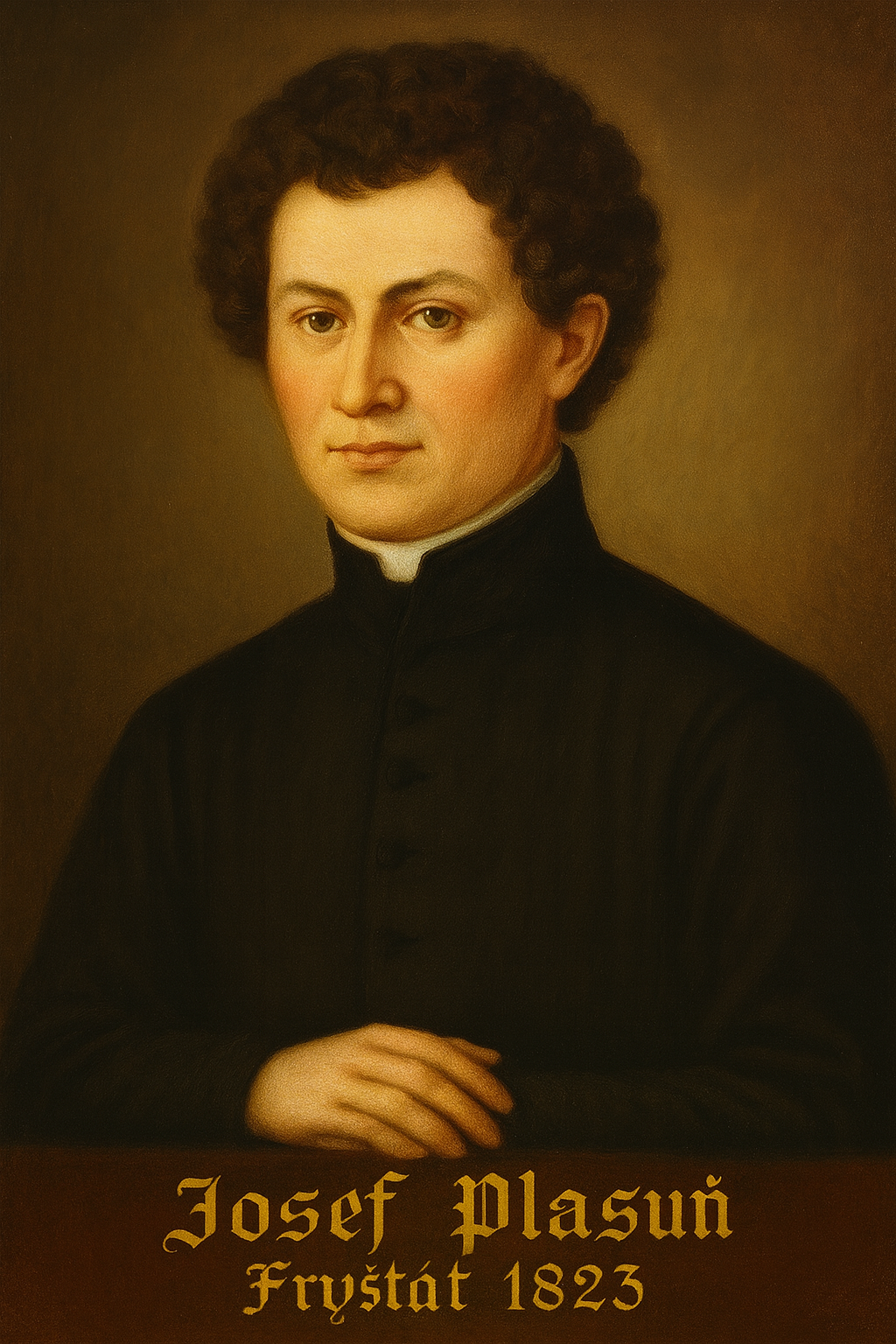
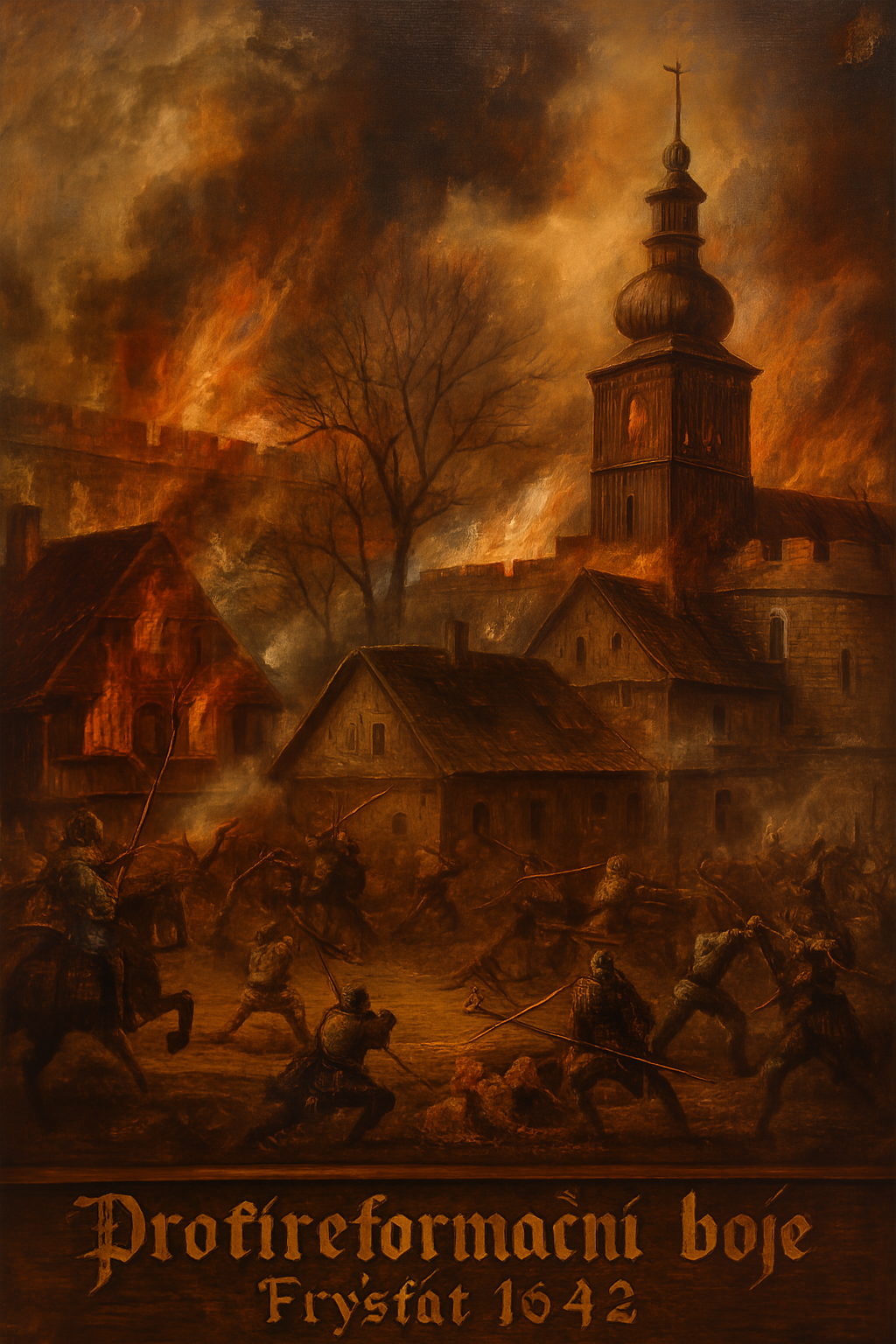
30 Years' War in Fryštát
This inconspicuous plague church is not only a dominant feature of the square on which it is located, but is also a great Silesian symbol of the religious reformation, of which Fryštát was the main Silesian center. The religious reformation began to develop here during the reign of the Silesian viceroy Casimir II Piastov, as a reaction to the preaching of the German Bible scholar Martin Luther, and was also supported by Casimir's descendants. In the second half of the 16th century, there was no longer a Catholic church in Fryštát, all the shrines - the Castle Church, the Church of St. Mark and the churches of St. Andrew and St. Nicholas (the latter two no longer exist) - were declared Lutheran. According to historian Bayer, in the 16th and 17th centuries there was a saying that every Silesian Lutheran must visit Fryštát, the Silesian Mecca of Protestantism, at least once in his life. After 1637, a religious Counter-Reformation broke out, led by the Catholic League, which culminated in the 30 Years' War. The fight for religious tolerance in Fryštát was very strong and long. The main battle took place around the church of St. Mark. It is said that 2,000 soldiers were killed there, who, according to historian Bayer, are buried in the University Park opposite. In the end, Fryštát was almost completely razed to the ground and its wealthy inhabitants were expelled, including the family of the knight Wenceslas, who accompanies you through Fryštát. The glory of the Silesian residential town of Fryštát was over. Anyone who remained here had to be Catholic only. No one else was even allowed to hold a public office. Gradually, the churches of Fryštát were declared Catholic, and the last of them to resist the Counter-Reformation the longest was this inconspicuous church of St. Mark.
And why are you supposed to be quiet here and not stamp your feet? Well, because all around you, under your feet, there are many, many people from my time buried. They don't want to be disturbed when you walk on them.
According to the map, you can get to stop number 8 "IN THE PRE-CASTLE" if you go back past the shopping center and then turn left along Hrnčířská street until you reach the fountain, where you stop
8 - IN THE PRE-CASTLE


Casimir's great-great-grandfather, the Silesian Duke Casimir I Piast, founded the Pre-Castle in the 14th century, which became a popular place for the knights of the Silesian princes in the 15th and 16th centuries
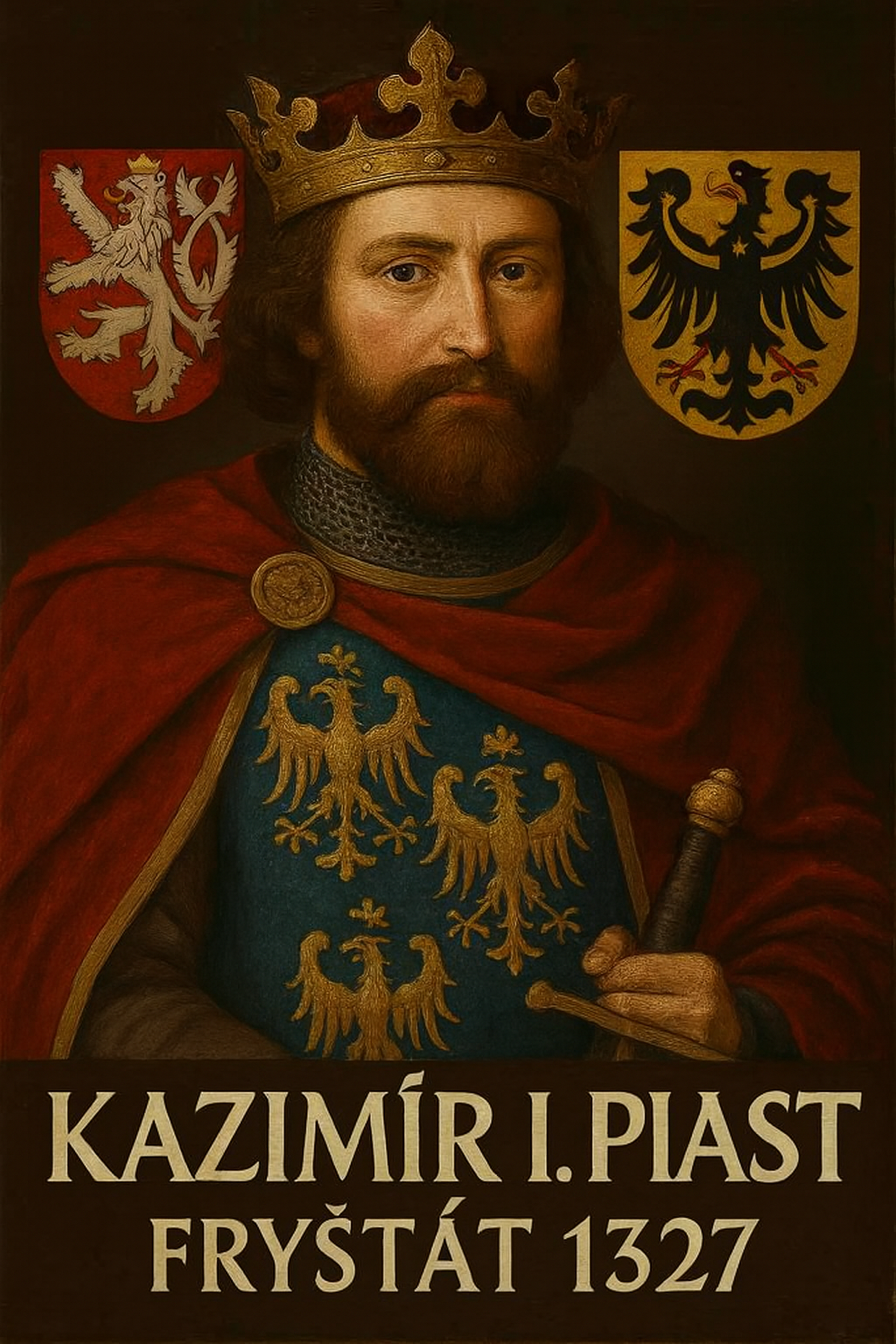
Stand by the fountain or sit by it. The Precinct, or Upper Precinct, known as the Upper Square in the 19th century during the Larisch-Mönnich period, was the most important gate to the Silesian castle town of Fryštát and a popular meeting place for the Silesian knights. It was dominated by a tall medieval tower called the Upper, or also Cieszyn Gate. The Pre-Castle was founded in the first half of the 14th century by the Silesian Duke Casimir I Piast for wealthy burghers who produced and sold linen here. The amount of linen produced in Fryštát was enormous, which is why there were several large warehouses in this suburb, from which merchants distributed linen throughout Europe. Merchants stayed here in the Precinct, where the inn with a dance hall still stands today. Although this inn dates back to the mid-19th century, it continues its predecessor, whose history dates back to the early 14th century. At that time, these merchants stayed here and parked their carriages and stabled their horses in the inn's yard. The Pre-Castle grounds were a crossroads of the Copper, Salt and Amber Trails, and the royal route connecting the royal cities of Central Europe also ran through it. In addition to merchants, ducal, royal and other ceremonial processions also passed through Fryštát. These processions were official and announced by the Silesian Duke, which is why a retinue of messengers led by the ducal envoy was already waiting for them here at the Pre-Castle grounds. Royal processions, in turn, were led by the closest relative of the person whose procession was or by his highest-ranking aristocrat. When the two envoys met here at Pre-Castle, a polite welcome took place and then the royal procession followed the ducal retinue to the castle, where they arrived along the Castle Alley. In the Middle Ages, Pre-Castle was therefore a very busy place. It is therefore not surprising that the Fryštát nobles forced the Silesian Duke Přemysl I Piast to ban horse-drawn carriages from passing through the square. Therefore, around 1360, the Silesian Duke had a road bypass built around the northern walls of Fryštát (today's Karola Sliwka Street). Soon, houses with blacksmiths began to be built along this new bypass, which then provided their services to passing merchants. The poor of Fryštát also stood along the bypass to beg passing merchants for alms. Apart from the tower, which was demolished in the 19th century during the residence of the Larisch-Mönnich family, the dominant feature of the Pre-Castle was the no longer existing magnificent chapel of St. Nicholas (demolished 1640-42) and the no longer existing Miserov castle of the knightly family von Pelko (demolished in the second half of the 20th century).
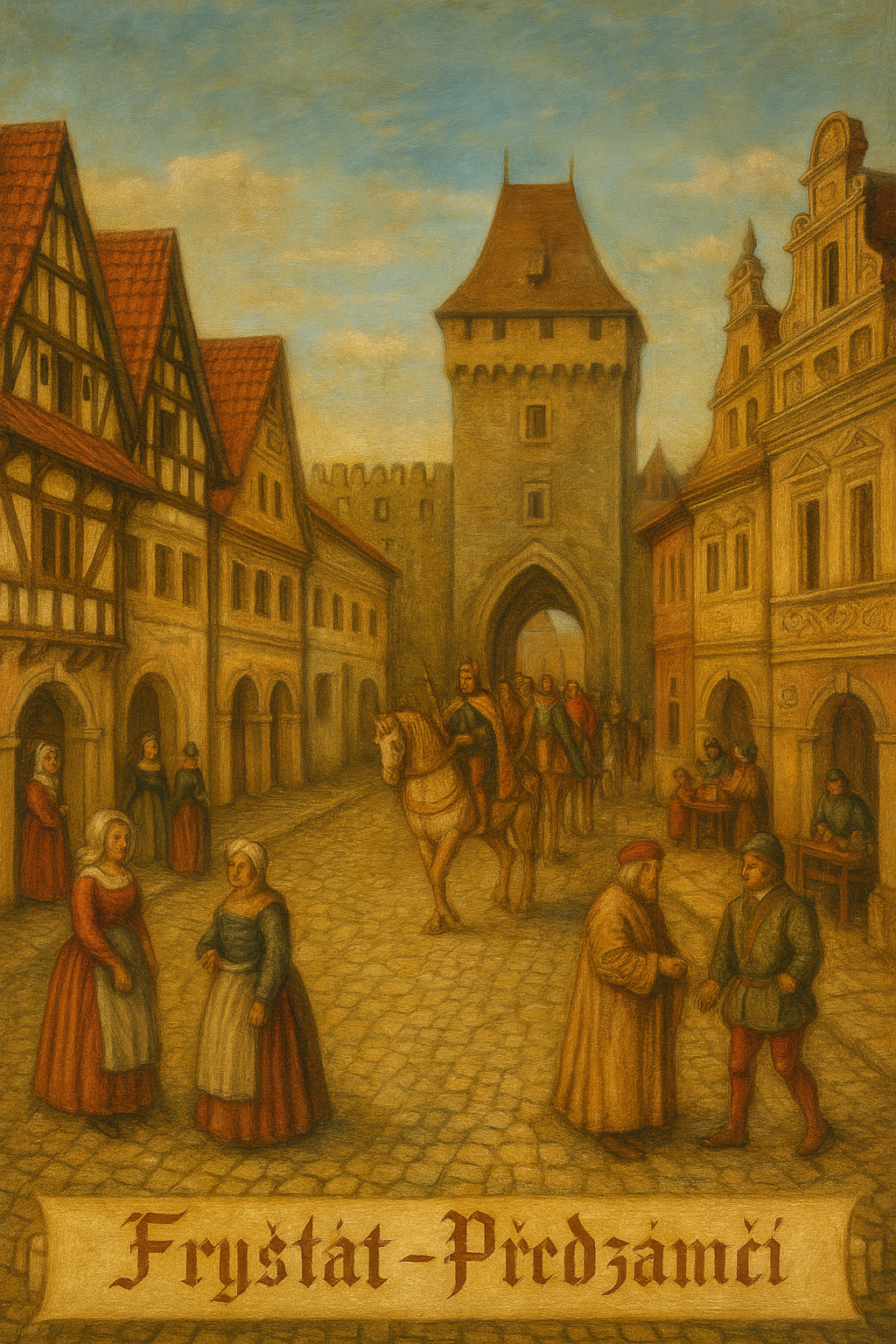
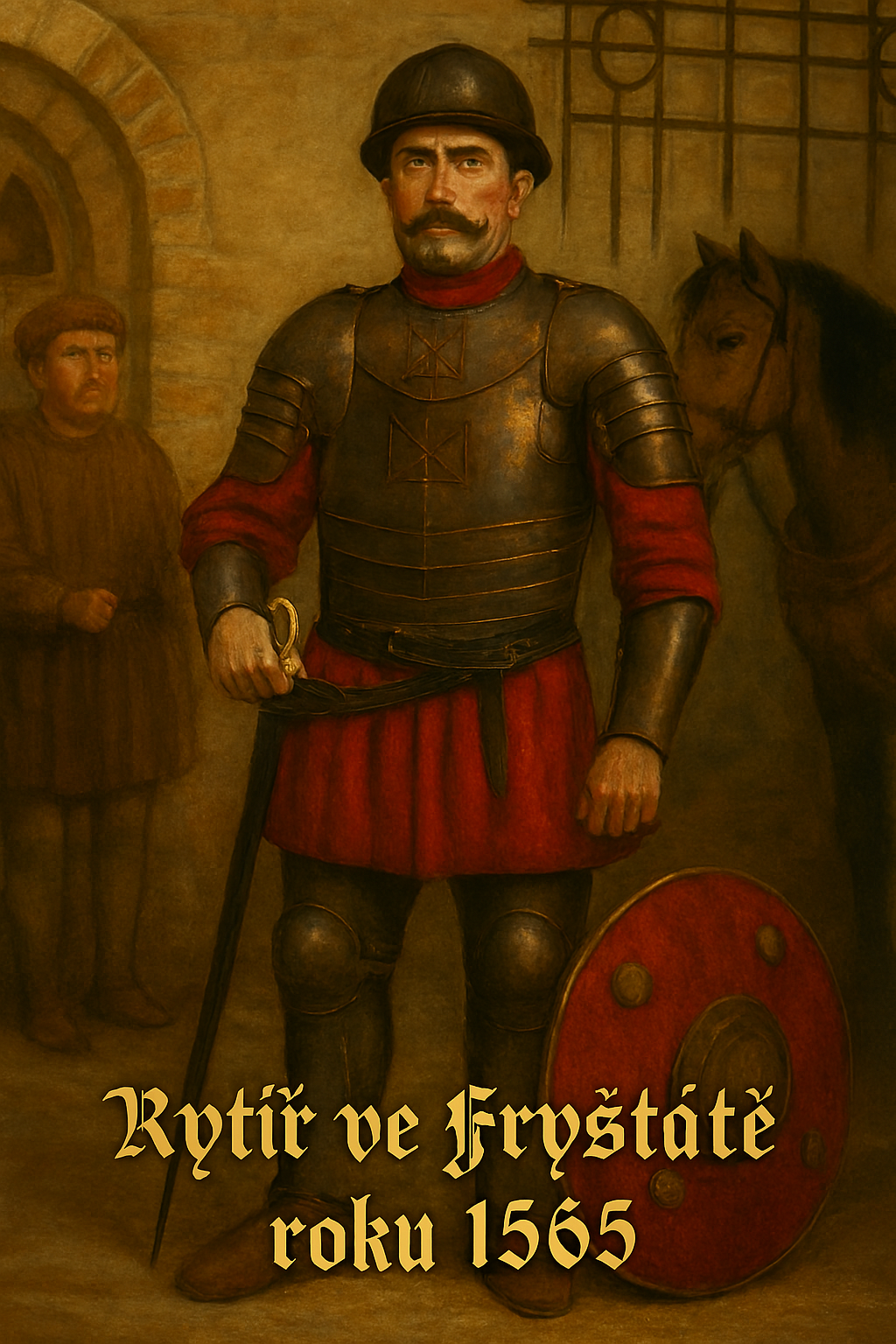
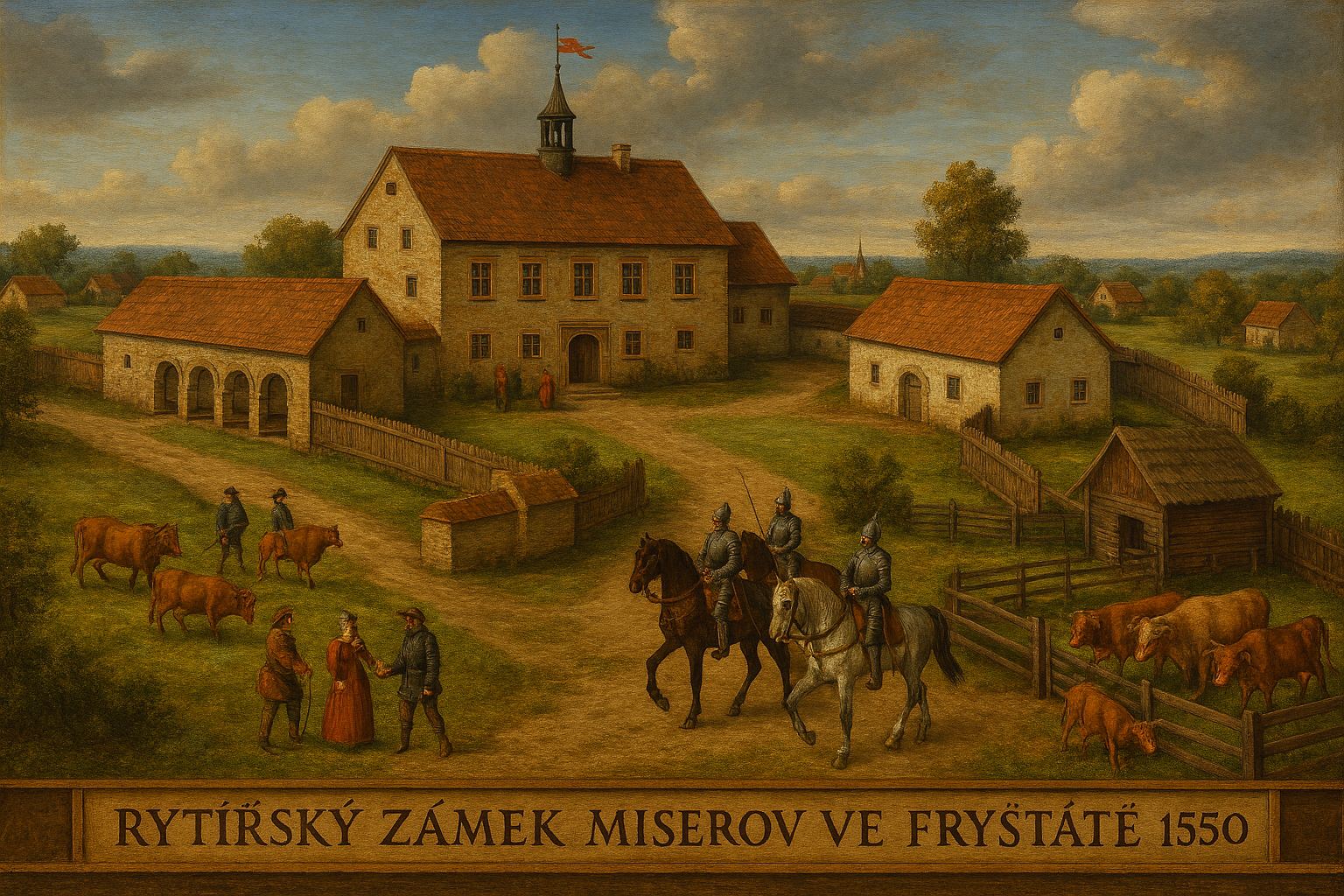
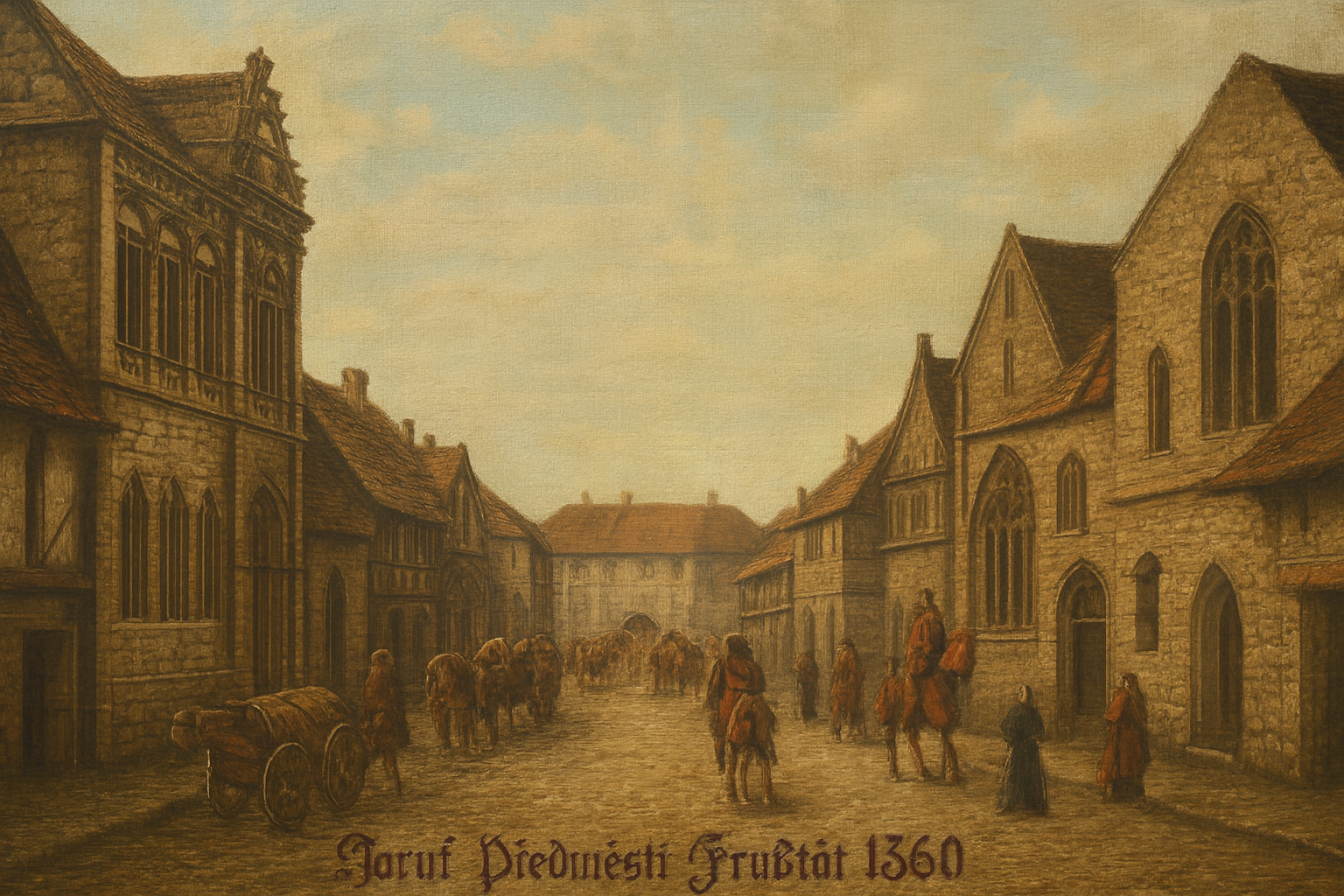
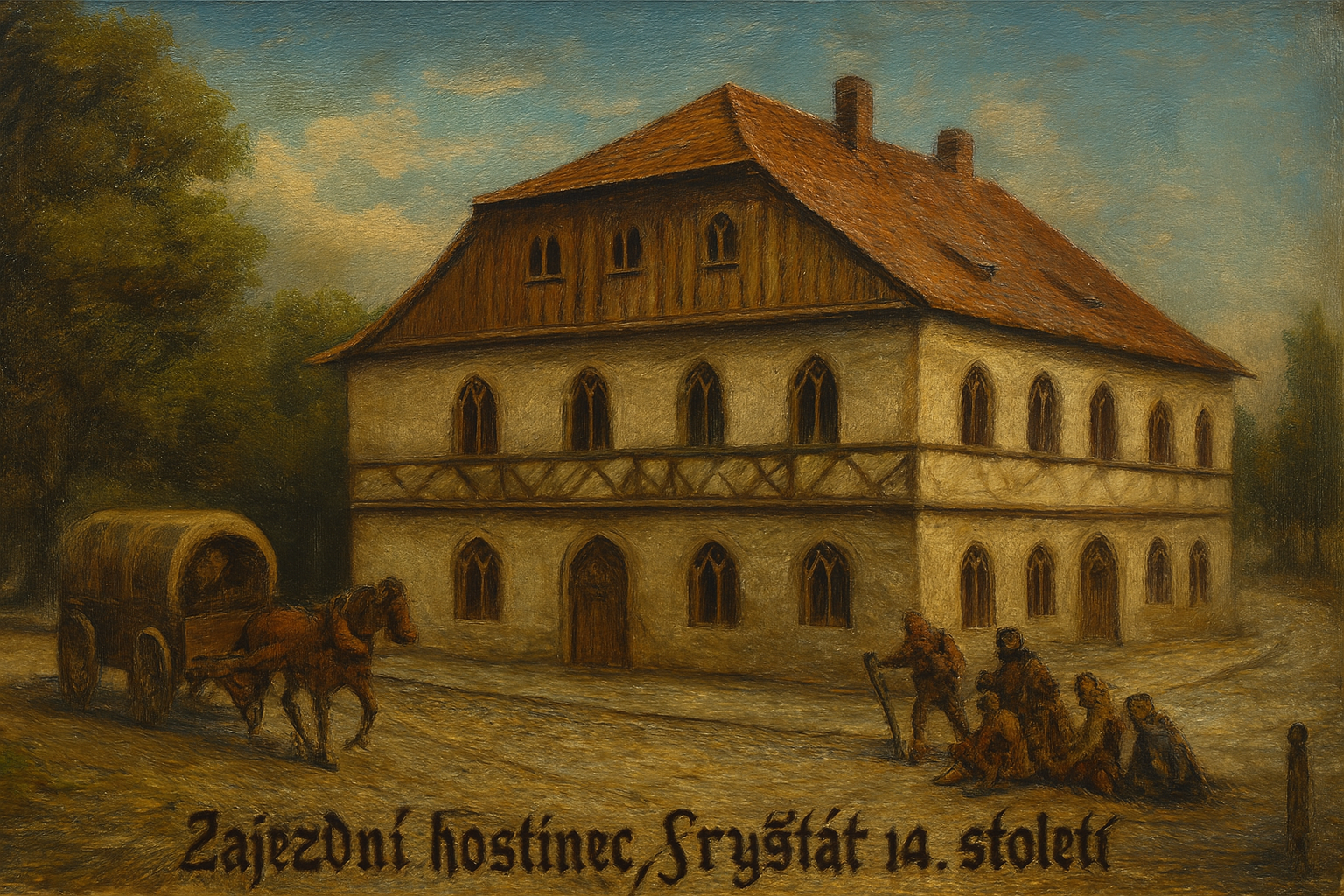
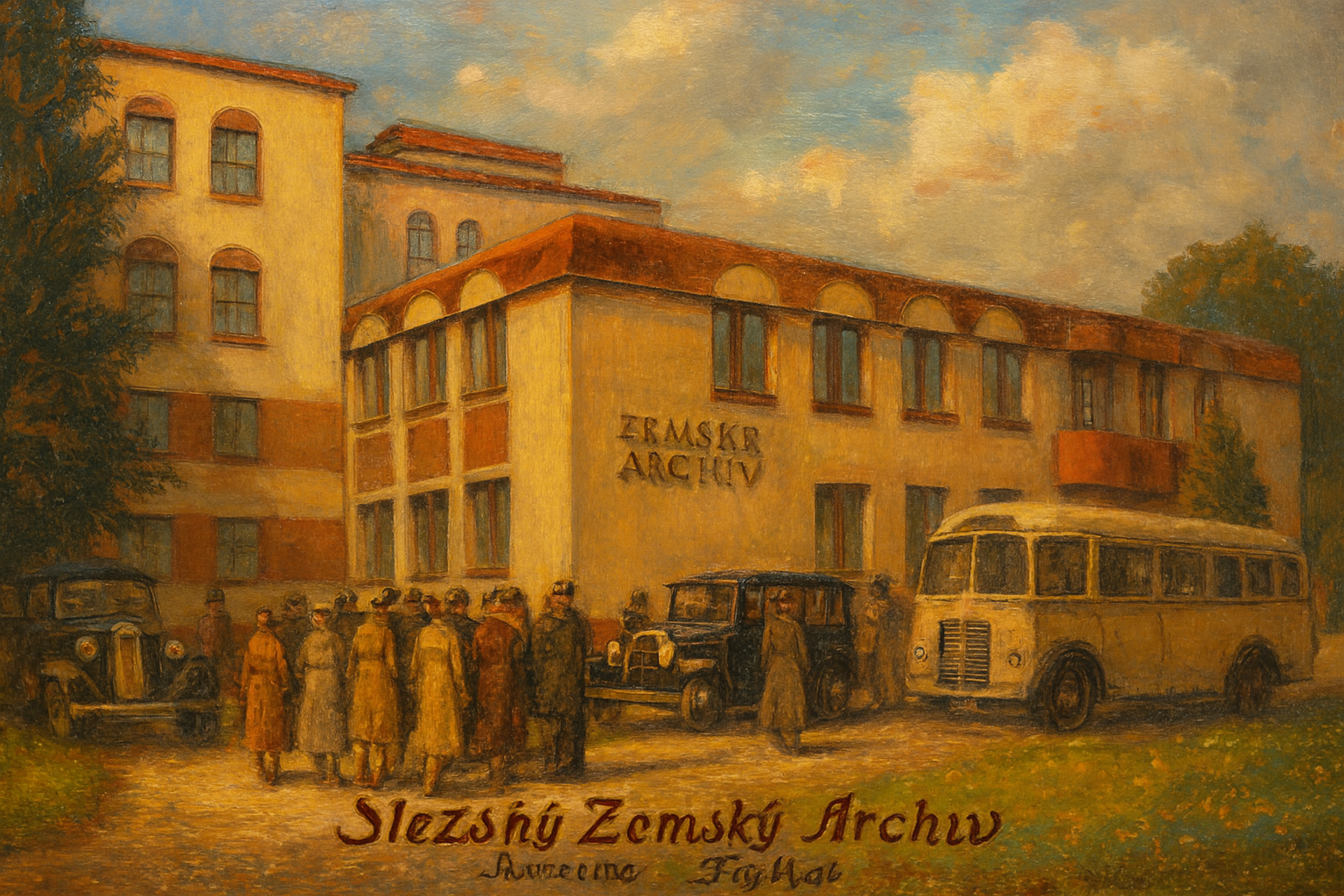
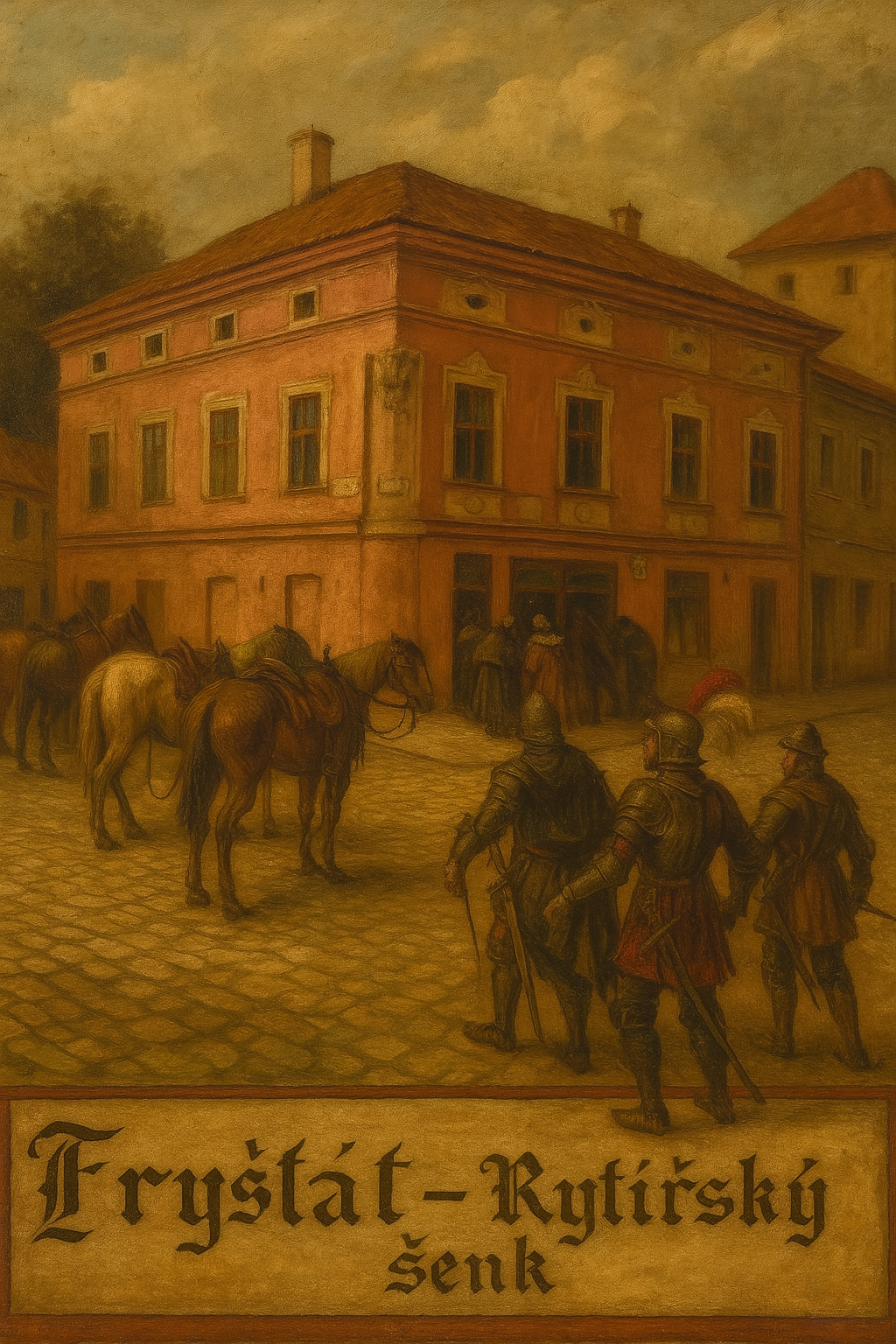
Silesian Knights in Fryštát
In the 15th and 16th centuries, in the Castle District, you would meet, in addition to the castle squires guarding the entrance to the city, the most famous knights. At that time, Fryštát was our favorite center, mainly because His Grace the Silesian Duke and his family permanently resided at the Fryštát Hunting Castle, and so we wanted to be in the center of events and at His Grace's service. Poor knights and knights of non-noble origin were allowed to move in aristocratic circles and also in the company of His Grace the Silesian Duke. The fundamental rule of equality applied among the knights. And some of them were able to improve themselves thanks to this. For example, knight Jiří Rocnar of Rocnov was able to afford to buy a house in Fryštát in 1564, and His Grace, the Silesian Duke Frederick Casimir Piast, allowed him to run a tavern there in return for his loyal services. It is the U Andílků house on the corner of Zámecká and Golden streets in this Pre-Castle. There is still a tavern in this house today, and in the Middle Ages, knights from all over Silesia gathered there every year to celebrate the anniversary of their knighthood. You can also stop by this tavern for a beer to refresh yourself before the final two stops on your tour of the Silesian castle town of Fryštát. Don't forget to visit the Silesian Provincial Archives Museum, which is located right behind the inn. It contains many preserved documents and seals of Their Graces of the Silesian Dukes.
According to the map, you can reach stop number 9 "LOTTYHAUS" when you enter Zámecká street from here In Front of the Castle, it is the first one on the left near the market square, and walk along it to its end, where you stop in front of the castle
9 - LOTTYHAUS


Casimir's great-great-grandfather, Duke of Silesia, Miecislav III Piast, founded the Fryštát hunting castle around 1282
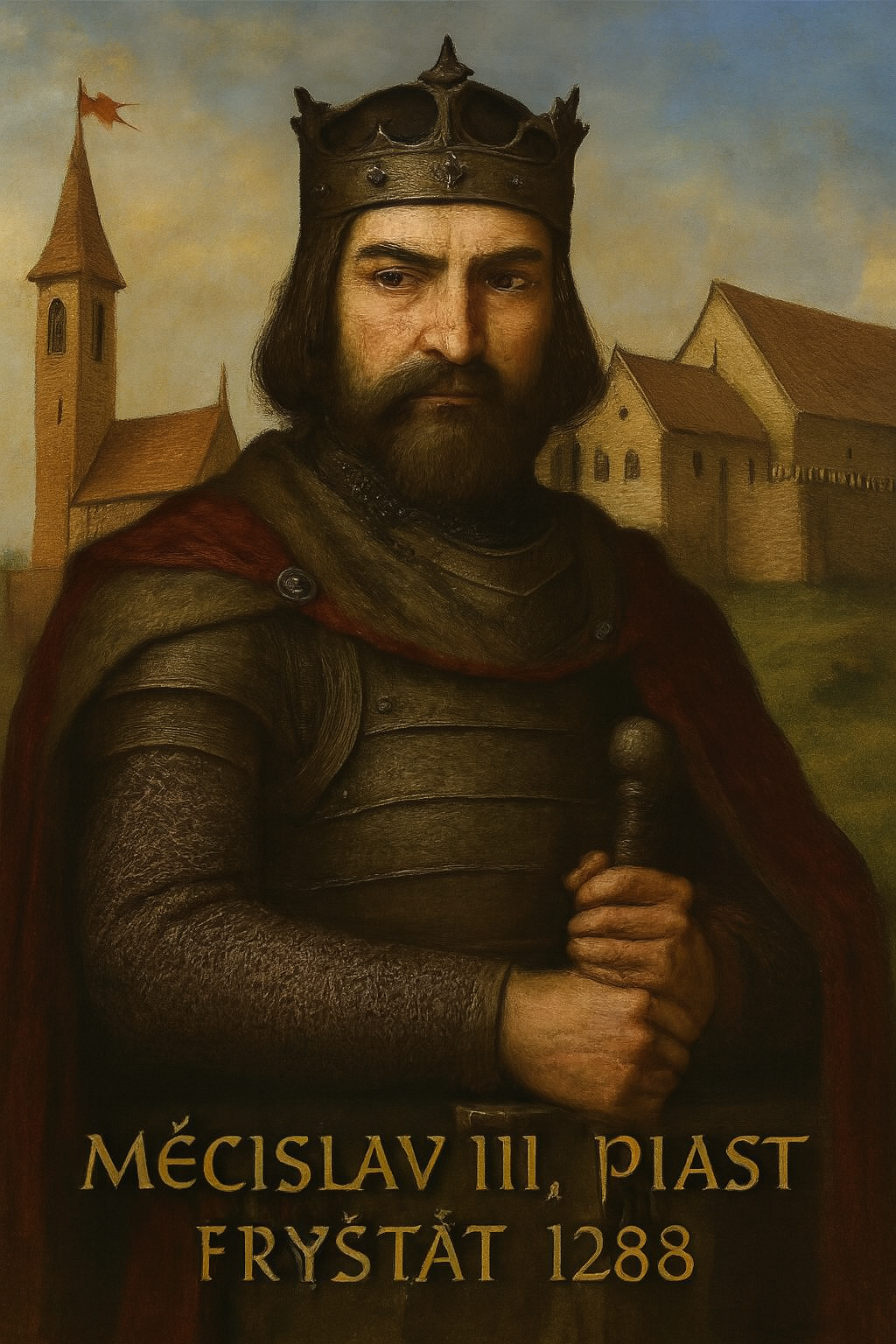
Stop in the small courtyard in front of the back wing of the castle before passing into the Castle Courtyard. On your right hand side stands the Burgrave's Palace of the Fryštát Hunting Castle, called Lottyhaus from the turn of the 18th and 19th centuries. It is a castle building with the seat of the Burgrave, who was the highest official in each castle who represented the duke in his absence. The hunting castle built by the Silesian duke Miecislav III. Piast after 1282 was made of stone and wood and had its own chapel and black kitchen. In some form, his Burgrave's Palace was also built as a wooden structure. During the construction of the castle, the burgrave had to take care of the construction workers and supervised the work of master stonemasons, master carpenters, master bricklayers, etc. The construction of Fryštát Castle lasted about 6 years (1282-1288), which is a short time, because the hunting castle was small and without significant defensive elements. However, the castle also guarded trade routes and royal routes. Duke Mečislav III. always stayed here at the castle only temporarily during his hunting expeditions, but a significant event of his longer, several-month stay here around 1290 was the birth of his daughter Princess Viola, who became the Bohemian Queen Viola Elizabeth in 1305. Around the same time as her birth, Duke Mečislav III. also founded the Cieszyn-Fryštát family branch of the Silesian Piasts, which dominated the government of Silesia until 1528. To ensure the comfort of Duke Mečislav III. only the most necessary staff in the kitchen and the castle guard under the command of the Burgrave lived and worked in the castle. The Burgraveship probably acquired a stone form only at the time of the reconstruction of the hunting Fryštát Castle into the residential hunting residence of the Silesian Duke and Bohemian Viceroy Přemysl I. Piastov before 1376. Duke Přemysl I. needed to accommodate the ducal court here and the Burgraveship served this purpose, which already had chambers for courtiers and officials on the upper floor and can be viewed as part of the II. castle tour "Lottyhaus". On the ground floor, the duke had his rare riding and carriage horses, hunting dogs and his favorite birds of prey stabled here, and young knights were also trained here. The feeding of hunting dogs and birds of prey was ensured by a law that obliged the butchers of Fryštát to hand over the heads and livers of slaughtered animals to the prince. The stables, including the apartment of the butler and the hunter on the ground floor, are open to tourists as an exhibition of the National Gallery in Prague. The stablehands slept in the stables, while the castle servants slept in the ground-floor chambers of the castle, in which the servants also performed their work. The smell from the stables... well, let's say it didn't bother them, to put it politely, in the Middle Ages no one smelled here, so the animal smell somehow disappeared. In the 16th century, there was also a personnel change at the castle and the work of the Burgrave was taken over by the Silesian Marshal as the highest representative of the duke, who was commanded by the duke, but all the personnel ensuring the comfortable life of the Silesian monarchs at the castle was newly provided by the castle Hofmistr, whose responsibilities were subject to the decisions of the duchess.
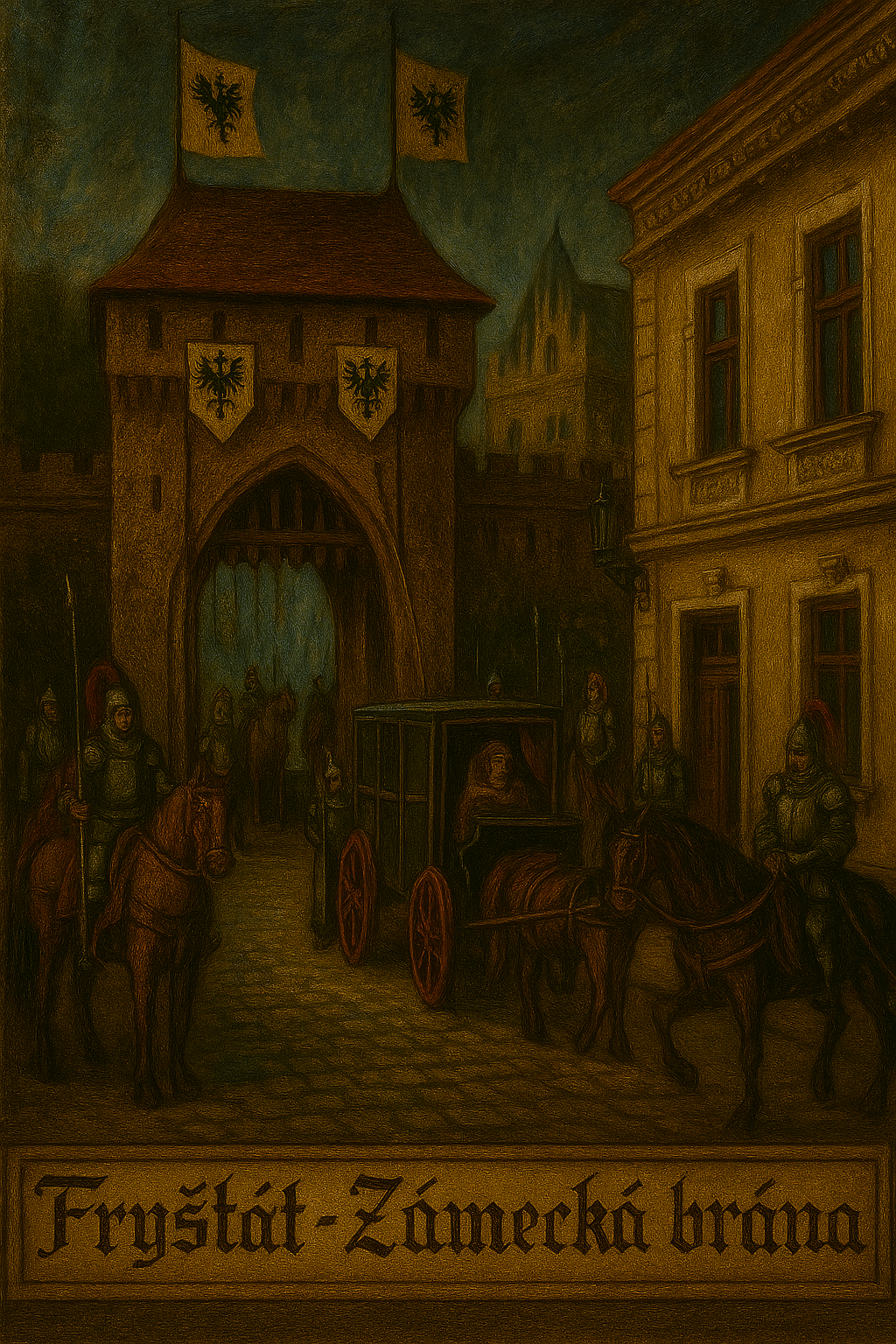
In the place where you are standing, there was an impressive Gothic gate with a tower and loopholes, connected by wooden galleries to the castle and the Burgrave's Palace. The gate was constantly guarded by a large company of castle squires and in front of it was a moat, which could only be crossed by a drawbridge. As soon as the Silesian Duke arrived along today's Castle Street to the Fryštát Castle, the trumpeters blew fanfares, the squires lowered the bridge and the Silesian Duke, accompanied by a large cavalry of his nobles and a company of squires, could drive into the castle courtyard, where he was already welcomed by the Burgrave and courtiers with officials. Behind them, the bridge was raised again. This Gothic gate was only abolished by the Silesian Viceroy Casimir II. Piast, when he carried out a major Renaissance reconstruction here in the years 1511 - 1514. It has remained almost the same since then.
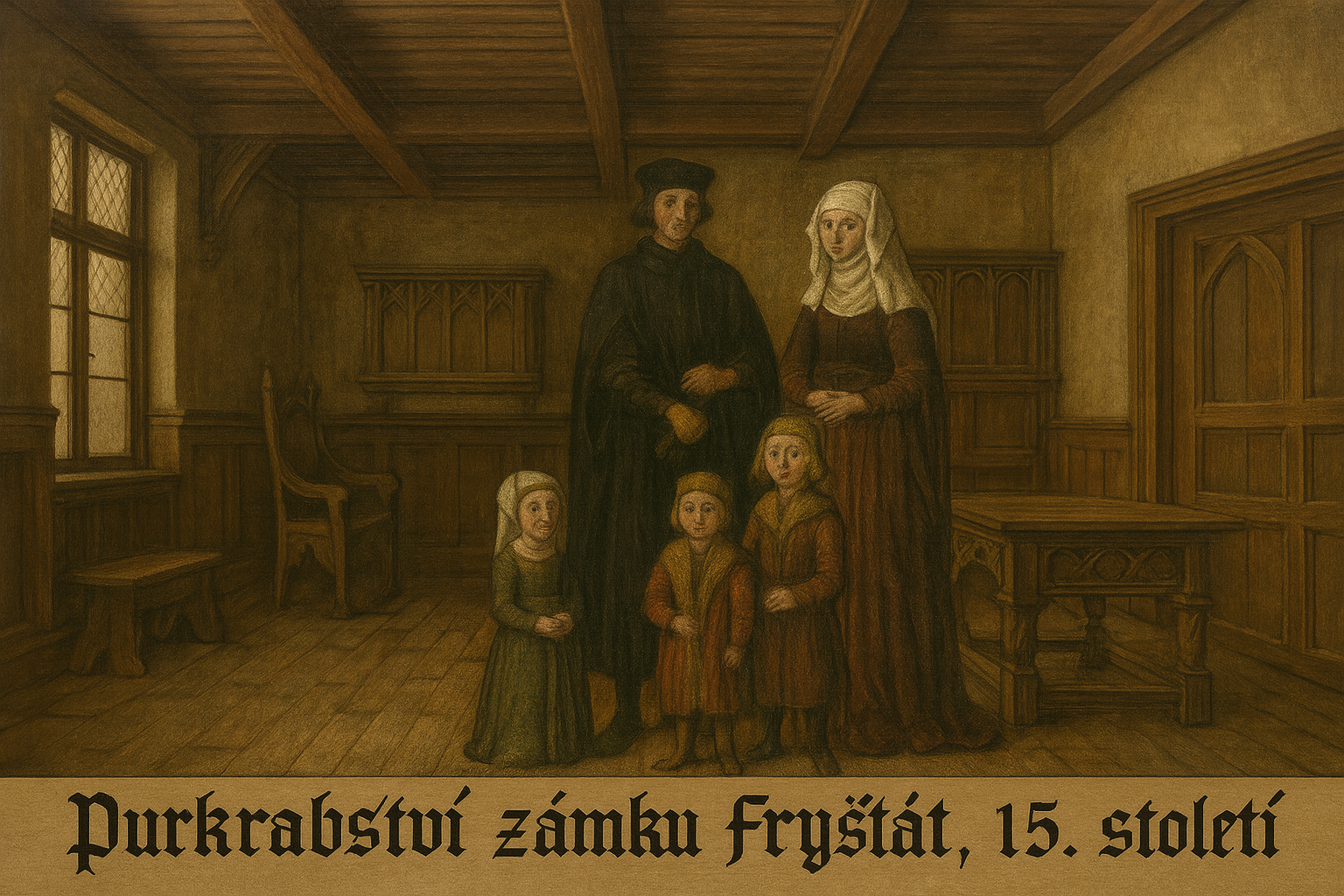
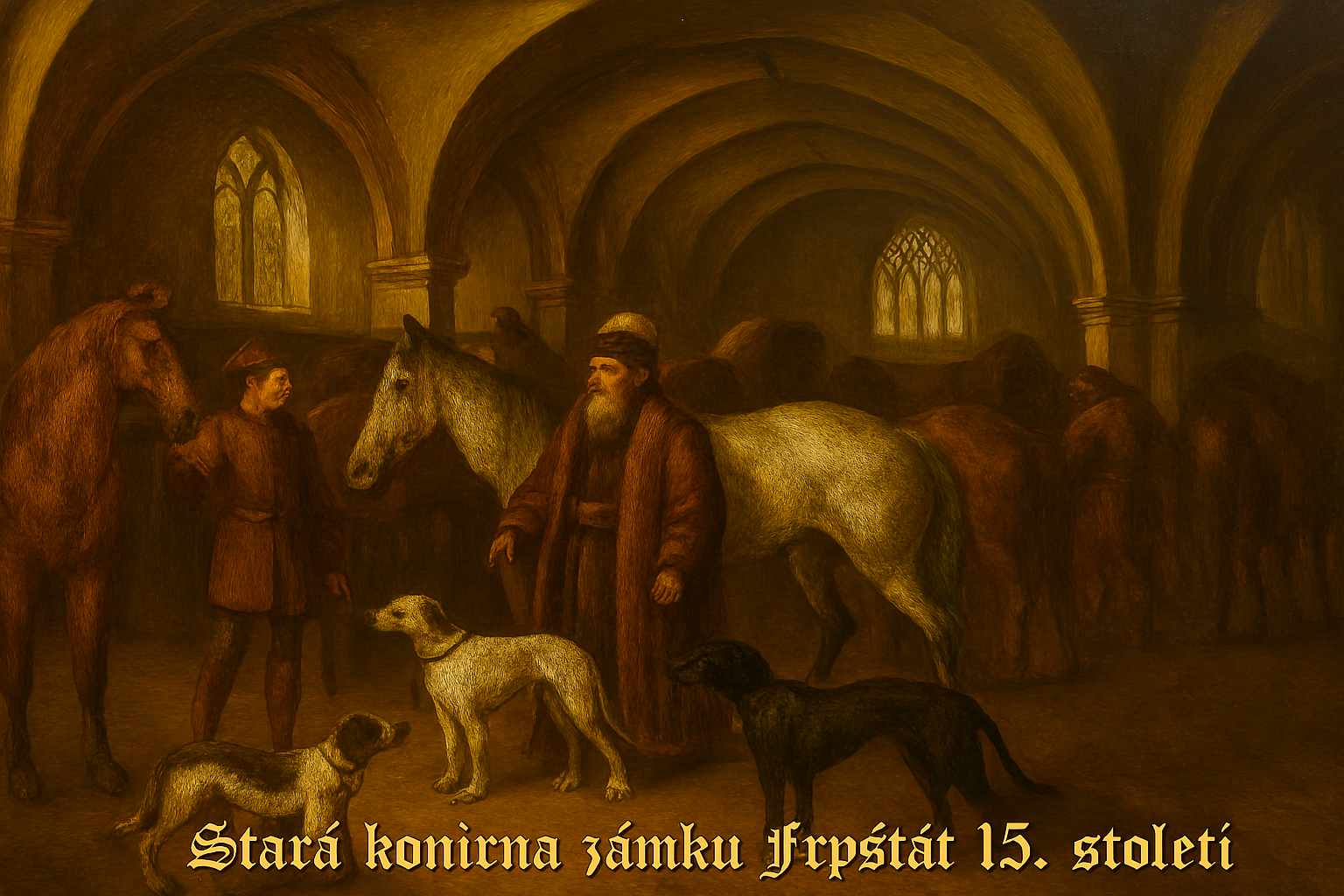
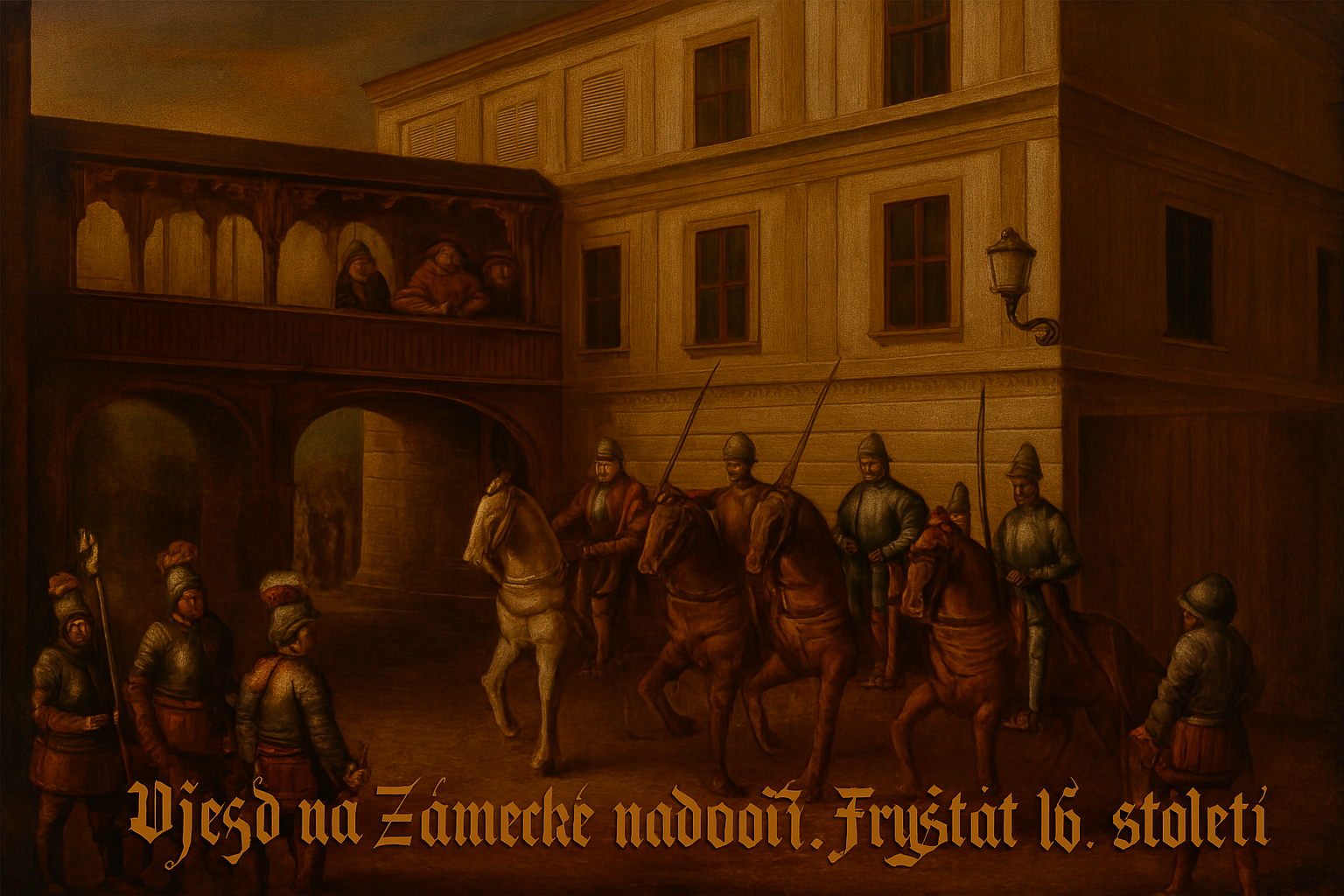

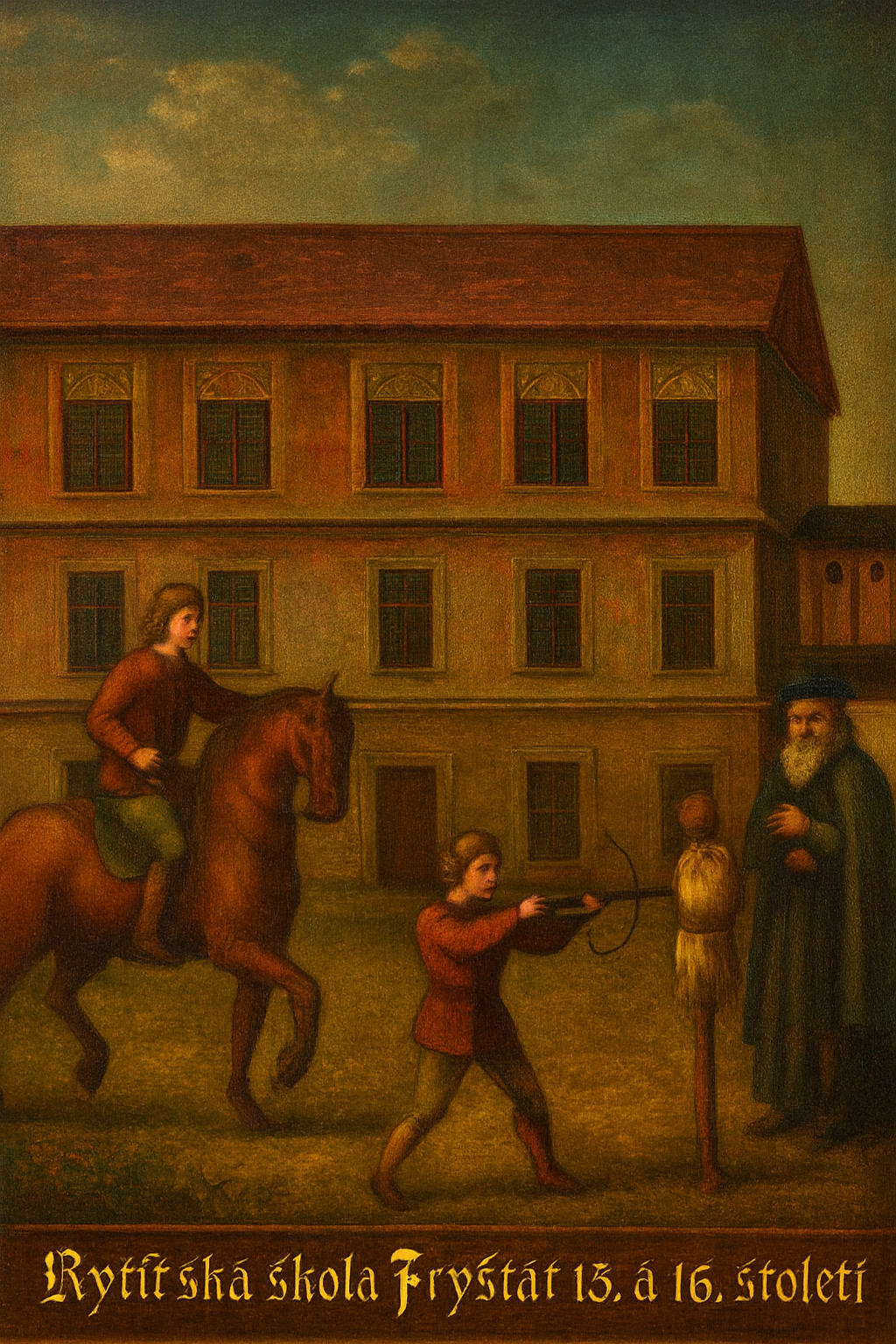
Knights' School in Fryštát
Knightly education was also provided in the castle Burgrave's Estate (Lottyhaus). Knights in Fryštát received their knightly education, which, in addition to horse riding and weapon handling, also included the art of mastering good manners, foreign languages, and of course, music, singing, dancing, and social conversation. The knight's position was not only as a warrior, but also as a cultivated cavalier. The education of knights took place in the castle Burgrave's Estate, today's Lottyhaus, where the prince's stables have been preserved, and in the riding school, which was under the castle. Boys began their education when they were 7 years old. The education was led by a preceptor, who was usually an older, retired knight in the service of the Silesian dukes. As young boys, they first learned to wield swords and practiced with wooden substitutes. Around the age of 15, boys became squires, and they could already ride a horse well while holding and controlling a weapon in one hand, for example, they shot a rag doll from a crossbow while riding. When the young men who were studying reached the age of 21, they were ready for knighthood. Knighthood was a very solemn ceremony. It began with a ceremonial bath in the morning and after that, when the squires were dressed in ceremonial clothes, a mass was held for the occasion in the Fryštát castle church, which they attended. They went to church every day, but now the mass was held just for them... Then the knighthood took place. It could take place individually, but it was usually held together before the start of the knightly tournament, which the newly knighted knights could also participate in for the first time. The knightly tournament was always opened by His Grace the Duke of Silesia and each individual knightly joust began with the blowing of trumpets. The winner of each knightly joust received the equipment of the one he defeated. Often also his horse and the loser himself, whom he then released for a ransom. The higher the nobility of the defeated knight, the higher the ransom the winner demanded. However, the knights also competed for the favor of the ladies present, but this was a thorn in the side of the Free State clergy, who saw in such tournaments only opportunities for young men to sin with young girls. Above all, however, it was about entertainment, which even the reigning dukes gladly participated in, and the spectators had fun and encouraged the knights to perform.
The passage between the Burgrave's House (Lottyhaus) and the castle remained the main access route to the new Castle Courtyard until 1637, and you can also move through it according to the map to stop 10 "CASTLE" and stop right in front of the castle. I cordially invite you!
10 - CASTLE


Welcome to Casimir Fryštát's royal court of the 15th - 16th centuries

Court Etiquette at Fryštát Castle
Sit on a bench in front of the castle. Although the Fryštát Hunting Castle was governed by the lavish court etiquette established here in the mid-15th century by Her Grace Silesian Duchess Euphemia II. Piast, grandmother of His Grace Silesian Viceroy Casimir II. Piast, modeled after the Jagiellonian royal court etiquette, this does not mean that the life of Her Graces Silesian monarchs in Fryštát was not dull. His Grace Silesian Viceroy Casimir II. as the ruler and representative of His Majesty the Bohemian King Vladislav II. Jagiellonian in Silesia, and his wife, Her Grace Silesian Duchess Johanna, the ruler and highest-ranking Bohemian aristocrat, were bound by the rules of court etiquette. She ordered them, their ancestors and their descendants what they could or had to do and also forbade what they would like to do. His Grace the Duke of Silesia enjoyed a little more freedom. He often left Fryštát to hunt or on business trips, while the life of Her Grace the Duchess of Silesia was limited only to movement within the premises of the Fryštát Castle, at most a walk in the Castle Courtyard or in the Castle Garden. But she was never alone. She was always accompanied by court ladies and there was also a large castle guard nearby. When Her Grace the Duchess of Silesia wanted to leave Fryštát, she had to officially ask her consort as His Grace the Duke of Silesia for permission to leave and had to justify her departure, for example by a legitimate visit to her parents at their residence and she also had to announce how long she would be absent from Fryštát. According to court etiquette, Their Graces the Duke and Duchess could only enjoy privacy after evenings spent with their family. However, they lived a life of luxury at the Fryštát Hunting Lodge, and you can see its chambers as part of the 1st castle tour.
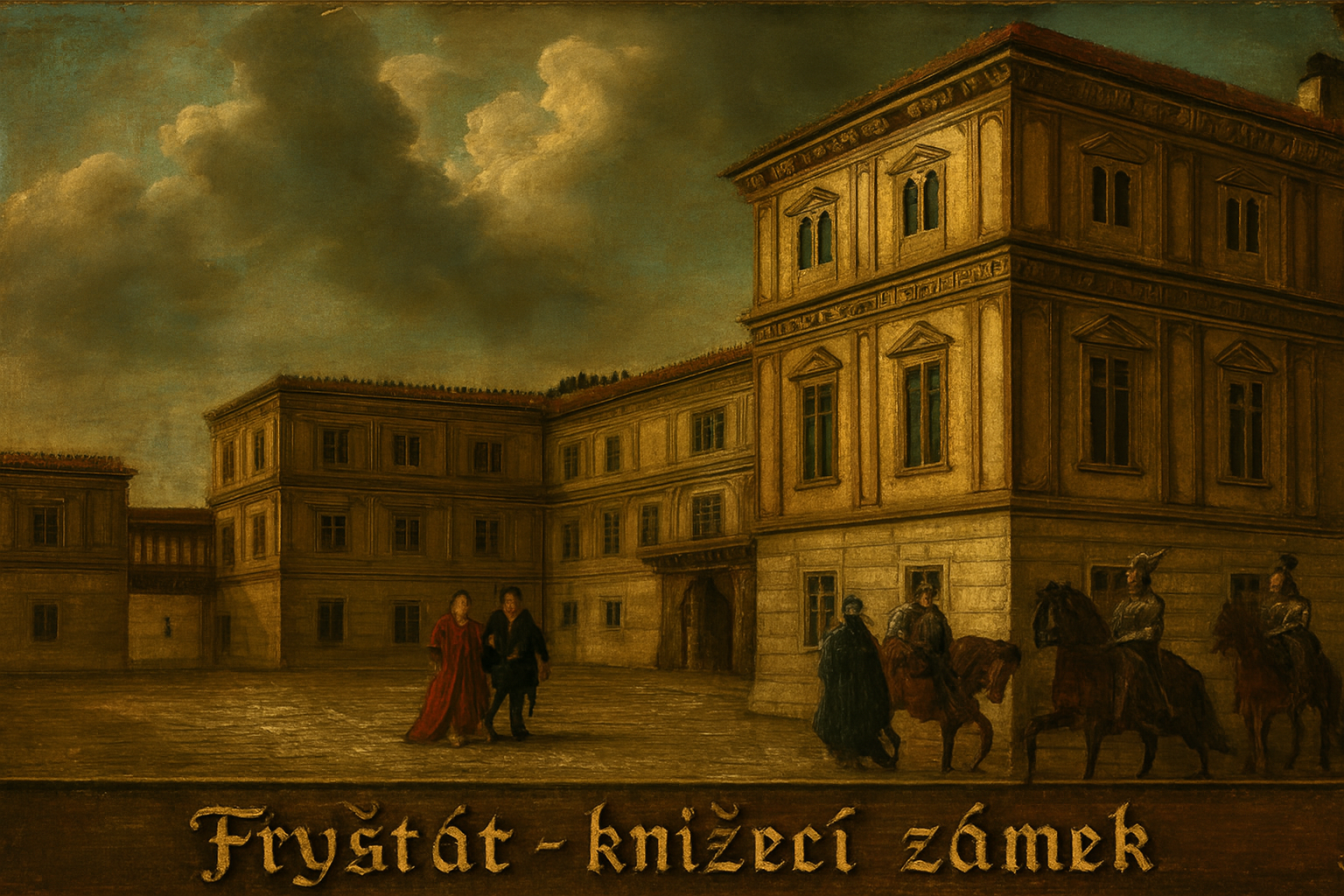
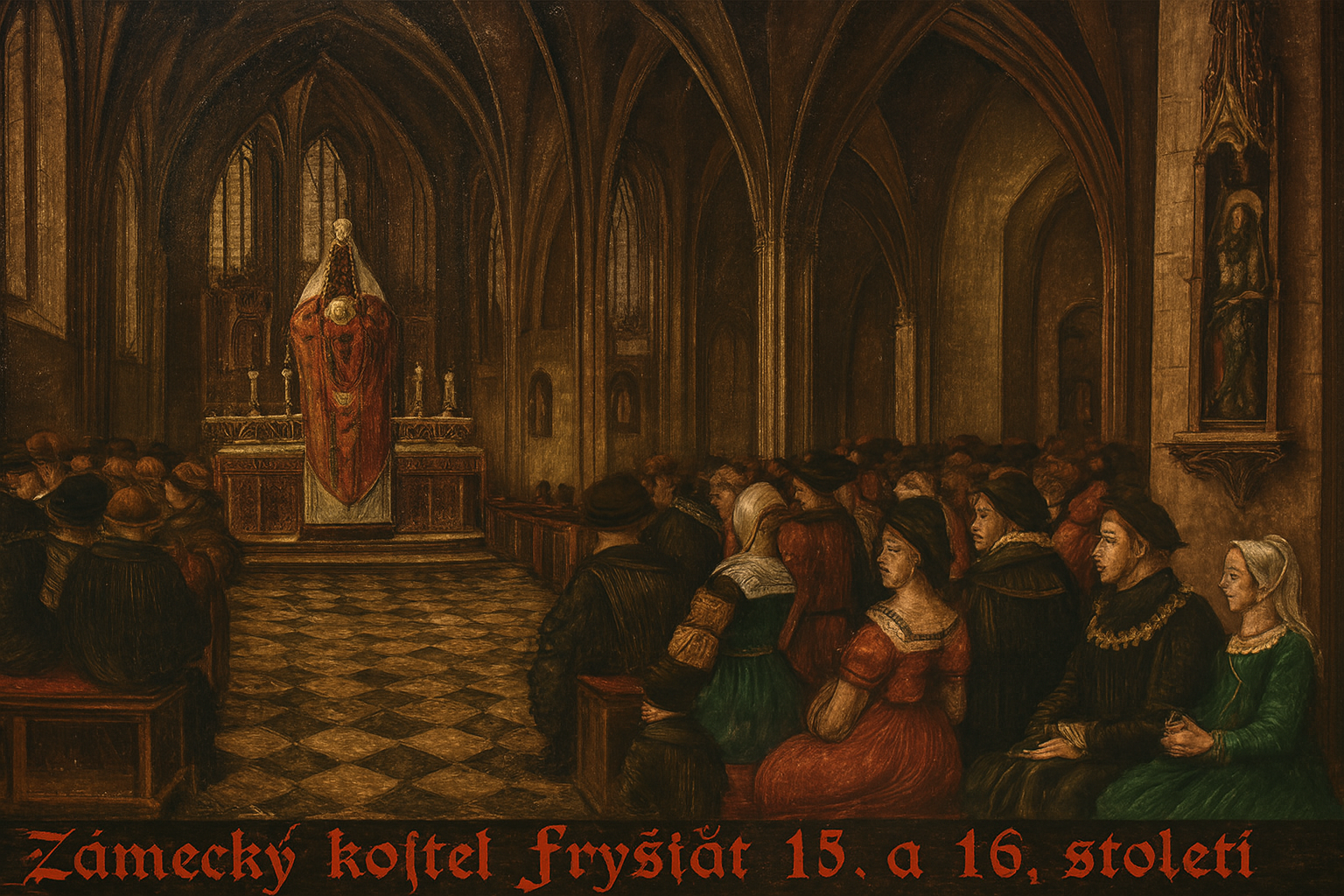

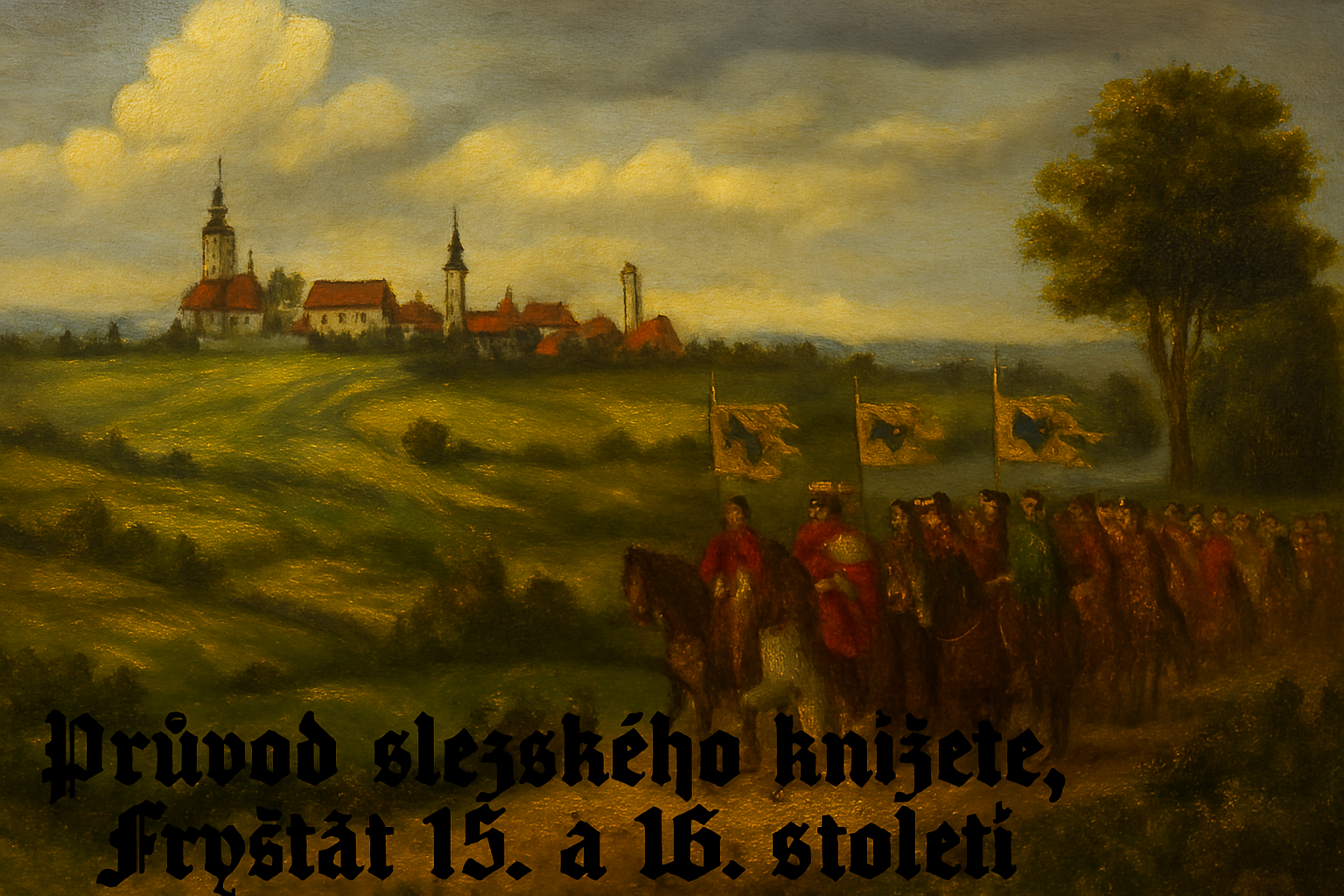
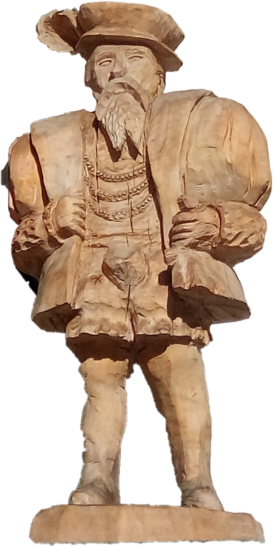
Duties of the Duke
Fryštát Castle served primarily as a popular, but temporary, hunting residence of the Cieszyn-Fryštát family of Silesian dukes Miecislav III, Casimir I, Přemysl I, Boleslav I and Wenceslas III, which they used mainly during their hunting expeditions. Fryštát Castle is not too large for the permanent residence of the Silesian ducal court, but the Silesian monarchs from the Cieszyn-Fryštát family, such as Euphemia II, Boleslav II, Anna, Casimir II, Marie and Frederick Casimir, preferred it for its mild climate and comfortable living, so they settled here permanently with the ducal court. During their permanent residence here, the Fryštát Hunting Castle enjoyed the most luxurious conditions in Silesia and dominated the other residences of the Silesian monarchs. However, every day of the Silesian dukes at Fryštát Castle was almost stereotypical. They would get up at dawn and, after at least some hygiene, go to the castle church for morning mass, accompanied by courtiers and officials. After that, the ducal family gathered in the banquet hall, where the duke sat at the table with the princes, nobles and highest officials. Separated from the duke at the other table, the duchess sat with the princesses and ladies-in-waiting. After a joint prayer, and when the duke gave the order, the pages began to bring food to the table. Eating food in one's own chamber was forbidden here and was considered a gross insult to the Fryštát ducal court. After this breakfast, which was always around 9-10. hours, the duke would go hunting with the nobles in the surrounding forests, or with his entourage on a short or multi-day business trip through the duchy, and of course he would also devote himself to governing there. At Fryštát Castle, the duke would negotiate with the Silesian aristocracy, city councilors and clergy, but he also hosted several kings and queens here. He would occasionally organize knightly tournaments and perform the coronation of new knights. The duke would occasionally thank his most loyal nobles, courtiers and officials with gifts in the form of houses, land or promotions to a higher status. And to ensure that the duke was always popular and respected by his courtiers, he would often organize balls and other celebrations at the castle. All of this represented the Silesian duke well in his Fryštát residence. In the second half of the 16th century, the prince enriched the Fryštát hunting lodge with valuable art collections and had cages with exotic parrots brought into the castle chambers. He led a truly lavish life at the castle, and the icing on the cake was a dwarf, whom the duke had brought to Fryštát from Italy. The dwarf was the only one at the ducal court who could behave impudently and even impolitely, could touch the ducal couple and could also say things out loud that all the courtiers knew about, but no one would dare to say out loud. The Fryštát castle dwarf was also a spy and informant. Because he could move freely around the castle, he observed the behavior of the courtiers, their intrigues, plots and listened to their conversations, which he reported to the duke and duchess. But he also had the role of a cheerleader, so he entertained the entire Fryštát ducal court with his comical antics.
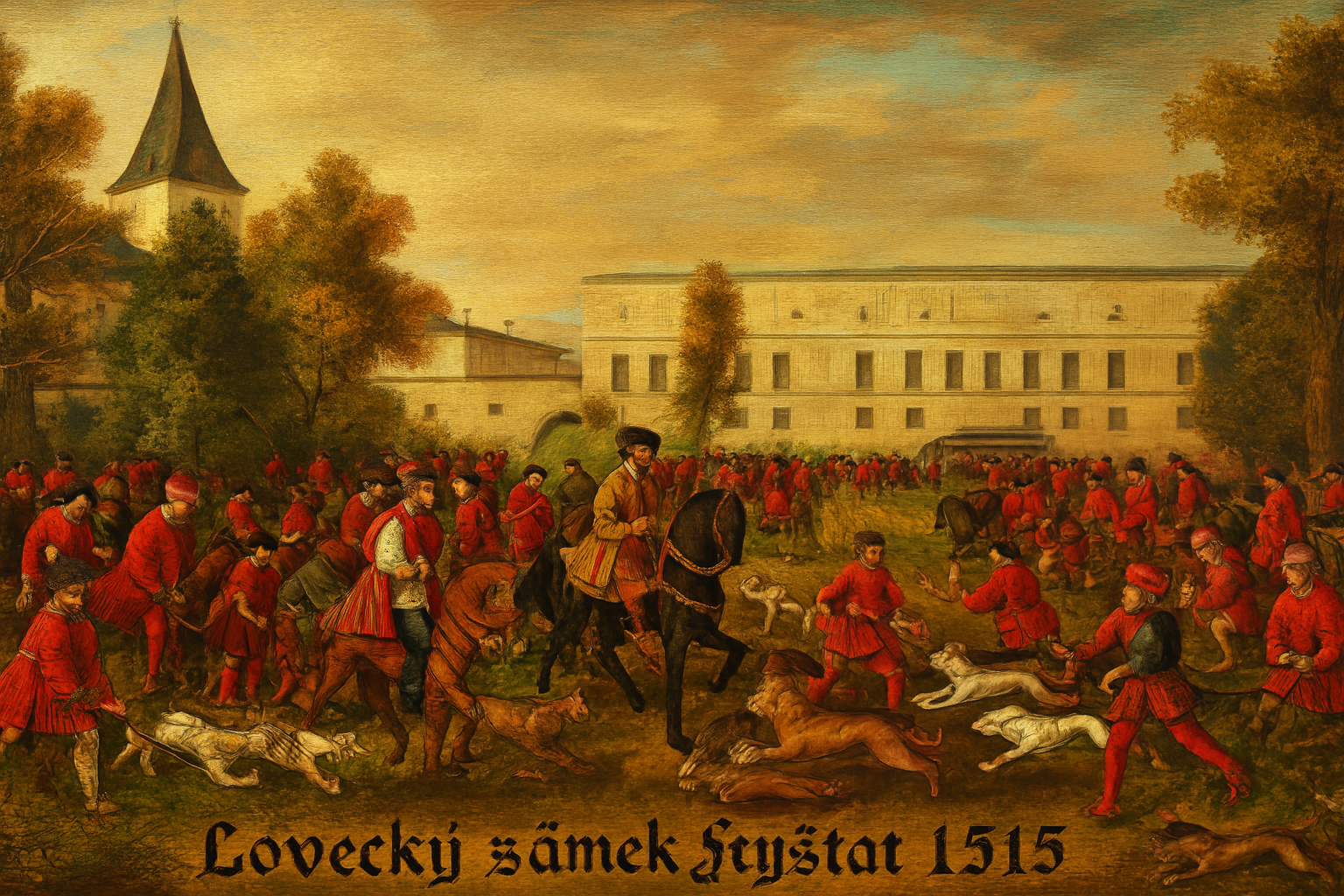
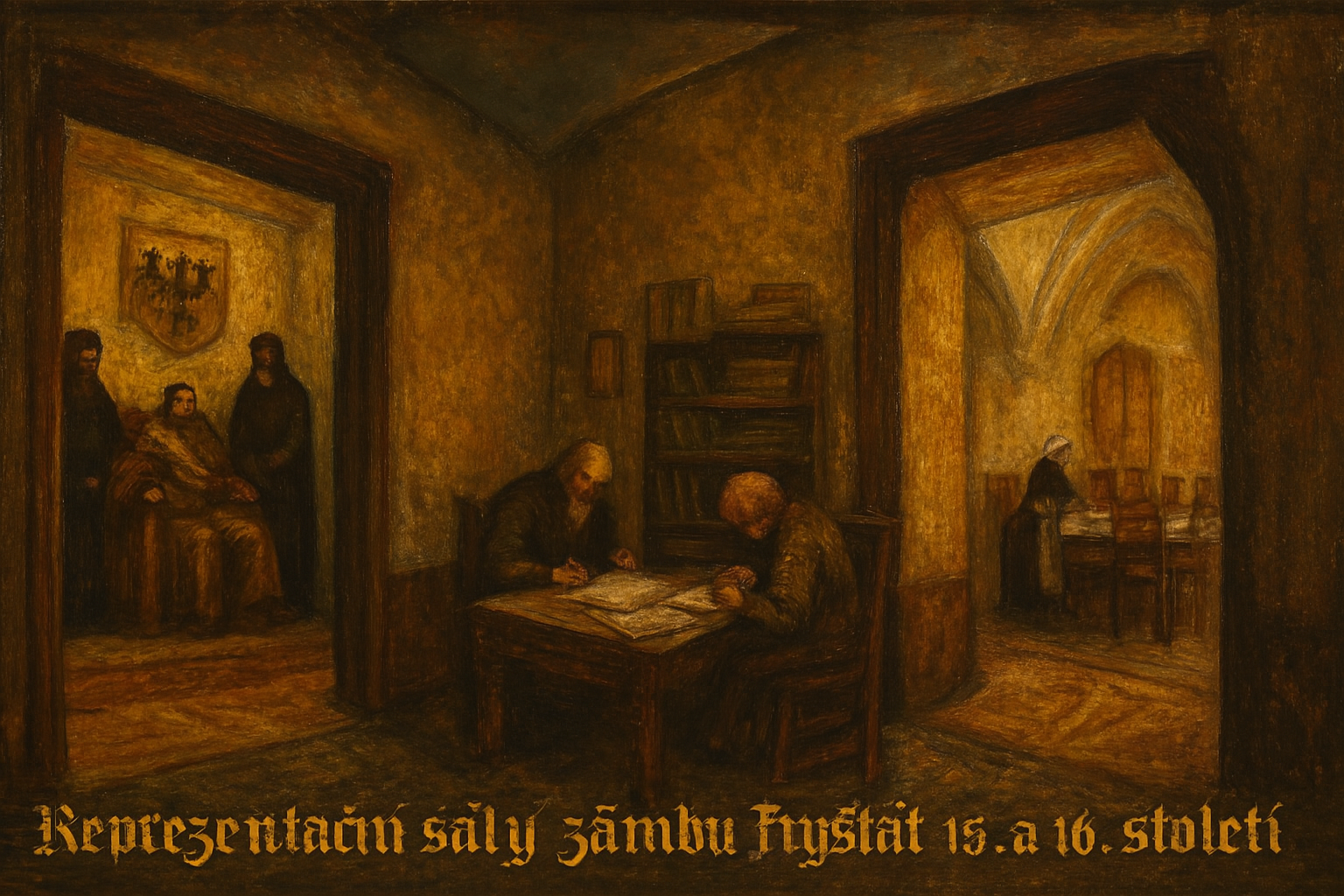

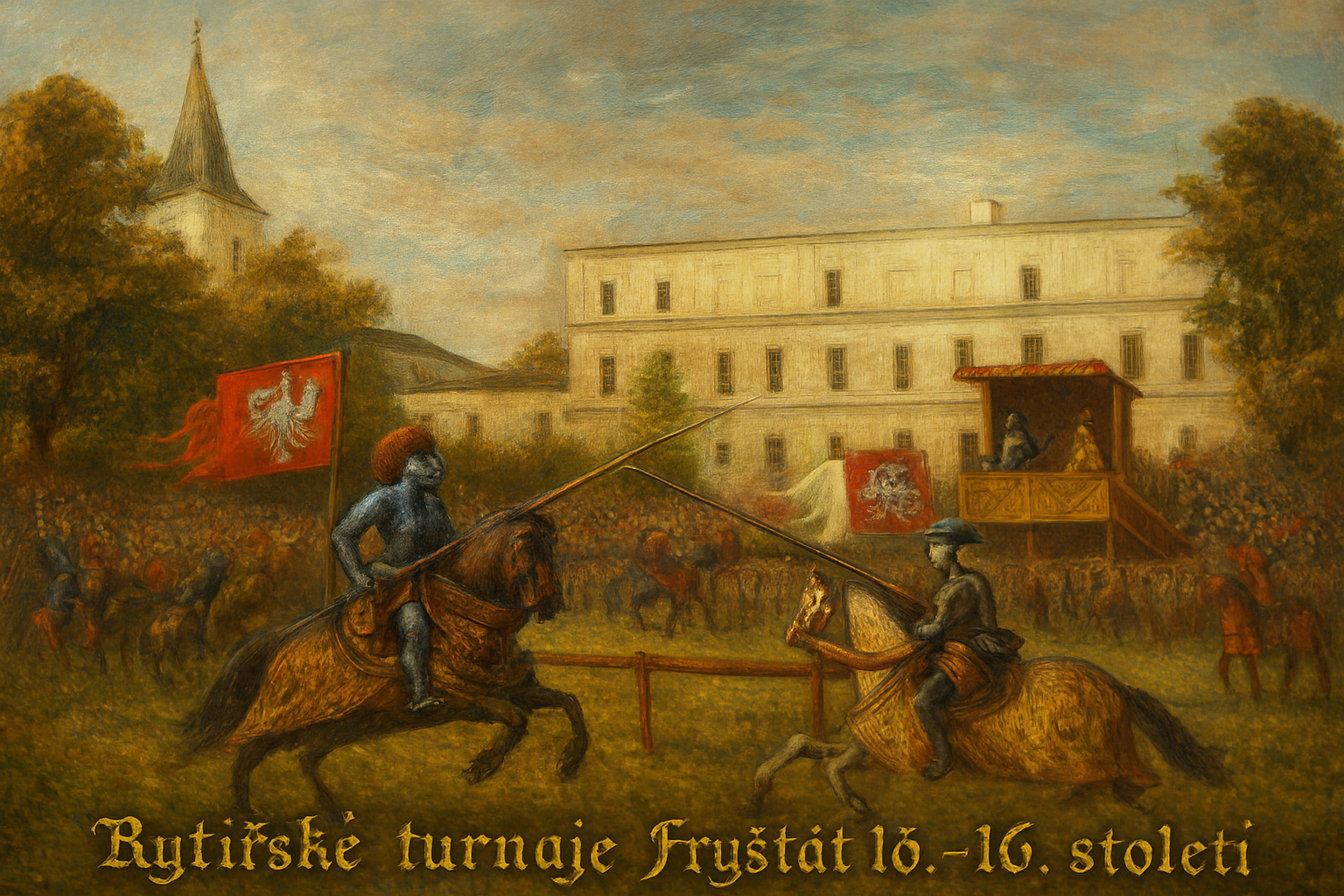
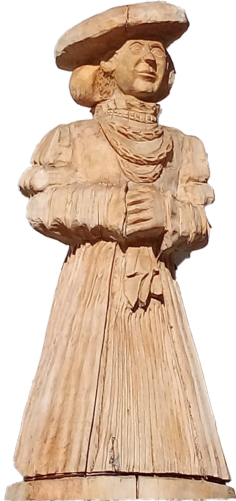
Duties of the Duchess
During the day, while the Silesian Duke was engaged in the duties of a regent, or hunting game in the surrounding ducal forests with his nobles, the Silesian Duchess was accompanied by her court ladies. Without them, the Duchess would not have taken a single step, because she represented herself perfectly in their company. The court ladies spent all their time with the Duchess and together they also engaged in some kind of handicraft, for example, embroidering blankets, decorating objects, or playing musical instruments, singing and dancing. They were mostly ladies from Silesian aristocratic families, but girls from lower-class townspeople could also be educated in this way. Young girls received an appropriate education at Fryštát Castle. They were educated in the history of the Piast family, learned foreign languages, good manners and court etiquette. When they grew up, they could marry into aristocratic circles on the recommendation of the Silesian princess, because girls and women who served at the Fryštát ducal court as ladies-in-waiting were considered comparable in status to women of noble origin. However, the paramount and fundamental rule of chastity applied to all ladies-in-waiting. As soon as it was heard that one of the Fryštát ladies-in-waiting had committed an immoral act, her fate was sealed. She was mercilessly exiled from the castle and, moreover, had a very unpleasant reputation as a prostitute. The Silesian duchess's duty was to lead the Fryštát Fraucimor, represent the Duchy of Silesia and, above all, to give him an heir to ensure the continuation of the dynasty in Silesia. A daughter-princess could also inherit, but if a prince was born, he was given priority in succession. The Silesian rule was that all sons were entitled to inheritance. The ducal parents were not allowed to raise their children, their parental duty was fulfilled with their birth, and the descendants of the Silesian ducal couple were then looked after by tutors at the castle. In the case of princesses, this could be a hired teacher or even court ladies, in the case of princes, it was a Preceptor, who was usually a retired elderly knight who had previously served the Silesian duke. The Preceptor was in charge not only of the princes' upbringing, but also of their education. However, it often happened that young princes and princesses were raised at other Silesian castles or directly at the imperial court in Vienna. The descendants of course spent time with their ducal parents as a family, but their relationship was at the level of duke - prince, not father - son. This is how they formally addressed each other. When they grew up, their further life was fully in the hands of the ducal parents. They found them a spouse primarily at other royal courts, and it often happened that the descendants were betrothed to their partner while still children or very young. There was interest in Silesian princesses because they came from a royal dynasty and this was highly sought after in aristocratic circles. However, after their marriage, young Silesian princesses usually never met their parents again. If there were more than one prince in the family, even though all were entitled to the inheritance, the parents chose one whom they married advantageously, and he then continued as a successor in the Silesian royal dynasty. Other princes could be chosen for a clerical career, with the proviso that they would never marry and die childless. The descendants thus became mere pawns on the political chessboard of their ducal parents.
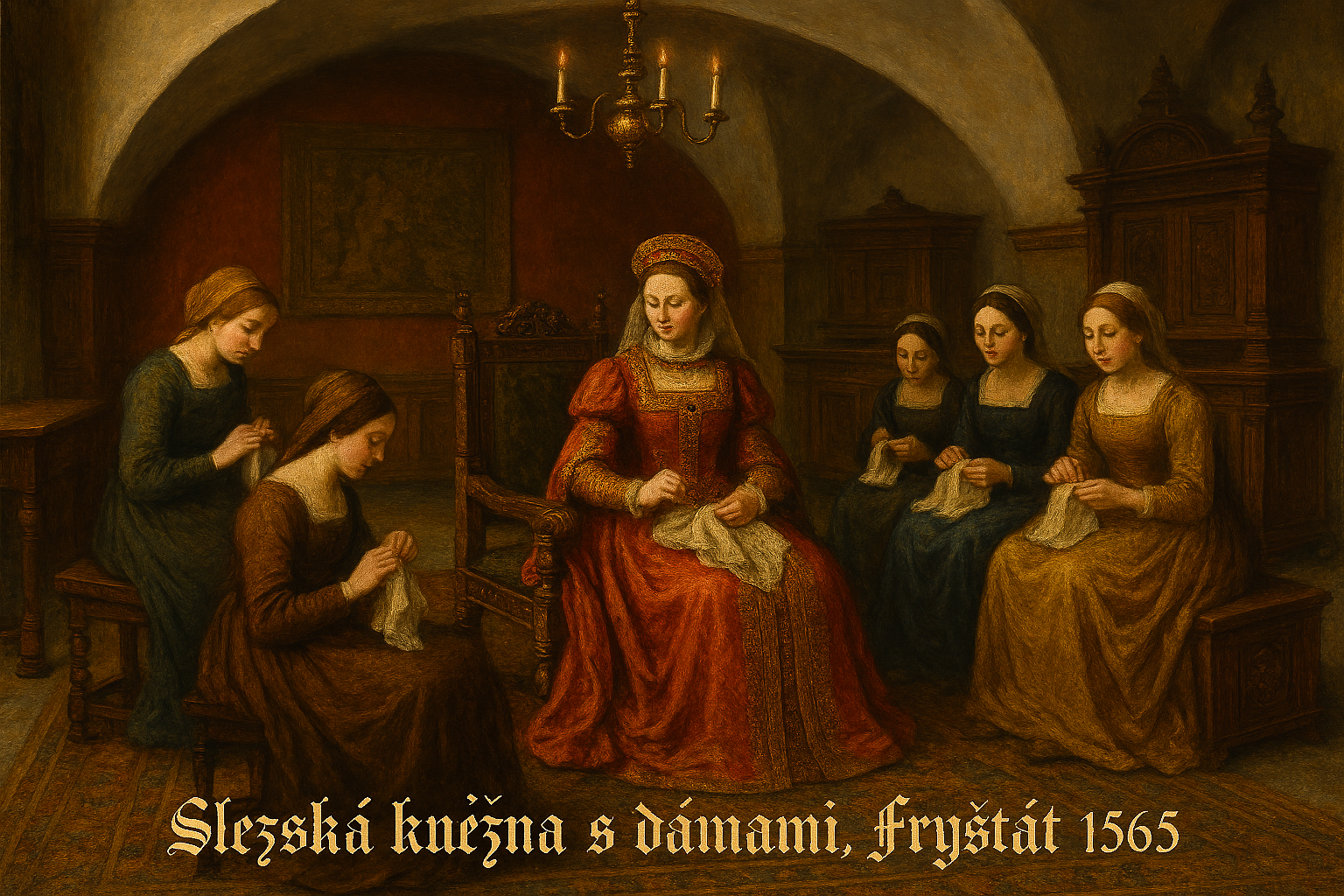
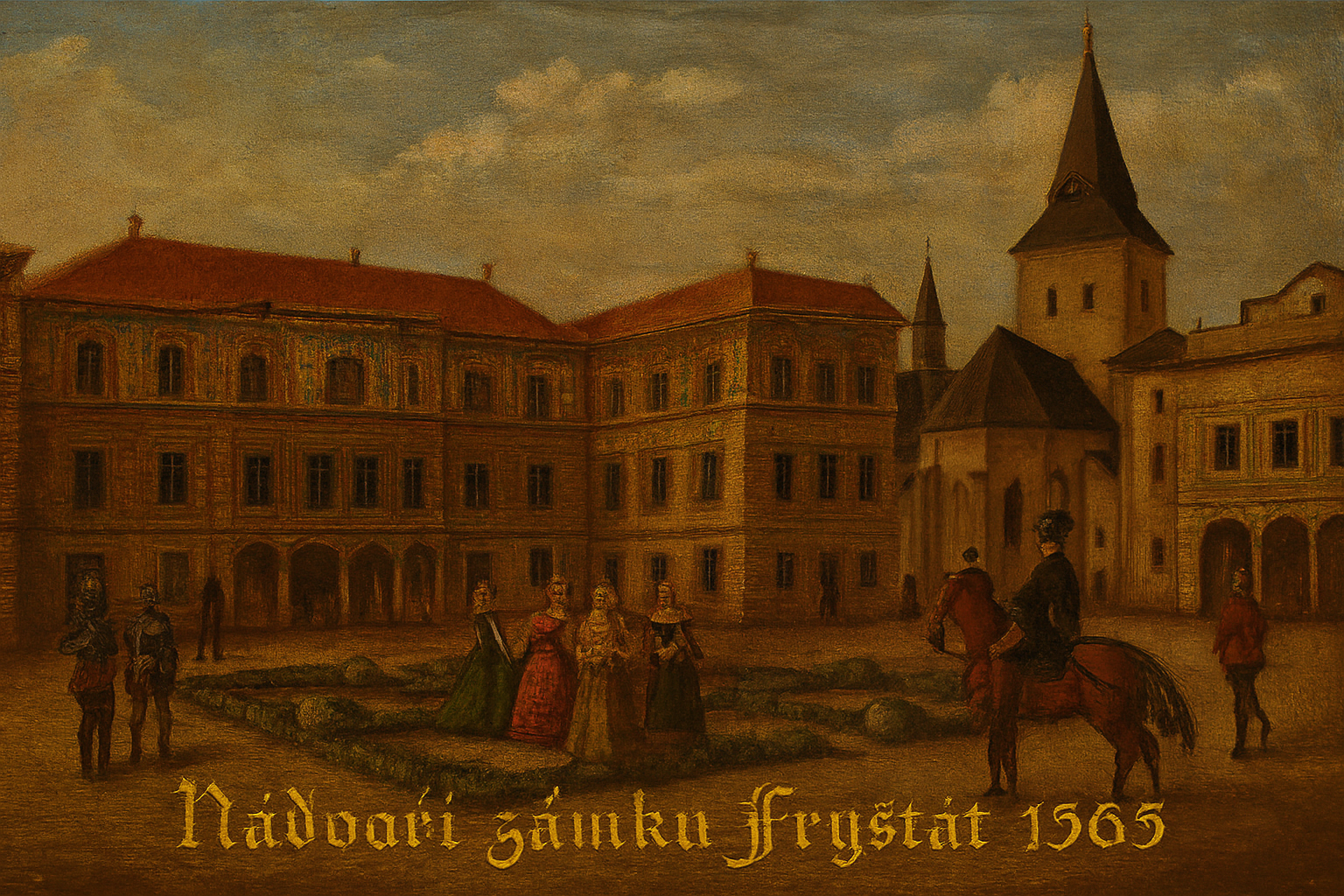
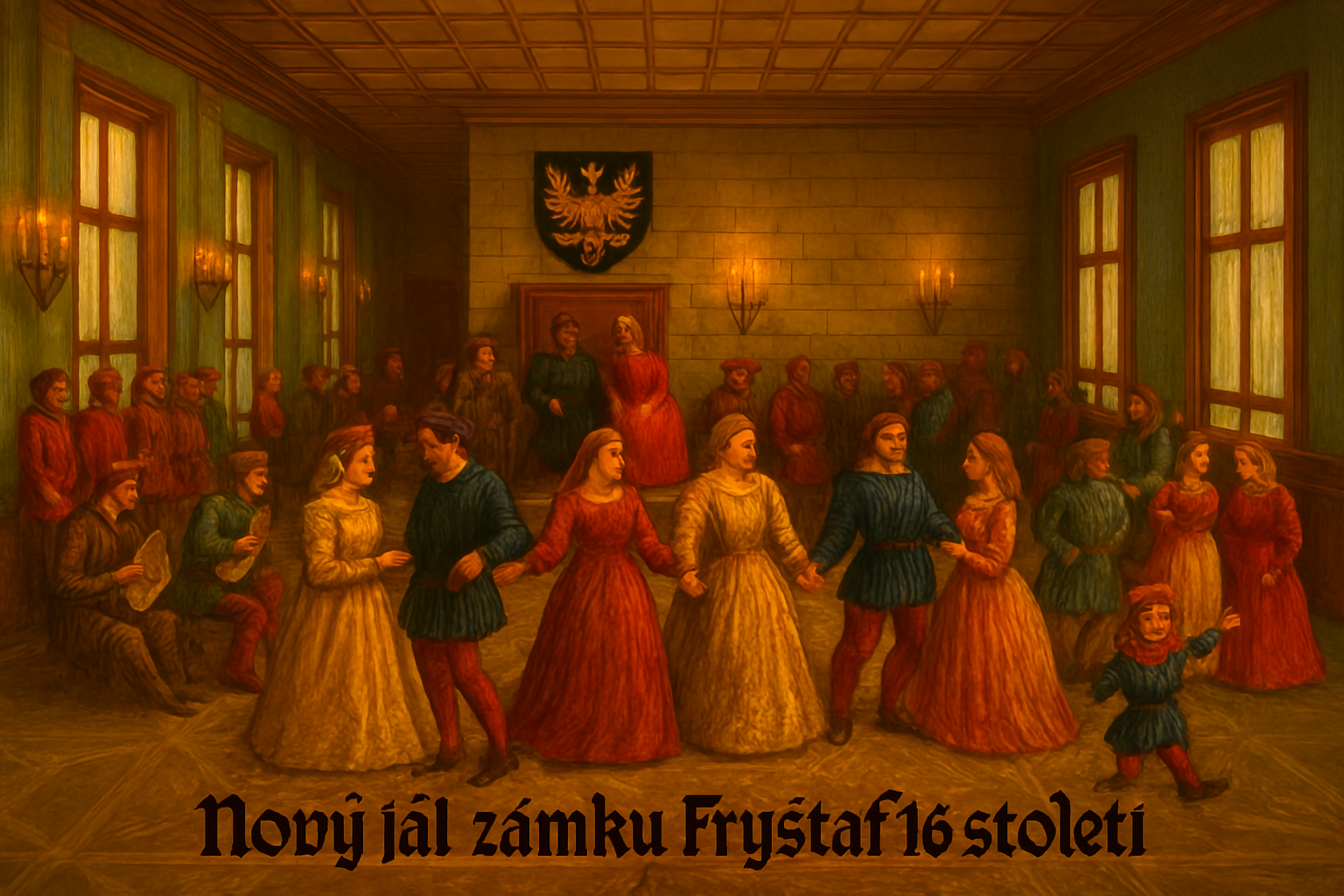

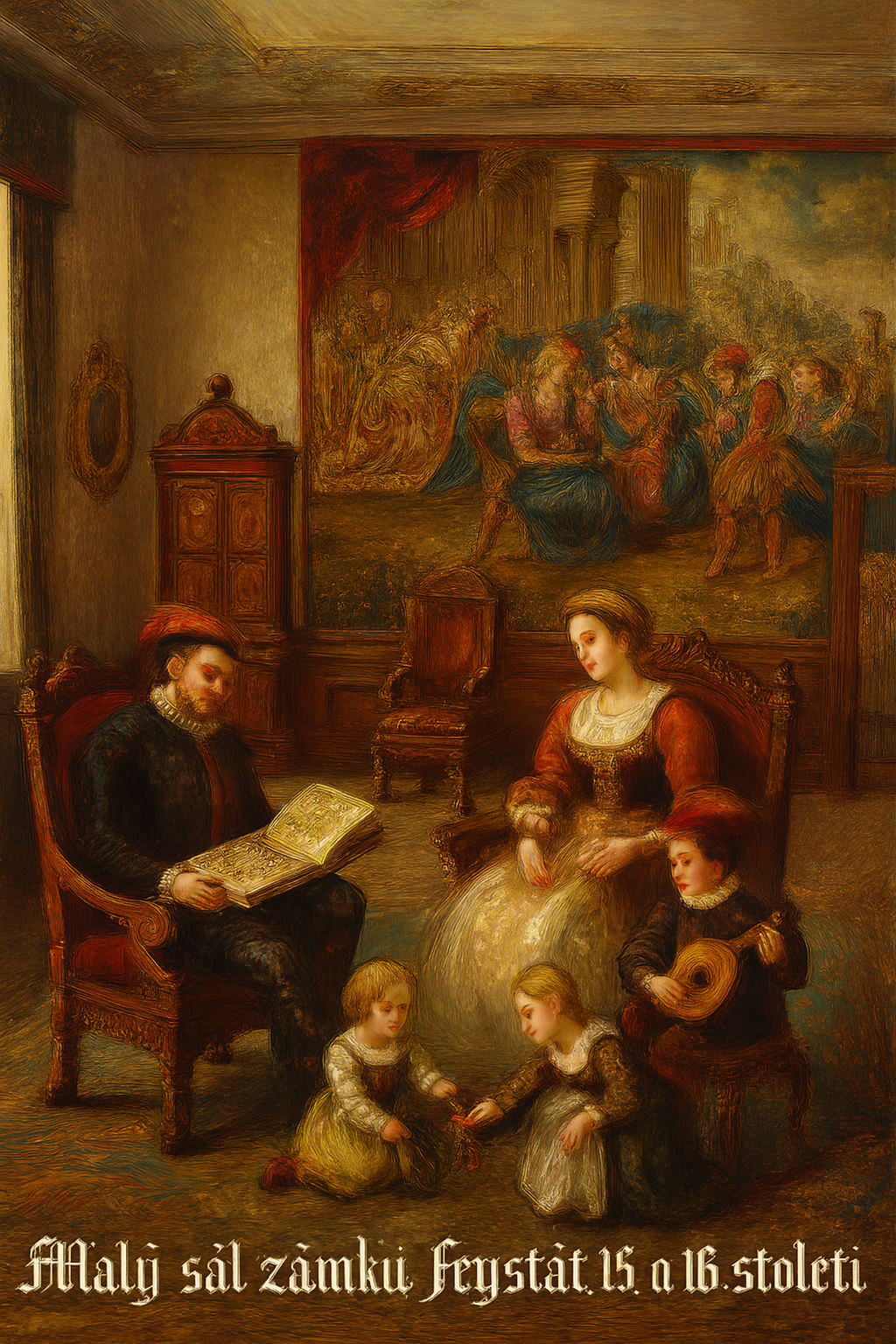
The Duke's Family's Social Moments
Just like the Silesian Duchess, the Silesian Duke was constantly surrounded by a lot of nobles and officials at the Fryštát Hunting Castle, who also needed to eat, drink and have their luxurious clothes washed. This required more and more servants at the castle. In addition to this, there was the castle's fraucimor led by the hofmeister, who was supervised by the Silesian Duchess. The Duchess paid special attention to the kitchen, because the kitchen was the basis of the highly respected etiquette of the Fryštát ducal court. At the end of each day, around 6 p.m., the entire ducal family and the court gathered in the banquet hall for an evening feast. At the Fryštát Hunting Castle, meals were served only twice a day, but they always consisted of several courses and were magnificently served. The nature of the food served varied depending on whether it was morning or evening and whether it was everyday, festive or Lenten. During the feast, social conversation took place, while the serving staff was busy delivering more and more food and drink. Musicians also provided a pleasant atmosphere during the feast, and if they were present, jugglers performed to entertain the feasters during the feast. What was not eaten was given as alms to the poor from the Fryštát Under the Castle. After dinner, the ducal family spent their time together and in the privacy of the Small Hall. They always looked forward to this time, which they had reserved just for themselves. They played board or ball games, sang and danced together, or just talked about what everyone had done during the day. Late at night, the ducal family went to bed in their chambers. The duke and duchess lived separately. The Duke had his chambers in the eastern wing of the castle, the Duchess and her children had their chambers in the adjacent central part of the castle, where there was also a small room for the governess. The courtiers and the steward lived in apartments located on the first floor of the Lottyhaus, while the servants slept in the ground floor chambers of the castle. They went to bed last and got up first.
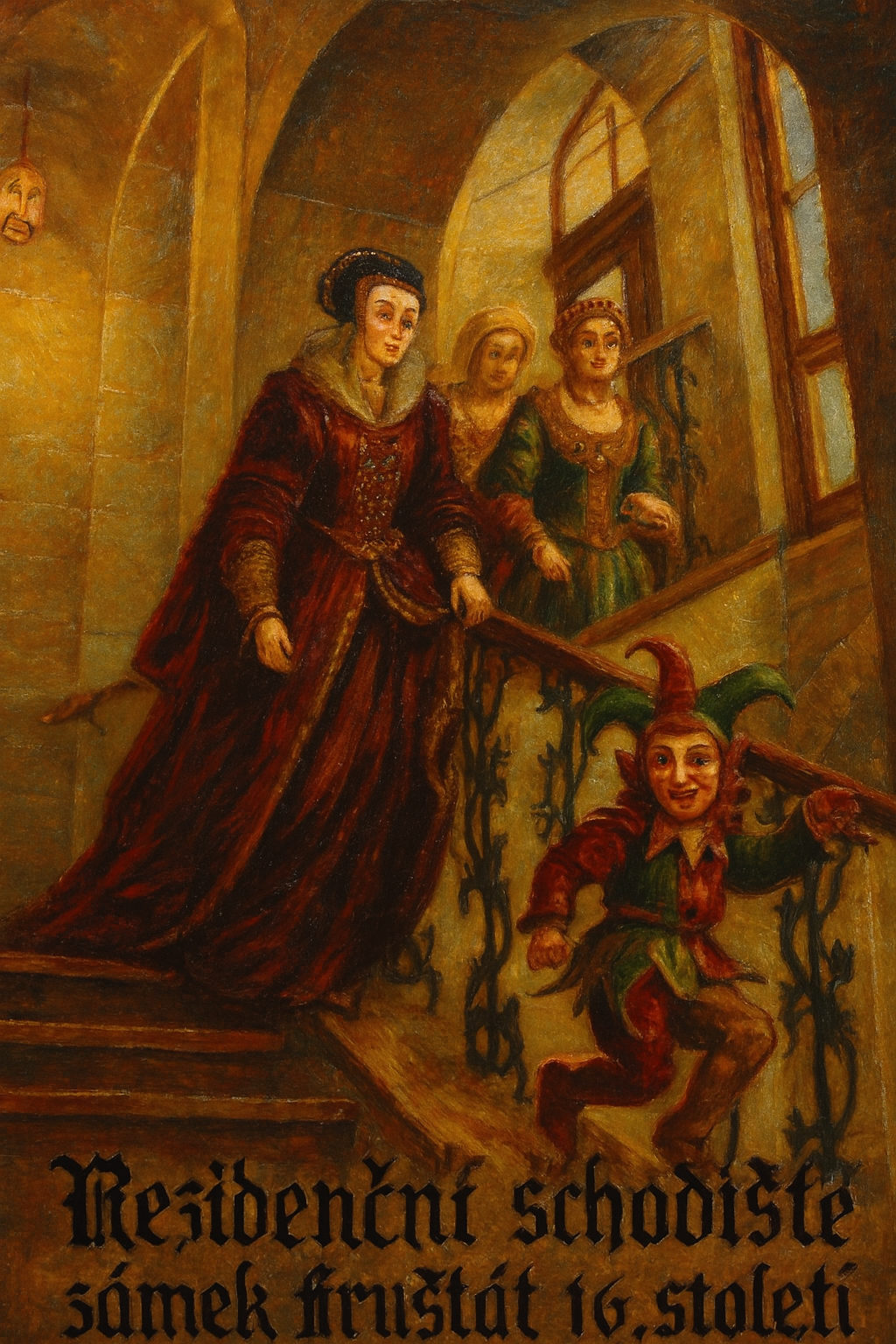


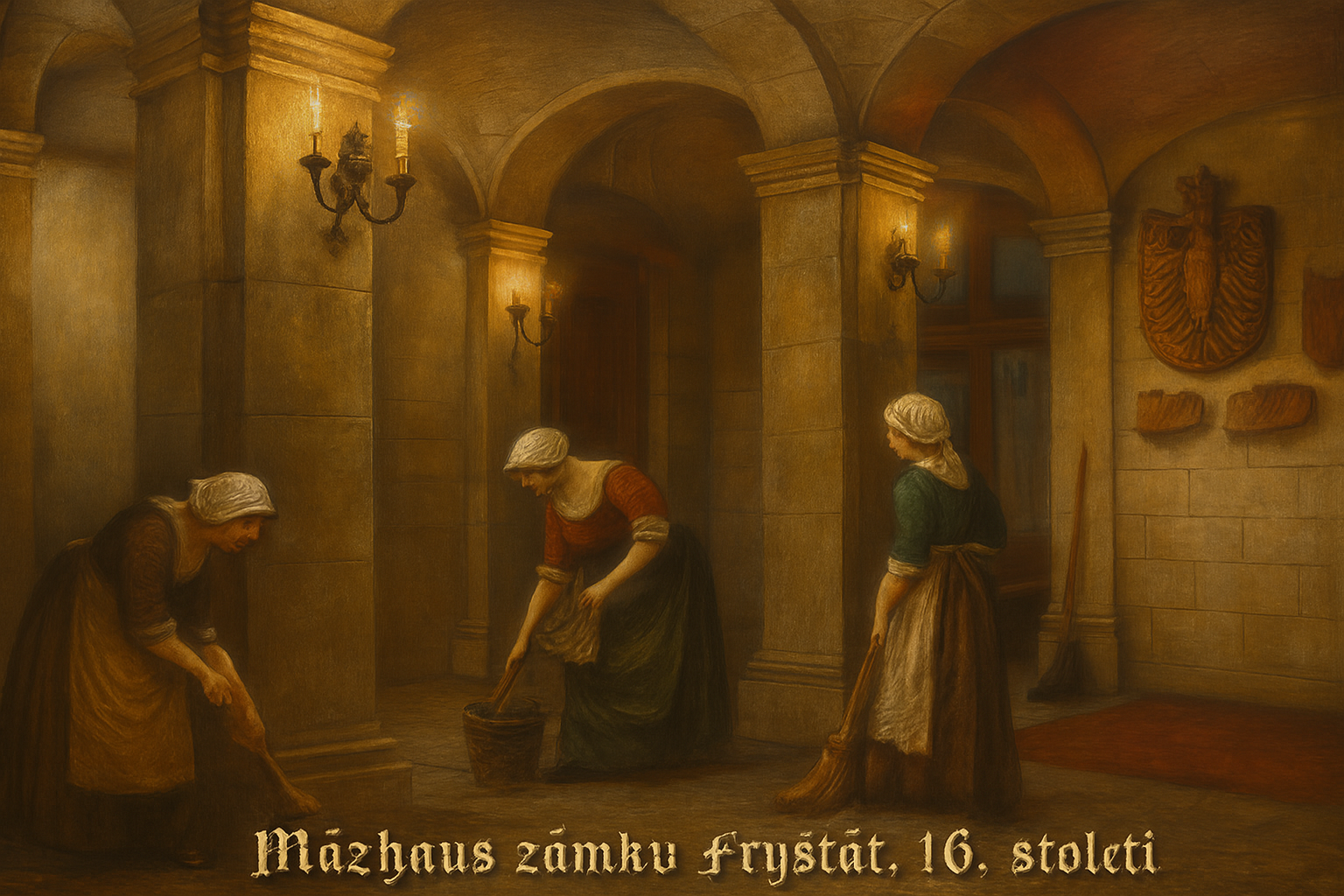
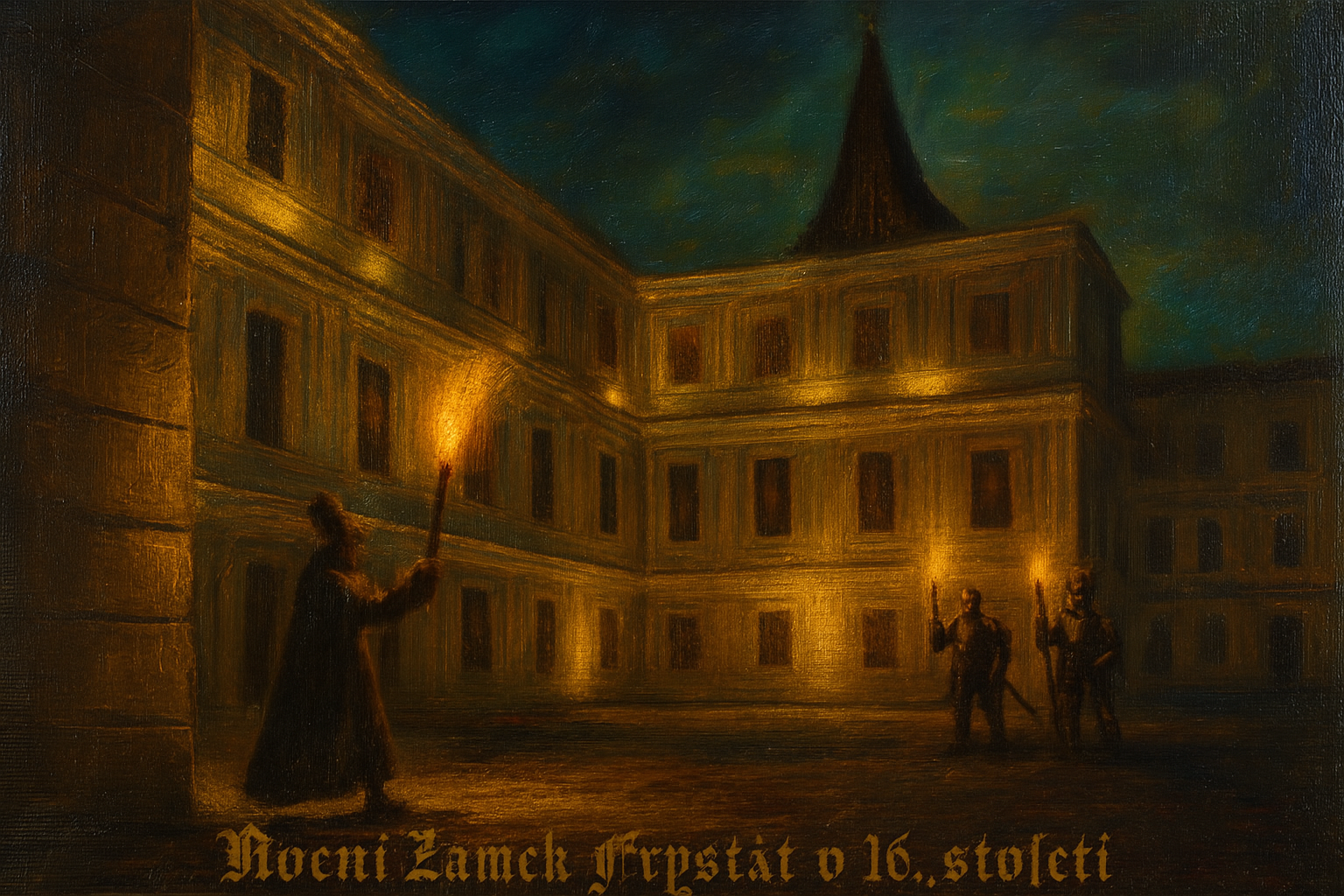
The Silesian Piasts remained at their small but popularhunting castle of Fryštát until their extinction in 1571. Throughout their existence, they were the rulers of Silesia, were the highest-ranking aristocracy in the Kingdom of Bohemia, its only ruling dynasty, and represented the emperor and king of the Kingdom of Bohemia in their absence. Before the knight Wenceslas bids you farewell, you will finally dance a Renaissance dance in front of the castle, popular in the 16th century at the local castle court.
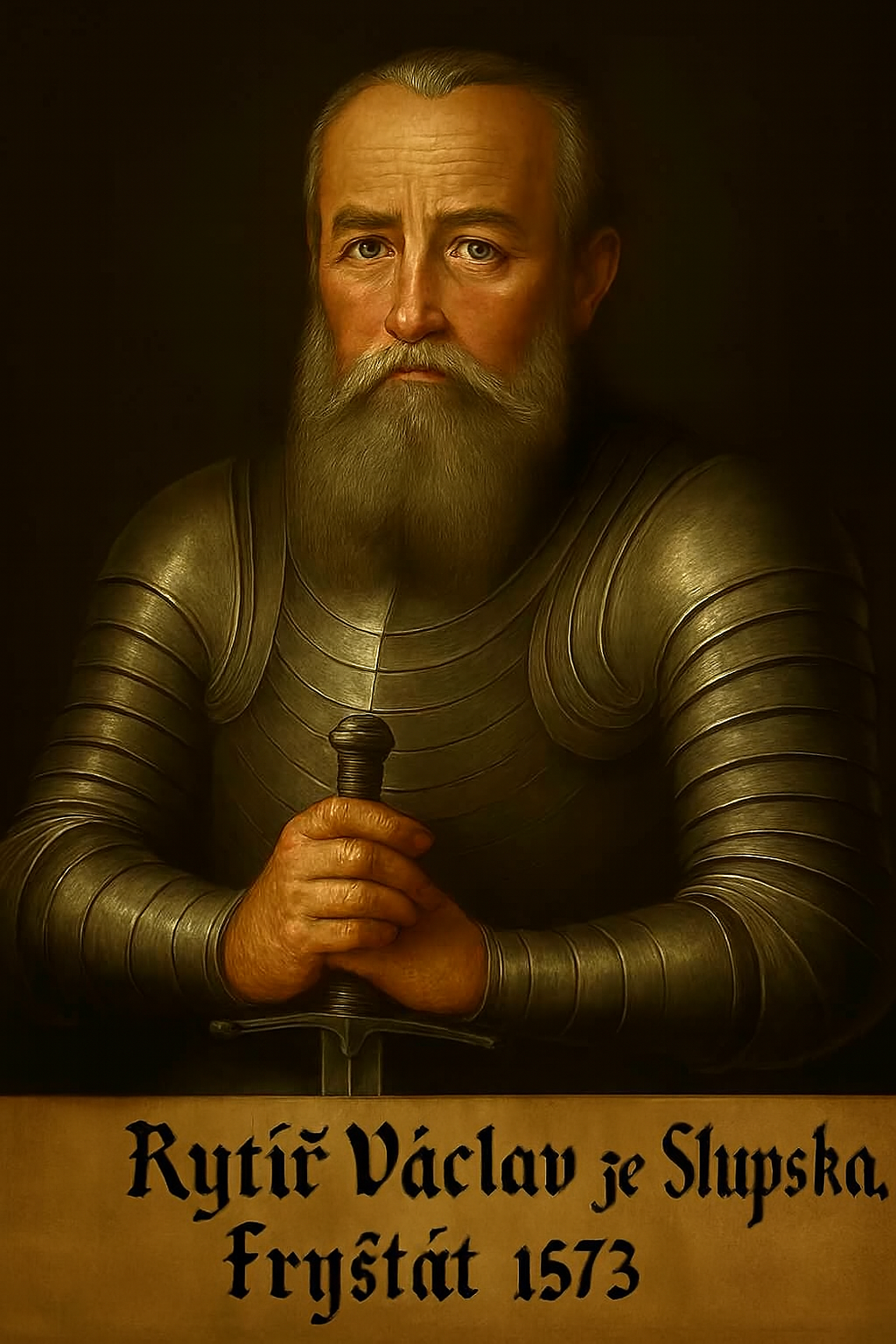
"This is where the tour of the history of the Silesian castle town of Fryštát (does not) end. I showed you the architectural monuments that remember the Silesian dukes, I introduced you to historical law, I taught you music, singing and dancing and you also managed to read and write in the Silesian royal script. And perhaps I managed to take you back in time to the Silesian Middle Ages from the 13th to the 16th century, at least in this way. See the chambers of the Fryštát Castle, its free Castle Gallery, the Lottyhaus Castle House and the National Gallery in the former castle stables. Also visit our beautiful Castle Park with a spa and its surrounding landscape, which were the court hunting grounds of the Silesian aristocracy.
Share our website on social networks and recommend a visit to the Silesian Princely Castle Town of Fryštát in Karviná to your friends. Thank you for your very kind company :-)
Your Court Preceptor, Knight of the Fryštát, Wenceslas."

